
Drugs Without the Hot Air
by
David Nutt
Published 30 May 2012
The decision requires the same sort of weighing up of the harms and benefits as with any drug. Antidepressants and SSRIs Selective serotonin reuptake inhibitors (SSRIs) were first developed in the 1970s. They have become the most-commonly prescribed type of antidepressants worldwide in the last two decades. Common drugs of this type are citalopram (sold under the trade names Celexa and Cipramil), paroxetine (Seroxat), sertraline (Zoloft) and fluoxetine (Prozac). SSRIs work in both depression and anxiety disorders. Depression was previously treated with tricyclic antidepressants such as amitriptyline and imipramine; although SSRIs are no more effective, 3they have fewer side effects and almost no abuse potential.
…
view=Binary 168. www.guardian.co.uk/world/2010/mar /05/korean-girl-starved-online-game 169. www.drugabuse.gov/sites/default/files/ sciofaddiction.pdf 170. info.cancerresearchuk.org/prod_consump/ groups/cr_common/@nre/@sta/documents/ generalcontent/crukmig_1000ast-2989.xls 171. www.pnas.org/cgi/doi/10.1073/pnas.1119598109 172. www.guardian.co.uk/society/2010/oct/ 31/race-bias-drug-arrests-claim 173. www.nytimes.com/2011/06/17/opinion/ 17carter.html 174. www.guardian.co.uk/politics/2007/feb/ 11/uk.drugsandalcohol1 175. www.ukcia.org/research/ ProjectionsOfImpactOfRiseInUse/ ProjectionsOfImpactOfRiseInUse.pdf 176. www.beckleyfoundation.org/2011/11/19/ public-letter-in-the-times-and-guardian-calling-for-a-new-approach 177. www.homeoffice.gov.uk/drugs/drug-law/ 178. www.time.com/time/world/article/ 0,8599,1887488,00.html 179. www.apa.org/science/programs/ conference/2011/harwood.ppt 180. www.msnbc.msn.com/id/35914759/ns/business-world _business/t/wachovia-settle-drug-money-laundering-case 181. www.dailymail.co.uk/news/article-435393/ Exclusive-Cameron-DID-smoke-cannabis.html 182. www.lawrencephillips.net/ Decision_conferencing.html Index Page numbers in bold indicate definitions. 12-step programme, 1, 2 5HT2A receptors and psychedelics, 1 acamprosate, 1 acetylcholine receptors, 1 ACMD, 1, 2, 3, 4, 5, 6, 7, 8, 9, 10, 11, 12, 13, 14, 15, 16, 17, 18, 19, 20, 21, 22 cannabis report, 1 drugs ranked, 1 expert panel for MCDA, 1 purpose, 1 ranking procedure, 1 ranking, limitations, 1 ranking, reaction to, 1 ranking, results, 1 ranking, weights, 1 sacked from, 1 website, 1 acquisitive crime, 1, 2, 3 Portugal, 1 UK statistics, 1 activate, 1 acute, 1 Adams, Tony, 1, 2 addiction, 1 alcohol, Tony Adams, 1 Amy Winehouse, 1, 2 benzodiazepines, 1 brain mechanisms, 1 curing, 1 diagnosing, 1 dynamics and, 1 gambling, 1 habits and, 1 history, 1 kinetics and, 1 memories in, 1, 2, 3 neurotransmitters and, 1 painkillers, to, avoiding, 1 Pete Doherty, 1 preventing, 1 protective factors against, 1 Ritalin and, 1 treatment difficult, 1 treatment with psychedelics, 1 treatment, Alcoholics Anonymous, 1 treatment, evaluating, 1 treatment, future, 1 treatment, pharmacological substitutes, see pharmacological substitutes treatment, Portuguese experiment, 1 treatment, psychological, 1 withdrawal and, 1 addictive personality, 1, 2 protective factors, 1 addictiveness crack, 1 routes of use, 1 smoking, 1 tolerance and, 1 withdrawal and, 1 adenosine coffee produces, 1 receptors, 1 ADHD, 1, 2, 3 Ritalin treatment for, 1 Advertising Standards Authority, 1 advice on drugs, 1 aerobatics, 1 aerosols, see solvents agonist, see also antagonist and pseudo-antagonist, see also full and partial agonists full, 1 partial, 1 agoraphobia and alcohol, 1 AIDS, see HIV/AIDS Ainsworth, Bob, and decriminalisation, 1 Al Qaeda drugs money, 1 alcohol, 1, 2 addiction, 1 addiction endorphins, 1 agoraphobia and, 1 ALDH2 enzyme, 1, 2 alternatives, 1 anxiety and, 1 availability, 1 binge drinking, 1 cirrhosis and, 1, 2 cocaethylene, 1, 2 cocaine combined with, 1 dependence treatment, 1 depressant, 1 endorphins and, 1 ethnic groups, ALDH2 and, 1 GHB treatment for, 1 harms reduction, 1 health priority, 1 inverse agonist, 1 mixing with drugs, 1, 2, 3, 4, 5 price, 1 PTSD, and, 1 road safety, 1 smuggling, 1 sport, drugs in, 1 treatment in Italy and Austria, 1 treatment, LSD in, 1 withdrawal, 1, 2, 3 withdrawal, benzodiazepine treatment for, 1 withdrawal, ibogaine treatment for, 1 alcohol policy, drinks industry, 1 alcoholics anxiety disorders, 1, 2 dopamine receptor, 1 Alcoholics Anonymous, 1, 2, 3, 4, 5, 6 ALDH2 enzyme and alcohol, 1, 2 allergic reaction, 1 Alpert, Richard, 1 Alpha receptors, 1 alternative approach, legislation, 1 licensed drug premises, 1 licensed drug sales, 1 alternatives for farmers, 1 alternatives to War on Drugs, 1 Portuguese approach, 1 Ameisen, Olivier, 1 amines, 1 amitriptyline, 1 amphetamines, 1 child soldiers given, 1 performance enhancers, 1 stimulant, 1 war, in, 1 amputation of limbs from smoking, 1 anabolic, 1 anabolic steroids, 1, 2, 3 corticosteroids, difference, 1 effects, 1 harms, 1 harms reduction, 1 HIV/AIDS, treatment in, 1 overdose, unlikely, 1 performance enhancers, 1 sex hormones, 1 suicide and, 1 uses, 1 anabolic-androgenic steroids, 1 anadenanthera peregrina, 1 analgesic-induced headaches, 1 analogues, synthetic, 1 ancient Greece Elysian Fields, 1 mushrooms, 1 Andes, cocaine in, 1 androgenic, 1 anhedonia, 1 antagonist, 1, 2, 3 vaccines, anti-drug, 1 anthrax, 1 anti-drug vaccines, 1 anti-inflammatory, corticosteroids, 1 anti-stress corticosteroids, 1 antibody for cocaine overdose, 1 antidepressants, 1 how they work, 1 tricyclic, 1 anxiety addiction and, 1 alcohol and, 1 benzodiazepines for, 1 cannabis and, 1 depressants for, 1 disorder in alcoholics, 1, 2 GABA receptors, low levels, 1 neurotransmitters and, 1 new drugs for, 1 panic attacks, 1 PTSD, in, 1 reduction in terminal illness, 1 treatment outcomes, 1 treatment, SSRIs, 1 archery, 1 ASA, 1 asphyxiation from solvents, 1 aspirin, 1 side effects, 1 aspirin, side effects, 1 Ativan, 1 atom bomb, spiritual antidote to, 1 attention deficit hyperactivity disorder, see ADHD auditory effects, schizophrenia, 1 Australia, decriminalisation of drugs in, 1 ayuesca, psychedelic, 1 baby, starved by parents, 1 baclofen, 1 bagging, route of use, 1 ban, temporary order, 1 banisteriopsis caapi, 1 banks, money-laundering, 1 barbiturates, 1, 2, 3 PTSD, and, 1 suicide, 1 Barcelona, 1 battle fatigue, 1, see also PTSD BCS, see British Crime Survey benefits cannabis, 1 mephedrone, 1 psychedelics, 1 Benzedrine, 1, 2 benzodiazepines, 1, 2 addiction, 1 alcohol treatment, in, 1 benefits, 1 depressant, 1 endogenous, 1 GABA receptors, 1 harms, 1 how they work, 1 Librium, 1 overdose, safer, 1 physical dependence, 1 rebound less likely, 1 side effects, few, 1 suicide and, 1 withdrawal, 1 benzylpiperazine, 1 Bernays, Edward, 1 beta blockers in sport, 1 Betts, Leah, 1, 2 bhang, 1, 2 binge cocaine, 1 drinking, 1, 2, 3 LSD, impossible, 1 tolerance and, 1 treatment, 1 Bird, Sheila, Professor, 1 bladder, ketamine, 1 Blair, Tony, 1 blind trial, 1 Bolivia, 1, 2 coca, 1, 2 bong, 1 brain addiction mechanisms, 1 default mode, 1 brain chemicals, 1 receptors, 1 Brain Science, Addiction and Drugs programme, 1 dispense with care scenario, 1 high performance scenario, 1 neighbourhood watch scenario, 1 treated positively scenario, 1 Brake, Tom, MP, 1 Breakdown Britain, 1, 2 British Aerobatic Association, 1 British Crime Survey, 1 Brokenshire, James, 1 bromides, PTSD, and, 1 bubbles, see mephedrone buprenorphine, 1, 2 advantages, 1 blocks on-top heroin use, 1 early problems, 1 effects, 1 heroin susbstitute, 1 how it works, 1 morphine alternative, 1 opioid, 1 origin, 1 partial agonist for heroin, 1 pharmacological substitute, as, 1 bupropion, 1 burglary, 1, 2 Burrows, David, 1 butane, see also solvents, 1 Bwiti cult, 1 BZP, 1 caffeine Coca-Cola, 1 coffee, 1 stimulant, 1 withdrawal, 1, 2 calmness, drugs for, 1 Camden, 1 “Cameron approach”, 1 Cameron, David, MP, 1, 2, 3, 4, 5 Cameroon, 1 Campral, 1 cancer, see also terminal illness ecstasy in treating, 1 cannabis, 1, 2 ACMD report, 1 anxiety and, 1 as medicine, historical, 1 as medicine, present, 1 benefits, 1 cluster headache and, 1 decriminalisation of drugs, 1 different forms compared, 1 downgrading, 1, 2 farmers required to grow, 1 gateway to more harmful drugs, 1 harms, 1 harms, compared to prison, 1 hemp, 1 heroin instead of, 1 multiple sclerosis and, 1, 2, 3 munchies, the, 1 psychoactive ingredient, 1 re-upgraded, 1 receptors, 1, 2, 3, 4 routes of use, 1 schizophrenia, 1, 2 terminal illness, for, 1 therapeutic drug, as, 1 tinctures, 1 upgrading, 1, 2 cannabis indica, 1 Carlin, Eric, 1, 2 Carnage UK, 1 Carter, Jimmy, 1 Case for Heroin, The, 1 catechol O methyl transferase, see COMT cathinones, 1 banned, 1 naphyrone, 1 synthetic, 1 CBD, 1, 2, 3 CBT, 1, 2 Celera Genomics and genetic sequencing, 1 Celexa, 1 Centre for Social Justice, 1 Champix, 1 Champs Elysees, 1 chemicals, brain, 1 chewing, routes of use, 1 Chief Medical Officer, 1 child soldiers given amphetamines, 1 children advice to, 1 age to advise at, 1 Chinese, alcohol and, 1 cholecystokinin, 1 chronic, 1 cigarettes advertising, 1 generic packaging, 1 invention, 1 labelling, 1 wars, in, 1 Cipramil, 1 cirrhosis, 1 cirrhosis and alcohol, 1, 2 cirrhosis and khat, 1 citalopram, 1 civil liberties, 1 Clarke, Ken, 1 Class of drug, see also downgrading, see also upgrading too high, perverse consequences, 1 kinetics affect, 1 prison sentences by, 1 purpose, 1 reviewing, 1 social context and, 1, 2 classification of harms, 1, 2 climate change, 1, 2 Clinton, Bill, 1 clonidine, 1 clostridium, 1 cluster headache cannabis and, 1 psychedelics for, 1, 2 CMO, see Chief Medical Officer CNN, 1 co-ingestants, 1, 2 coca, 1 Bolivia, 1, 2 Coca-Cola and caffeine, 1 Coca-Cola and cocaine, 1 cocaethylene, 1 cocaine, see also crack, 1, 2 addiction endorphins, 1 alcohol combined with, 1 binge, 1 Coca-Cola, 1 cocaethylene, 1, 2 crack compared, 1 crop destruction, 1, 2, 3 deaths in drugs war, 1 effects, 1 environmental damage, 1 farmers, 1 freebase is crack, 1 history, 1 how it works, 1 hydrochloride, 1 insecticide, as, 1 international damage, 1 manufacturing process, 1 nose, 1 overdose mechanism, 1 overdose, antibody for, 1 political damage, 1 powder, 1 rainforests affected, 1, 2 routes of use, 1, 2 stimulant, 1 vaccine, anti-, 1 wine, see Vin Mariani Cockburn, Joslyne, 1 codeine, 1, 2, 3, 4, 5 cough medicine, removed, 1 headaches induced, 1 opioid, 1 coffee adenosine, produces, 1 caffeine, 1 cognition enhancer, as, 1 effects, 1 history, 1 how it works, 1 origin, 1 coffee shop model, Netherlands, 1, 2 cognition enhancer coffee as, 1 cognition enhancers, 1 common, scenario, 1 economic divide, 1 exams, in, 1 memory and, 1 modafinil, 1 uses, 1 cognitive behavioural therapy, see CBT Colombia, 1, 2 Columbus, Christopher, 1 compensating farmers, 1 COMT dopamine and, 1 noradrenaline and, 1 pain sensitivity, 1 types, 1 consent, see, informed consent contraceptive pill, 1 Convention on Psychotropic Substances, 1 corruption, 1 corticosteroids anabolic steroids, difference, 1 muscle wasting with, 1 cortisol, 1 cost crime, drug-related, 1 drug habits, of, 1 War on Drugs, 1 cot death, see Sudden Infant Death Syndrome cough medicine, codeine removed, 1 Counterblast to Tobacco, 1 crack, see also cocaine, 1 addictiveness, 1 cocaine compared, 1 dopamine receptors and, 1 harms, 1 kinetics, 1 origin, 1 purity, 1 routes of use, 1 vaporisation temperature, 1 craving, 1 creativity enhanced by psychedelics, 1 CRF, 1 crime, see also acquisitive crime drug-related, cost, 1 statistics, 1 Crimean War, cigarettes in, 1 criminalisation effects, 1 of sick end disabled, 1 smoking, 1 supply reduction, 1 criteria for harms, 1, 2 crop destruction, 1 cocaine, 1 crop destruction, cocaine, 1 cultural context, see social context curing addiction, 1 cycling, 1 D-cycloserine, 1, 2 Daily Mail, the, 1, 2, 3 DALY, 1 DARE programme, 1 costs, 1 does not work, 1 data set, minimum required, 1 day with drugs, 1 day without drugs, 1 decriminalisation of drugs Ainsworth, Bob, 1 Australia, 1 cannabis, 1 legalisation differs, 1 Mowlam, Mo, 1 Portugal, 1, 2, 3 UK independence party, 1 UN Conventions and, 1 default mode of brain, 1 Delgarno, Phil, 1 demand reduction statistics, 1 War on Drugs, 1 demographic imbalance, 1 demographic shifts, 1 dependence, see physical dependence, psychological dependence depressants, 1, 2 alcohol, 1 anxiety, for, 1 benzodiazepines, 1 “downers”, 1 GHB, 1 depression psilocybin, 1 vicious cycle, 1, 2 designer drugs mephedrone, 1 problems legislating for, 1 development of new drugs, 1 impediments, 1 social implications, 1 War on Drugs hinders, 1 diabetes, 1 diabetes, dietary treatment, 1 diabetes, insulin treatment, 1 diagnosing addiction, 1 dietary treatment, diabetes, 1 DIMS, Netherlands, 1, 2 disability-adjusted life year, 1 discriminatory policing, 1 disease, infectious, War on Drugs and, 1 disease-modifying agents, 1 dispense with care scenario, 1 disrepute, law into, 1 dissuasion board, 1 diverting prescription drugs, 1, 2, 3, 4, 5, 6 Ritalin, 1 DMT, see also ayuesca, 1 psychedelic, 1 Doblin, Rick, 1 Doherty, Pete, 1, 2 Doll, Richard, 1, 2 Donaldson, Sir Liam, 1 Doors of Perception, The, 1 dopamine, 1 COMT and, 1 levels in withdrawal, 1 nicotine withdrawal, in, 1 receptors, 1, 2, 3, 4, 5, 6, 7 receptors in alcoholics, 1 receptors vicious cycle, 1 receptors, crack and, 1 receptors, methamphetamine and, 1 receptors, monkey, 1 receptors, stimulants and, 1 reuptake, 1 reuptake inhibitor, Ritalin, 1 reward chemical, 1 tobacco releases, 1 transporters, 1 double-blind trial, 1 down-regulating receptors, 1, 2 downgrading ecstasy recommendation, 1, 2 cannabis, 1, 2 purpose, 1 Drake, Sir Francis, 1 drinking, routes of use, 1 drinks industry alcohol policy, 1 misleading messages, 1 driving, drugs and, 1 Drone, see mephedrone drug, 1 defined, 1 efficacy, 1 Drug Abuse Resistance Education, see DARE Drug Information and Monitoring System, see DIMS, Netherlands drug ranking, Netherlands, 1 drug tourism, 1 drug trials informed consent, 1 drug trials, informed consent, 1 drug-related factors, 1 drugs, see also performance enhancer anti-insect defence, 1 Classes, see Class of drug daily cycle, 1, 2 different forms, why, 1 evolution, 1 future developments, 1 harms related to physical form, 1 history, 1 mixing, 1 mixing with alcohol, 1, 2, 3, 4, 5 mixing, dangers, 1, 2, 3 mixing, speedballs, 1 neurotransmitters, mimic, 1 performance enhancing, see performance enhancers plant origin, 1 prescription, see prescription drugs profit margin, 1 psychedelic, see psychedelics reasons for taking, 1 sport, in, see sport, drugs in why people take, 1 withdrawal, 1 drugs in war, 1 amphetamines, 1 morphine, 1 prevalent, 1 recovery from, 1 unsanctioned, 1 Drummond, Colin, 1 Duncan Smith, Iain, 1 Dutch, see Netherlands Dutch courage, 1 dynamics, 1 addiction and, 1 mephedrone, 1 dynorphins, 1 dyslexia, 1 early-onset Parkinson’s, 1 Easter Parade, 1 eating overdose, increases risk of, 1 routes of use, 1, 2 economic divide and cognition enhancers, 1 economic growth low, scenario, 1 slower, scenario, 1 strong, scenario, 1 ecstasy, 1, 2 cancer, and, 1 dangers of, 1 death from, 1 downgrade recommended, 1, 2 effects, 1 empathy, first called, 1 harms, 1, 2 media reaction, 1 Parkinson’s and, 1 precautions, water, 1 properties, 1 PTSD, and, 1, 2 serotonin and, 1 withdrawal, 1 education, immediate downsides, about, 1 efficacy of a drug, 1 Egypt, 1 electron, 1 Elysian Fields, 1 Elysian fields, 1 empathogenic, 1 empathogens, 1 empathy, see ecstasy emphysema, 1 endocannabinoid system, 1, 2 endocannabinoids, 1 endogenous benzodiazepines, 1 endorphins, 1, 2, 3, 4, 5, 6, 7, 8, 9 alcohol addiction, 1 alcohol and, 1 cocaine addiction, 1 heroin addiction, 1 receptor and heroin, 1 receptors, 1, 2, 3, 4 reward chemical, 1 endoscopies, 1 endozapines, 1 energisation effect, suicide, 1 enkephalins, 1 entheogenic, 1, 2, 3 environmental damage, cocaine, 1 Environmental Protection Agency, 1 enzymes, 1 ephedra, 1 ephedrine, 1 epidemic, mental-health, 1 epilepsy, 1, 2 equasy, 1 defined, 1 equine addiction syndrome, see equasy ergotamine and Salem witch trials, 1 ergotamine, LSD derived from, 1 Estimating Drug Harms: A Risky Business, 1 ether, 1 ethical issues, genetic sequencing, 1 ethnic groups, ALDH2 and alcohol, 1 Eton, David Cameron at, 1 evidence-based policy, 1, 2, 3, 4, 5 evolution of drugs, 1 exams, cognition enhancers in, 1 experimentation, delay to reduce harms, 1 farmers alternatives for, 1 cannabis, required to grow, 1 coca, 1 compensating, 1 Pakistan, alternatives for, 1 supporting, 1 Thailand, alternatives for, 1 unequal trade terms, 1 flumazenil, 1 flumazenil as tracer, 1 fluoxetine, 1 fly agaric mushrooms, 1 flying, drugs and, 1, 2 fMRI, 1 Foresight programme, 1 pharmaceutical industry, 1 stakeholders, 1 Frank Statement to Cigarette Smokers, 1 freebase, 1 freedom to choose addiction and, 1 impact on others, 1 objective information required, 1 Freud, Sigmund, 1, 2, 3, 4, 5 Freudian psychoanalysis, 1 Frischer, Martin, 1 full agonist, 1 heroin, for, 1 functional MRI, 1 future drugs, 1 issues, 1 GABA glutamate, blocked by, 1 memory formation, 1 receptors, 1, 2, 3, 4, 5, 6, 7, 8, 9, 10, 11, 12 GABA receptors anxiety and, 1 benzodiazepines, 1 neuroimaging, 1 overdose, 1 tolerance and, 1 withdrawal and, 1 Gabon, 1 Gaedecke, Friedriche, 1 gambling addiction, 1 gangs, Vietnamese, 1 ganja, 1 gap between neurons, see synapse gateway to more harmful drugs cannabis, 1 prison, 1 GBL, 1, 2, 3, 4 generic packaging, cigarettes, 1 genetic sequencing, 1 Celera Genomics, 1 ethical issues, 1 risks, 1 Geneva International Convention on Narcotics Control, 1 genotyping, see genetic sequencing GHB, 1, 2, 3, 4, 5, 6, 7, 8 alcohol treatment, in, 1 dangers, 1 depressant, 1 tolerance to, 1 Gilmore, Sir Ian, 1 Gin Craze, 1, 2, 3 glue, see solvents glutamate GABA, blocks, 1 memory formation and, 1 receptors, 1 grey campaigners, 1 Guardian, the, 1, 2, 3, 4, 5 Gucci, profit margin, 1 Guinea Bissau, 1 Guinea-Bissau, 1 Guinea-Bissau, collapsing, 1 Guy’s and St Thomas’ Hospital, 1 habits and addiction, 1 haemoglobin, 1 half-life, 1 hallucinations, 1, 2, 3, 4, 5, 6 schizophrenia, 1 Hargreaves, Patrick, 1 harms 16 types, 1 9 types, 1, 2 anabolic steroids, 1 cannabis, 1 classification, 1, 2 crack, 1 ecstasy, 1, 2 kinetics affect, 1 measuring, 1 measuring, political reaction, 1 measuring, purpose, 1 mephedrone, 1 others, to, 1 psychedelics, 1 related to form of drug, 1 routes of use, 1 users, to, 1 harms reduction alcohol, 1 alcohol alternatives, 1 alcohol availability, 1 alcohol binge drinking, 1 alcohol dependence, 1 alcohol price, 1 alcohol priority, 1 alcohol, road safety, 1 anabolic steroids, 1 delay experimenting, 1 smoking ban, 1 smoking restrictions, 1 War on Drugs, 1 Harrods sold cocaine and heroin, 1 Harvard, Leary Timothy at, 1 hash, skunk, compared, 1 headaches, see also cluster headache analgesic-induced, 1 codeine-induced, 1 Hearst, William Randolph, 1 hemp, 1 hepatitis, injecting, risk, 1, 2 heroin, 1, 2, 3, 4 £300/week, 1 £500/week, 1 addiction endorphins, 1 addiction, Pete Doherty, 1 buprenorphine blocks on-top use, 1 cannabis, instead of, 1 endorphin receptor targeted, 1 full agonist for, 1 methadone and withdrawal, 1 methadone blocks on-top use, 1 morphine alternative, 1 Netherlands, in, 1 opioid, 1 opium, from, 1 origin of name, 1 overdose, benzodiazepines and, 1 painkiller, as, 1 painkiller, is most effective, 1 partial agonist for, 1 pharmacological substitutes, 1 prisoners overdose on, 1 receptors affected, 1 synthesised 1874, 1 therapeutic, as, 1 treatment for, 1 treatment with heroin itself, 1 treatment, British model, 1 treatment, Switzerland, 1 withdrawal, 1 heroin susbstitute buprenorphine, 1 methadone, 1 high performance scenario, 1 history cocaine, 1 coffee, 1 drugs, 1 LSD, 1 tobacco, 1 HIV/AIDS anabolic steroids treatment, 1 injecting, risk, 1, 2, 3 reduced, Portuguese experiment, 1 Russia, 1 TurBo-HIV, 1 Hofmann, Albert, 1 Holland, see Netherlands Holmes, Sherlock, 1 Home Secretary, see also Johnson, Alan, see also Smith, Jacqui, 1, 2 horse tranquilliser, 1 horse-riding ecstasy, comparison, 1, 2 Parkinson’s and, 1 huffing, route of use, 1 Human Genome Project, 1 Human Rights Watch, 1 Huxley, Aldous, 1, 2 hydrochloride, cocaine, 1 hydrochlorides, vaporisation temperature, 1 hypertension, rebound and, 1 hyponatraemia, 1, 117 ibogaine, 1, 2 addiction treatment, in, 1 as wit hdrawal treatment, 1 psychedelic, 1 ibuprofen, 1 imipramine, 1 impotence, 1 India Kerala and opiates, 1 morphine as painkiller, 1 Indian Hemp Drugs Commission report, 1 informed consent NHS, 1 informed consent, drug trials, 1 inhaling routes of use, 1 inhaling, routes of use, 1 initial misery with SSRIs, 1 injecting dangers of, 1 hepatitis risk, 1, 2 HIV/AIDS risk, 1, 2, 3 other risks risk, 1 routes of use, 1 insecticide cocaine as, 1 mephedrone, 1 insects, drugs defend against, 1 insulin treatment, diabetes, 1 international damage from cocaine, 1 Inuit, alcohol and, 1 inverse agonist, 1 ISCD, 1, 2, 3, 4, 5, 6, 7, 8, 9 foundation, 1 minimum dataset, 1 website, 1 isotope, see radioactive isotope Jackson, Toby, 1 jail, see prison Johnson, Alan, 1, 2, 3, 4, 5 Johnson, Lyndon, 1 Just Say No, 1 Kerala opiates policy, 1 ketamine, 1, 2 bladder, 1 Class, 1 don’t mix, 1 side effects, 1 tolerance, 1 ulcerative cystitis, 1 Vietnam, in, 1 khat, 1, 2 cirrhosis and, 1 mules, 1 perverse consequences if banned, 1 stimulant, 1 kicking the habit, derivation, 1 kids, see children kinetics, 1 addiction and, 1 Class and, 1 crack, 1 harms and, 1 mephedrone, 1 routes of use, and, 1 King Charles II, 1 King James I, 1 King Philip II, 1 King, Les, 1 Kleps, Arthur, 1 knowledge nomads, 1 Koller, Karl, 1 Korea, 1 Korean couple starve baby, 1 Lansley, Andrew, 1 laudanum, 1, 2 law brought into disrepute, 1 law, patent, 1 League of Nations, 1 Leary, Timothy, 1 LSD, 1 mushrooms, magic, 1 psilocybin, 1 legal high, 1, 2, 3, 4, 5, 6 legalisation v decriminalisation, 1 legislation alternative approach, 1 designer drugs, 1 libertarians, 1, 2 Rand, Ayn, 1 liberty caps, 1 Librium alcohol withdrawal, for, 1 benzodiazepines, 1 licence to take psychedelics, 1 licensed drug premises, 1 licensed drug sales, 1 lifespan reduction, smoking, 1 lime, 1 London School of Economics, 1 LSD, 1 discovery, 1 ergotamine, derived from, 1 history, 1 psychedelic, 1 psychiatry and, 1 recreational drug, origins, 1 Saskatchewan hospital, 1 therapeutic, as, 1, 2 LSD – The Problem Solving Psychedelic, 1 LSE, 1 lung cancer Rand, Ayn, 1 smoking, causes, 1 tobacco industry response, 1 lymphocytes, 1 lysergic acid, 1 lysergic acid diethylamide, see LSD M-cat, see mephedrone magic mushrooms, see mushrooms magnetic resonance imaging, 1 Mail on Sunday, the, 1 Major, John, 1 MAPS, 1 Maria, Antonio Maria, 1 Mariani wine, see Vin Mariani Mariani, Angelo, 1, 2 Marsden, John, 1 MCDA, 1 ACMD expert panel, 1 defined, 1 MDMA, see ecstasy Measham, Fiona, 1, 2 measuring harms, see harms, measuring media, ecstasy, and, 1 Medicare, 1 Medicines Act, 1 Medicines and Healthcare products Regulatory Agency, 1 memories addiction, in, 1, 2, 3 phobias and, 1 pleasure-seeking and, 1 PTSD, in, 1 stressful, benzodiazepines for, 1 memory and cognition enhancers, 1 memory formation cannabis impairs, 1 GABA, and, 1 glutamate and, 1 neurotransmitters and, 1 mental performance improvement, see cognition enhancers mental-health epidemic, 1 “meow meow”, see mephedrone mephedrone, 1, 2 banned, 1 banned, why, 1 benefits, 1 designer drugs, 1 dynamics, 1 harms, 1 insecticide, as, 1 kinetics, 1 nicknames, 1 origin, 1 plant food, 1 Scunthorpe Two, 1, 2 serotonin and, 1 stimulant, 1 suicide and, 1 mescaline, 1 Huxley, Aldous, 1 psychedelic, 1 met-met COMT type, 1 methadone, 1, 2 blocks on-top heroin use, 1 effects, 1 full agonist for heroin, 1 heroin susbstitute, 1 heroin withdrawal, avoids, 1 how it works, 1 opioid, 1 origin, 1 overdose risk with heroin, 1 pharmacological substitute, as, 1 problems, 1 withdrawal, 1 methamphetamine, 1 dopamine receptors and, 1 stimulant, 1 Mexico, 1, 2 violence in, 1 MHRA, 1 mind-manifesting, 1, 2 minimum data set required, 1 minimum data set, withdrawal and, 1 minimum dataset, 1 Minister for Crime Prevention, 1 Misuse of Drugs Act, 1, 2, 3 ACMD and, 1 cathinones ban, 1 correct operation, 1 mephedrone ban, 1 purpose, 1 suggested change, 1, 2 unfit for purpose, 1 mixing drugs or alcohol, see drugs, mixing Mixmag magazine, 1, 2 modafinil, 1, 2, 3 cognition enhancers, 1 exams, in, 1 Mogadon, 1 money-laundering, 1, 2 banks, 1 Panama, 1 monkeys, dopamine receptors, 1 Monroe, Marilyn, suicide, 1 Moore v Regents of the University of California, 1 moral issues, 1 morphine, 1, 2, 3 buprenorphine alternative for, 1 chronic pain for, 1, 2, 3 dose inadequate, Ukraine, 1 heroin alternative for, 1 not available, India, 1 opium, from, 1, 2 wars, in, 1 Mowlam, Mo, 1 MRI, 1 MS, see multiple sclerosis mules harm to, 1 imprisonment, 1 khat, 1 Mullis, Kary, 1 multi-criteria decision analysis, see MCDA Multidisciplinary Association for Psychedelic Studies, see MAPS multiple sclerosis cannabis and, 1, 2, 3 Sativex and, 1 munchies, the, 1 muscle tremor, 1 muscle wasting, corticosteroids, 1 muscle, drugs to increase, 1 mushrooms, 1, 2 ancient Greece, 1 effects, 1 fly agaric, 1 Netherlands, from, 1 psychedelic, 1 why banned in UK, 1 nalmefene, 1, 2 naltrexone, 1, 2 naphyrone, 1 narcostates, 1 National Addiction Centre, 1 National Health Service, see NHS National Union of Students, 1 Native American Church, 1, 2, 3 Native Americans, 1 alcohol and, 1 natural opiates, 1 needle exchange beneficial effects, 1, 2 none in Russia, 1 neighbourhood watch scenario, 1 Netherlands coffee shop model, 1, 2 little heroin use, 1 mushrooms, magic, 1 Netherlands drug ranking study, 1 neuroimaging, 1 GABA receptors, 1 neuron, 1, 2 neurotransmitters, see also endorphins, see also receptor, 1, 2, 3, 4, 5, 6, 7, 8, 9, 10 addiction and, 1 anxiety and, 1 drugs mimic, 1 memory formation and, 1 on/off switch, 1, 2, 3 new drugs, see development of new drugs New York Times, The, 1, 2 NHS, 1, 2 informed consent, 1 NIAAA website, 1 nicotiana tabacum, 1 nicotine dopamine and withdrawal, 1 schizophrenia and, 1 vaccine, anti-, 1 withdrawal, 1, 2 nicotinic acid diethylamide, 1 NIDA website, 1 Nixon, Richard, 1, 2, 3 No. 10 Downing Street Strategy Unit, 1, 2 Freedom of Information Act, 1, 2 noradrenaline, 1, 2, 3, 4, 5, 6, 7, 8 COMT and, 1 norepinephrine, see noradrenaline North Battleford, see Saskatchewan hospital nose, cocaine, 1 Nutt, David Radio 1 interview, 2 sacked from ACMD, 1 Obama, Barack, 1, 2, 3 Observer, the, 1 oestrogen sex hormone, 1 Olympic Games, drugs in, 1 on-top use buprenorphine blocks heroin, 1 methadone blocks heroin, 1 on/off switch, neurotransmitters, 1, 2, 3 opiates, 1 natural, 1 overdose, 1 opioids, 1, 2 buprenorphine, 1 codeine, 1 heroin, 1 methadone, 1 synthetic, 1 opium heroin from, 1 morphine from, 1, 2 opium trade, 1 Orford, Jim, 1, 2, 3 overdose anabolic steroids, unlikely, 1 benzodiazepines, safer, 1 cocaine, mechanism, 1 death in Shetlands, 1 death rare in cannabis, LSD, 1 eating increases risk, 1 from chewing impossible, 1 GABA receptors, 1 heroin, benzodiazepines and, 1 low risk in heroin treatment, 1 methadone and heroin, risk, 1 opiates, harms, 1 prisoners on heroin, 1 psychedelics, impossible, 1 purity variation and, 1, 2 SSRIs, safer, 1, 2 tolerance as protection, 1 overshoot, 1 epilepsy, in, 1 oxycodone, 1 pain sensitivity and COMT, 1 painkillers, 1 addiction to, avoiding, 1 heroin, 1 heroin is most effective, 1 terminal illness, 1 under-prescribed, 1 paint, see solvents Pakistan, farmers, alternatives for, 1 palliative-care movement, 1 Panama, money-laundering, 1 panic attacks, 1 paracetamol, 1 paracetamol, side effects, 1, 2 Parkinson’s early onset, 1 ecstasy and, 1 horse-riding and, 1 smoking and, 1 paroxetine, 1 partial agonist, 1 buprenorphine, 1 heroin, for, 1 withdrawal, 1 patent law, 1 peer pressure, 1, 2 Pemberton, John, 1 pentathlon, 1 performance enhancers, see also cognition enhancers, 1 amphetamines, 1 anabolic steroids, 1 muscle/power, for, 1 personal and biological factors, 1 personal interactions, vicious cycle, 1 Peru, 1 perverse consequences Class, too high, 1 government policies, 1 international policies, 1 khat ban, 1 prohibition, 1 smoking ban, none, 1 War on Drugs, 1 Pervitin, 1, 2 PET, 1 PET camera, 1 PET scan, 1 peyote psychedelic, 1 pharmaceutical industry, 1 Foresight programme, 1 pharmacological substitutes, 1 agonists, full, 1 agonists, partial, 1 buprenorphine, 1 heroin, for, 1, 2 methadone, 1 treatment with, 1 pharmacological treatments antagonist, 1 disease-modifying agents, 1 pseudo-antagonist, 1 pharmacology, 1 phenylalanine and phenylketonuria, 1 phenylketonuria, 1, 2 phenylketonuria and phenylalanine, 1 phobias memories and, 1 treating, 1 physical dependence, benzodiazepines, 1 plant food, see mephedrone plant origin of drugs, 1 policing, discriminatory, 1 political damage from cocaine, 1 poly drug users, see also drugs, mixing, 1, 2, 3, 4 Pope Leo XIII, Vin Mariani, and, 1 Portman Group, 1, 2, 3 Portugal decriminalisation of drugs, 1, 2 Portuguese experiment addiction treatment, 1 HIV/AIDS reduced, 1 positron, 1 positron emission tomography, see PET post-traumatic stress disorder, see PTSD postsynaptic neuron, 1 power, drugs to enhance, 1 prednisolone, 1 Premier League, 1 prescription drugs, 1 diversion, see diverting prescription drugs presynaptic neuron, 1 preventing addiction, 1 Prime Minister, 1, 2, 3 prison annual cost, 1 drug free policy, 1 gateway to more harmful drugs, 1 harms, compared to cannabis, 1 heroin v cannabis, 1 reoffending rate, 1 statistics, 1 suicide in, 1 prison sentences by drug Class, 1 prisoners ex, unemployment rate, 1 overdose on heroin, 1 problem solving and psychedelics, 1 Proceeds of Crime legislation, 1 profit margin drugs, 1 Gucci, 1 prohibition, 1 perverse consequences, 1 repeal, 1 protective factors against addiction, 1 protein production, 1 Prozac, 1 pseudo-antagonist, 1 psilocybe semilanceata, 1 psilocybin, 1, 2, 3, 4, 5, 6 addiction treatment, in, 1 depression, 1 Leary, Timothy, 1 psychedelics, see also LSD, 1, 2, 3 5HT2A receptors and, 1 ayuesca, 1 benefits, 1 cluster headache, for, 1, 2 creativity enhanced, 1 defined, 1 DMT, 1 harms, 1 how they work, 1 ibogaine, 1 licences for taking, 1 LSD, 1 mescaline, 1 mushrooms, 1 origin of name, 1 other, 1 other, effects, 1 overdose, impossible, 1 peyote, 1 problem solving, 1 PTSD, and, 1, 2 serotonin receptor, 1 therapeutics, as, 1 vasoconstrictor effect, 1 psychiatry and LSD, 1 psychoactive ingredient in cannabis, 1 psychonauts, 1 psychopharmacology, 1, 2 psychotria viridis, 1 PTSD, 1, 2, 3, 4, 5 alcohol and, 1 barbiturates in treating, 1 bromides in treating, 1 ecstasy in treating, 1, 2 memory in, 1 psychedelics in treating, 1, 2 suicide, 1 treatment, 1 war, in, 1 purity variation and overdose, 1, 2 Purple Hearts, 1 Queen Victoria, 1 Vin Mariani, and, 1 quid, 1 Radio 4 interview, D Nutt, 1 radioactive isotope, 1 rainforests and cocaine, 1, 2 Ramsey, John, 1 Rand, Ayn, lung cancer, 1 ranking drugs, see ACMD, ranking RAVE act, 1, 2, 3 reasons for taking drugs, 1 rebound, 1 receptors, 1, 2, 3 5HT2A, in psychedelics, 1 acetylcholine, 1 adenosine, 1 Alpha, 1 brain chemicals, 1 cannabis, 1, 2 dopamine, 1, 2, 3, 4, 5, 6, 7 dopamine, stimulants and, 1 down-regulating, 1, 2 endorphin, 1, 2, 3, 4 GABA, 1, 2, 3, 4, 5, 6, 7, 8, 9, 10, 11, 12 glutamate, 1 heroin and, 1 number of, 1, 2 serotonin, 1, 2, 3 targeted by drug, 1 tolerance and, 1 recreational drugs defined, 1 improved synthetic, 1 recurrence, 1 Reducing Americans’ Vulnerability to Ecstasy Act, see RAVE Act Reid, John, MP, 1 relapse, 1 rates of, 1 reducing risk of, 1 stress-induced, 1, 2 triggers, 1 reoffending rate of prisoners, 1 research new drugs, 1 War on Drugs hinders, 1 restless legs, 1 reuptake, see also SSRIs blocking, 1 dopamine, 1 dopamine, cocaine blocks, 1 ecstasy blocks, 1 serotonin, 1 serotonin, ecstasy blocks, 1 sites, 1, 2, 3 reward chemicals, 1 Reynolds, JR, Queen Victoria’s physician, 1 Ricaurte, George, 1 risks genetic sequencing, of, 1 higher for young people, 1 surgery, statistics, 1 Ritalin, 1, 2, 3, 4, 5, 6 addiction and, 1 ADHD, in treating, 1 case study, 1 children and, 1 diversion, 1 dopamine reuptake inhibitor, 1 side effects, 1 rituals, 1 shamanic, 1 road traffic accidents, 1, 2, 3 Rohypnol, 1 rosewater, 1 routes of use, 1 addictiveness and, 1, 2 bagging, 1 cannabis, 1 chewing, 1 cocaine, 1, 2 crack, 1 drinking, 1 eating, 1, 2 harms, 1 huffing, 1 inhaling, 1, 2 injecting, 1 kinetics, 1 rubbing, 1 smoking, 1, 2 snorting, 1 speed of different, 1 spraying, 1 rubbing, routes of use, 1 Runciman report, 1, 2, 3 Runciman, Viscountess, 1 Russia, HIV/AIDS uncurbed, 1 safety ratio, 1 Salem witch trials, ergotamine and, 1 Sami, 1 Sandoz, 1 Sare, Jeremy, 1 Saskatchewan hospital and LSD, 1 Sativex, 1, 2, 3 multiple sclerosis and, 1 scenarios, future, 1 schizophrenia auditory effects, 1 cannabis, 1 cannabis, and, 1 hallucinations, 1 nicotine and, 1 skunk, 1 skunk, and, 1 voices, hearing, 1 Schofield, Penny, 1 school, drugs and, 1 Scunthorpe Two, 1, 2, 3 secondary smoking, 1 selective serotonin reuptake inhibitors, see SSRIs sentence, no effect on cannabis use, 1, 2 serotonin, 1, 2, 3, 4, 5, 6, 7, 8, 9, 10, 11, 12, 13, 14 ecstasy and, 1 mephedrone and, 1 receptors, 1, 2, 3 receptors, psychedelics and, 1 reuptake, 1 Seroxat, 1 sertraline, 1 set, 1 set and setting, 1 setting, 1 setting, set and, 1 sex hormones anabolic steroids, 1 oestrogen, 1 testosterone, 1, 2, 3 shamanic rituals, 1 shell shock, 1, see also PTSD shooting, see injecting, 1 shoplifting, 1 Siberia, 1 side effects benzodiazepines, 1 ketamine, 1 Ritalin, 1 SSRIs, 1 stimulants, 1 Sierra Leone, child soldiers, 1 Simpson, Tommy, 1 Single Convention on Narcotic Drugs, 1, 2, 3 Bolivia and, 1 decriminalisation and, 1 Portugal and, 1 Singleton, Nicola, 1 skin infections, 1 skunk, 1 hash, compared, 1 schizophrenia, 1, 2 sleeping pills, 1, 2 insomnia research, 1 Smith, Jacqui, MP, 1, 2, 3, 4, 5, 6 Smith, Nicholas, 1, 2, 3 smoking, see also nicotine, see also tobacco, 1 addictiveness, 1 amputation of limbs from, 1 ban, 1 ban, objections, 1 ban, results, 1 benefits, 1 criminalisation, 1 harms reduction, 1, 2 labelling, 1 lifespan reduction, 1 lung cancer, causes, 1 Parkinson’s and, 1 promoted as healthy, 1, 2 restrictions, 1 routes of use, 1, 2 secondary, 1 social context, 1 withdrawal, 1, 2 smoking ban no perverse consequences, 1 smuggling alcohol, 1 tobacco, 1, 2 snorting, routes of use, 1 social context and Class of drug, 1, 2 social context of smoking, 1 social factors, 1 social implications of new drugs, 1 soldiers, see drugs in war solvents asphyxiation, 1 dangers of, 1 speed of different routes of use, 1 speed of offset, 1 speed of onset, 1 speedballs in Vietnam, 1 spice, 1 Spiegelhalter, David, 1, 2 spiritual antidote to atom bomb, 1 sport, drugs in, see also performance enhancers, 1 alcohol, 1 beta blockers, 1 calmness, for, 1 non performance-enhancing, 1 Olympic Games, 1 withdrawal, 1 spraying, routes of use, 1 SSDS, see sudden sniffing death syndrome SSRIs, 1, 2, 3, 4, 5, 6, 7 how they work, 1 miserable initially, 1 overdose, safer, 1, 2 rebound less likely, 1 side effects, few, 1 street value, none, 1 suicide and, 1, 2 suicide rate lowered, 1 withdrawal, 1 stereotypy, 1 steroids, see also anabolic steroids, corticosteroids stimulant, 1 Stevens, Alex, Professor, 1 Stewart, Hester, 1 stimulants, 1, 2, 3 amphetamine, 1 caffeine, 1 cocaine, 1 dopamine receptors and, 1 khat, 1 mephedrone, 1 methamphetamine, 1 side effects, 1 steroids, 1 tobacco, 1 “uppers”, 1 street value, SSRIs, none, 1 stress hormones, 1 substance P, 1 substitute prescribing, 1 substitutes, see pharmacological substitutes Subutex, 1 Sudden Infant Death Syndrome, 1 sudden sniffing death syndrome, 1 suicide anabolic steroids and, 1 barbiturates, 1 benzodiazepines and, 1 energisation effect, 1 Marilyn Monroe, 1 mephedrone contributed to, 1 prison, in, 1 PTSD, 1 SSRIs and, 1, 2 SSRIs lower rate, 1 Sun, the, 1 supply reduction, criminalisation and, 1 Surgeon General, US, 1 surgery, risk statistics, 1 Switzerland, heroin treatment, 1 synapse, 1 synthetic analogues, 1 synthetic opioids, 1 synthetic recreational drugs, 1 Taylor, Polly, Dr, 1 TB, see tuberculosis teeth, bad, 1 Temperance Movement, 1 temporary banning orders, 1 terminal illness anxiety reduction, 1 cannabis for, 1 heroin for, 1 morphine in, 1, 2, 3 painkillers, 1 painkillers not given, 1, 2, 3, 4 preparation for, with LSD, 1, 2 War on Drugs, 1 testosterone withdrawal, 1 testosterone sex hormone, 1, 2, 3 Thailand, farmers, alternatives for, 1 Thatcher, Margaret, 1 THC, 1, 2, 3, 4 content, cannabis forms, 1 therapeutic drug cannabis as, 1 heroin, as, 1 LSD as, 1 psychedelics as, 1, 2 thrombosis, 1 Times, The, and heroin, 1 tinctures, cannabis, 1 tobacco, see also smoking, 1 benefits, 1 dopamine, releases, 1 harms, 1 history, 1 ritual function, 1 routes of use, 1 smuggling, 1, 2 stimulant, 1 tobacco industry distorted evidence, 1 lung cancer, response to, 1 resistance to health measures, 1 tolerance addictiveness and, 1 bingeing and, 1 defined, 1 GABA receptors and, 1 GHB, to, 1 ketamine, 1 mechanism, 1 overdose protection, as, 1 receptors and, 1 Tour de France, 1 toxicology, 1 tracer, 1 flumazenil, 1 transporters, 1, 2 dopamine, 1 treated positively scenario, 1 treatment, see addiction treatment tricyclic antidepressants, 1 tuberculosis, 1 TurBo-HIV, 1 Turkey, 1 UK independence party, decriminalisation of drugs, 1 Ukraine, morphine dose inadequate, 1 ulcerative cystitis, ketamine-induced, 1 UN Office on Drugs and Crime, see UNODC unemployment rate, ex-prisoners, 1 unlearning and phobias, 1 UNODC, 1 upgrading cannabis, 1, 2 purpose, 1 uppers, 1 vaccines, anti-drug, 1 antagonist, 1 cocaine, 1 nicotine, 1 val-met COMT type, 1 val-val COMT type, 1 valeda, 1 Valium, 1, 2 vandalism, 1 vaporisation temperature crack, 1 hydrochlorides, 1 varenicline, 1 vasoconstriction, psychedelics, 1 veins, damaged, 1 vicious cycle depression, 1, 2 dopamine receptors, 1 personal interactions, 1 withdrawal, 1 Vietnam drug-taking prevalent, 1 ketamine used, 1 LSD and anti-war movement, 1 speedballs, 1 statistics for drugs, 1 Vietnamese gangs, 1 Vin Mariani, 1, 2, 3 Pope Leo XIII, 1 Queen Victoria, 1 visual distortions, 1, 2, 3 voices, hearing, schizophrenia, 1 Wachovia bank money-laundering investigation, 1 Wainwright, Louis, 1, 2, 3 war American Civil, 1 cigarettes in, 1 Crimean, 1 Franco-Prussian, 1 PTSD in, 1 War on Drugs, 1 aims, 1 alternatives, 1 cost, 1 crime, increases, 1 demand reduction, 1 disease, infectious, 1 diverts attention, 1 harms reduction, 1 ineffective, report on, 1 perverse consequences, 1 research, hinders, 1 terminal illness, 1 War on Poverty, 1 War on Terror, 1 war, drugs in, see drugs in war wash up, 1 water overdrinking, dangers of, 1 when taking ecstasy, 1 weed, 1 weights in ACMD ranking, 1 Wellbutrin, 1 West Africa, 1 White, Kelli, 1 WHO, 1, 2 International Classificn. of Diseases, 1 smoking statistics, 1 William of Orange, 1 Williams, Tim, 1 wine, cocaine, see Vin Mariani Winehouse, Amy, 1, 2 Winstock, Adam, 1 winter sports, 1 withdrawal, 1 addiction and, 1 addictiveness and, 1 alcohol, 1, 2, 3 alcohol, benzodiazepines for, 1 benzodiazepines, 1 caffeine, 1, 2 defined, 1 dopamine levels, 1 drugs, 1 ecstasy, 1 GABA receptors and, 1 heroin, 1 ibogaine treatment for, 1 methadone, 1 methadone avoids heroin, 1 minimum data set and, 1 nicotine, 1, 2 partial agonist, 1 physical, 1 psychological, 1 smoking, 1, 2 sport, drugs in, 1 SSRIs, 1 testosterone, 1 vicious cycle, 1 World Health Organization, see WHO Wynder, Ernst, 1 Xanax, 1 young people, risks higher for, 1 Zoloft, 1 Copyright Published by UIT Cambridge Ltd.
…
Ecstasy creates these effects by releasing serotonin in the brain and central nervous system. Serotonin is a naturally-occurring neurotransmitter – a chemical that sends messages round the brain – which helps regulate sleep, appetite, muscle contractions, intestinal movements and mood. (When people have clinical depression, we give them Selective Serotonin Reuptake Inhibitors (SSRIs), which help to increase the level of serotonin available to do its work.) Dopamine, a pleasure hormone, is also released, contributing to the sense of euphoria. Users start feeling the effects of the drug 30–60 minutes after taking a pill, and these effects peak after 1–2 hours.
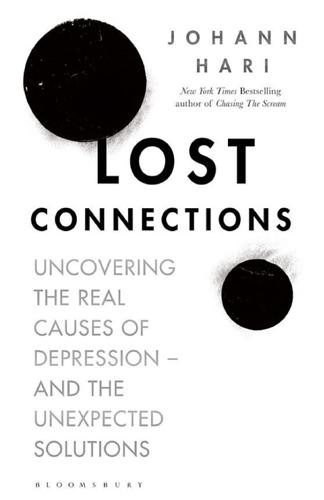
Lost Connections: Uncovering the Real Causes of Depression – and the Unexpected Solutions
by
Johann Hari
Published 1 Jan 2018
See Internet and social media social neuroscience, here social prescribing definition of, here and holistic approach to diagnosis and treatment, here limited research on, here opposition of drug companies to, here and prescribing of activities rather than drugs, here See also Bromley-by-Bow Center society, Western rejection of concept, here The Spirit Level (Pickett and Wilkinson), here Sptizer, Eliot, here SSRIs. See Selective Serotonin Reuptake Inhibitors Star-D Trials, of SSRIs, here starvation, effects on body, here status and respect current large differences in, here disconnection from, as cause of depression, here and depression as type of submission response, here and status hierarchy in baboon troops, here and low/threatened status as source of stress, here, here, here reconnection to cooperatives and, here universal basic income and, here Stein, Richard, here, here, here stigmatization of depressed persons research on, here undermining of, as motive for chemical imbalance theory of depression, here stress long-term, as cause of depression, here impact of research on, here, here research on, here low/threatened status as source of, here, here, here Sudblock (Berlin gay club) and bonding of Kotti residents, here and Kotti neighborhood protest, here and Tuncai (homeless man), adoption of, here, here, here suicide rates, among Native American/First Nations groups, here Sullivan, Andrew, here Summerfield, Derek, here symptoms, painful of depression, as message about needed changes in society, here as key to discovering underlying problem, here, here, here, here Tamir, Maya, here taxi drivers in London, and neuroplasticity, here teenagers, ineffectiveness of antidepressants for, drug companies’ hiding of, here television, and advertising power to create materialistic desires, here sense of inadequacy generated in viewers, here Thatcher, Margaret, here Ticu, Alex, here, here tribe, human need for connection to cooperatives and, here, here and disconnection from other people as cause of depression, here, here, here, here Internet gaming and, here Tuncai (homeless man) freeing of, by Kotti protesters, here and involvement with others as treatment for depression, here and Kotti neighborhood protest, here return to psychiatric institution, here Tuncer, Neriman, here Twenge, Jean, here twins studies, and genetic factors in depression, here unhappiness, and depression, continuum between, here unions, difficulty of establishing, here United Nations, on social causes of mental illness, here universal basic income cost of implementing, here experiments with, here experiment with, in Dauphin, Canada, here effects on residents, here ending of, here Forget’s analysis of data from, here and improvements in working conditions, here, here mental health effects of, here as realizable dream, here as remedy for economic insecurity created by globalization, here, here Utopia for Realists (Bregman), here values, meaningful, disconnection from as cause of depression, here advertising’s encouragement of materialistic values and, here, here and chemical imbalance model of depression, here link between materialism and depression, here and materialism, destructive effects of, here, here values, meaningful, reconnecting to, here alternative lifestyle designed for, here banning of advertising and, here and consumer values, experiment in changing, here difficulty of, here meditation and, here psychedelic drugs and, here Vietnam, author’s food poisoning in, here, here Virno, Paul, here Virtually Normal (Sullivan), here wand, healing.
…
There are some people who naturally have depleted levels of a chemical named serotonin in their brains, he said, and this is what causes depression—that weird, persistent, misfiring unhappiness that won’t go away. Fortunately, just in time for my adulthood, there was a new generation of drugs—Selective Serotonin Reuptake Inhibitors (SSRIs)—that restore your serotonin to the level of a normal person’s. Depression is a brain disease, he said, and this is the cure. He took out a picture of a brain and talked to me about it. He was saying that depression was indeed all in my head—but in a very different way. It’s not imaginary.
…
See psychedelic drugs psychedelic drugs effect of, here percentage of unpleasant experiences, here psychedelic drugs, spiritual experiences caused by 1950s-60s research on, here as escape from ego, here, here, here life-changing effects, here meditation as means of preserving effects of, here Roland’s experiments on, here sense of connection to others following, here, here, here similarity to meditation experience, here, here as treatment for depression, here, here, here psychiatrists and confusion of grief with depression, here focus on biological component of depression, here psychological causes of depression broad range of, here as too often ignored, here See also bio-psycho-social model of depression psychological changes as treatment for depression meditation and, here types of, here See also reconnecting strategies psychotherapy, as treatment for depression, here publication bias, in drug testing for antidepressant, here public engagement as treatment for depression, Kotti neighborhood protest and, here, here, here, here Putnam, Robert, here reactive model of depression vs. endogenous theory, here, here, here impact of research on, here, here research supporting, here, here reconnecting strategies, here author’s successful use of, here large changes required for, here, here as social/psychological antidepressant, here time and confidence needed to implement, here, here See also childhood trauma, overcoming; future, restoring; natural world, reconnection to; people, reconnection to; self/ego, overcoming addiction to; social prescribing; status and respect, reconnection to; values, meaningful, reconnecting to; work, reconnecting to relationships, extrinsic motivations and, here reSTART Life Internet addiction center, here, here Richards, Bill, here, here, here Rumspringa, here Ryan, Richard, here São Paulo, Brazil, banning of outdoor advertising, here Sapirstein, Guy analysis of antidepressant drug testing, here responses to drug testing analysis, here Sapolsky, Robert on genetic factors in depression, here recurring dream of, here research on baboon status hierarchies, here on stress of low or insecure status, here Schwenke, Regina, here Selective Serotonin Reuptake Inhibitors (SSRIs) and chemical imbalance model of depression, here, here effect of, as short-lived, here side effects of, here tests on effectiveness of, here self/ego effect of intrinsic vs. extrinsic motivation on, here experience of nature as escape from, here, here individual as prisoner of, in depression, here as protective barrier, here psychedelic drug experience as escape from, here, here, here resistance to diminishment of in some people, here Western vs.
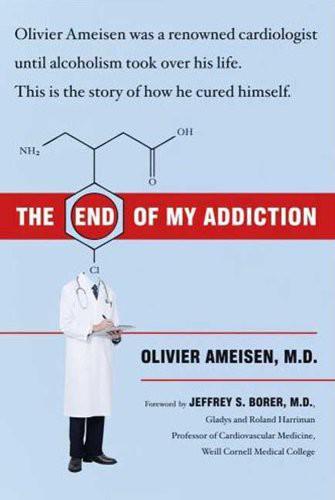
The End of My Addiction
by
Olivier Ameisen
Published 23 Dec 2008
By default, I was forced to coordinate my care as best I could on my own. From my psychopharmacologist I received prescriptions for tranquilizers, benzos like Valium and Xanax. Saying they were helpful for anxiety as well as depression, the psychopharmacologist also prescribed selective serotonin reuptake inhibitors, or SSRIs, like Prozac and Zoloft. We tried them at various dosages alone and in combination. None of the permutations were effective, and all of them had unpleasant side effects. The psychiatrist I was seeing for alcohol dependency knew I was taking these medications, and he also prescribed Antabuse (disulfiram).
…
My report is that he has experienced a satisfactory response to high-dose baclofen that has been sustained over ten months without significant side-effect. Tolerance has not developed, whereas it had with oral naltrexone. Tolerance to baclofen has uncommonly been reported only after years of intrathecal use for severe spasticity (Nielsen et al., 2002). In contrast with Dr. Ameisen’s experience, use of a selective serotonin reuptake inhibitor (SSRI; paroxetine) did appear to be necessary as baclofen by itself did not satisfactorily reduce Mr. A’s anxiety or depression. Being a case study, this report is obviously limited. Placebo response is a possibility. If that is the case, however, there is no apparent explanation for why it did not appear in trials of either naltrexone or acamprosate, alone or in combination, or with topiramate.
…
post-traumatic stress disorder (PTSD) preaddiction morbidity prescription painkillers, abuse of Programme Hospitalier de Recherche Clinique (PHRC) Prozac, see fluoxetine psychotherapy; see also cognitive behavioral therapy; group therapy Rational Recovery (RR) Recognizing Addiction as a Disease Act (2007) rehab; “drunk dreams” in; life lessons taught in; relaxation training in; see also specific facilities relapse; anticipatory anxiety of; conventional addiction medications and; cycle of rehab and; “drunk dreams” and; rate of; reducing risk of relaxation exercises Revel, Michel Revia, see naltrexone reward mechanisms rhabdomyolysis ribs, fractured rimonabant (Acomplia) Roberts, David C. Rockefeller University Rosenthal, Moriz Rubinstein, Artur Rubinstein, Helena Rudrauf, David Sabril, see vigabatrin Saint-Cloud Hospital St. Luke’s–Roosevelt Hospital Sanofi Schaefer, John Schanz family schizophrenia seizures selective serotonin reuptake inhibitors (SSRIs) self-hypnosis serotonin sertraline (Zoloft) Smith, Charles R. smoking cessation, drugs for sonogram Sontag, Susan Southern California, University of Spielberg, Steven spirituality status epilepticus Steiner, Jeff stress test suicidal thoughts and behaviors, drugs associated with increased risk of Sungar, Murat Survivors of the Shoah Visual History Foundation sympathetic nervous system talk therapy tardive dyskinesia Taylor, John Bellamy Texas, University of threshold response Titus, Edward William tolerance, drug Topamax, see topiramate topiramate (Topamax) transaminase Tranxene twelve-step programs; relapse rates of; see also Alcoholics Anonymous; Narcotics Anonymous urine monitoring Valium, see diazepam valproate varenicline (Chantix) ventricular tachycardia vigabatrin (Sabril) Vioxx Vivitrol, see naltrexone Weill Cornell Medical College; see also Cornell University Medical College Wernicke’s encephalopathy Wiesel, Elie withdrawal; baclofen and; GHB and; neurotransmitter release triggered by; preventing symptoms of World Health Organization (WHO) World War II Xanax yoga Zofran Zoloft Acknowledgments First of all, I thank my parents for their boundless love and for showing me by their example the power of dreams when everything appears to be lost.
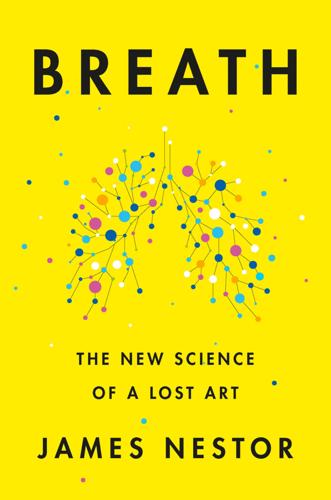
Breath: The New Science of a Lost Art
by
James Nestor
Published 25 May 2020
Pills, he tells me, offer a false promise and do little good for most people. Anxiety disorders and depression are the most common mental illnesses in the United States, and about half of us will suffer from one or the other in our lifetime. To help cope, 13 percent of us over the age of 12 will use antidepressants, most often selective serotonin reuptake inhibitors, also known as SSRIs. These drugs have been lifesavers for millions, especially those with severe depression and other serious conditions. But less than half the patients who take them get any benefits.* “I keep asking myself,” says Feinstein, “Is this the best we can do?” Feinstein had explored various non-pharmaceutical therapies; he’d spent a decade learning and teaching mindfulness meditation.
…
See also hypoventilation training / Buteyko breathing cancer, 193 carbon dioxide, 9, 70–71 anatomical journey of, 74 author’s carbon dioxide therapy, 178–79, 181–83 Bohr’s discovery of oxygen-loosening function of, 75–76 chemoreceptors and, 169–70 color of blood and, 74 dilatory effect on blood vessels, 76 fear circuit triggered by, 169 Feinstein’s carbon dioxide therapy research, 175–79 Henderson’s dog experiments and, 76–78 Olsson’s experimental use, 179–80 weight loss and, 74–75 Catlin, George, 46–49, 52 Chandogya Upanishads, 196 chemoreceptors/chemoreception, 169–70, 211 Chesney, Margaret, 172 chewing, 132–36, 209–10 bone density and growth triggered by, 132 breastfeeding and, 132 gum and, 135n, 225 lack of, and morphological changes in humans, 116 oral devices, 225 palatal expansion, 226 soft-food diets, deleterious effects of, 133–34 stem cell production and, 132 See also mouth ch’i, 188 choking, 16, 32 chronic insomnia disorders, 30 cilia, 45 cinefluorography, 63 Civil War, 140–42 Coherent Breathing, 83–84, 221 colds, and bacterial growth in congested nasal passages, 7 “Concerning a Biologically Important Relationship—The Influence of the Carbon Dioxide Content of Blood on Its Oxygen Binding” (Bohr), 76 congestion, and bacteria growth, 7 conscious apnea, 171–72 continuous partial attention, 172 Control Pause technique, 222 Corruccini, Robert, 133–34, 205 cortisol, 153 Cottle’s maneuver, 118 Counsilman, James, 94–95 CPAPs (continuous positive airway pressure masks), 122 cranial dystrophy posture, 128 crooked teeth breastfeeding and, 132 causes of, 134 chewing, lack of, 116, 133–34 Corruccini’s research on, 133–34 farming cultures and, 107 modern versus ancient skulls and, 12 processed foods and, 111, 114 soft-food diets and, 133–34 See also mouth Da Costa, Jacob Mendez, 140–42 Daubard, Maurice, 157–58, 186 David-Néel, Alexandra, 146–47, 150–51, 157 Decongest the Nose technique, 224 dental problems, and mouthbreathing, 49–50 depression carbon dioxide therapies and, 176–77 slow breathing and, 83 SSRIs (selective serotonin reuptake inhibitors), 176 vagus nerve stimulation and, 150 DeRose, Luíz Sérgio Álvares, 186, 187, 194–95, 197–201 deviated septum, 118 diaphragm, 61–62, 63 diseases of civilization, 205–6 Douillard, John, 23–24, 81 Dr. Breath (Stough), 60 Dunn, Matthew, 100 dysevolution, 13 Eastern medicines, 205–6 Ebers Papyrus, 45 eczema, 174 Ehrlich, Paul R., 125 electrons, 192–93 email apnea, 172 emphysema, 60–61, 68, 209 empty nose syndrome, 118–20 epilepsy, 211 erectile tissue, nasal, 40–41 Evans, Lee, 66 Evans, Marianna, 10–11, 12, 31–33, 135n, 226 evolution aerobic life, 9–10 dysevolution, 13 food mashing and cooking, effects of, 13–14 morphological changes in humans, 14–16, 107–8 oxygen’s ability to exchange electrons and, 193 skull development and, 10–13 exercise-induced asthma, 98 exhalation, 59–68 breathing coordination and, 65, 66, 220–21 diaphragm and, 61–62, 63 Martin’s counting exhalation exercise, 64–65 Stough’s work with athletes and, 65–66, 209 Stough’s work with emphysema patients and, 59–64, 209 thoracic pump and, 61 weight loss and, 74–75 Expand-a-Lung, 213 expansive orthodontic devices, 123, 127, 132, 226 exposure therapy, 177 extreme apnea, 140 extreme breathing.
…
See also Breathing+ techniques overeating, 85 oxygen, 9–10 color of blood and, 74 delivery system, 73–74 electron exchange, and evolution, 193 levels, and mouthbreathing, 29 levels, and slow breathing, 80–82 overbreathing or breathing pure oxygen, ineffectiveness of, 76–78 supplemental oxygen, effects of, 77n tissue health and, 193–94 Oxygen Advantage, The (McKeown), 224 Packman, Ira, 102, 103 palatal expansion, 226 panic disorders, 177–78 Papworth method, 101 parasympathetic nervous system breathing and, 144 left nostril breathing and, 41–42 sexual arousal and, 145n Paris catacombs, 108–10, 112–13 Pavia tests, 82–83, 84 perfect breath, 82–83, 84, 104, 212 Pinheiro, Heduan, 194, 200–201 pituitary gland, 29–30 Plains Indians, 46–48 pneuma, 188 pneumonia, 63 Porges, Stephen, 148, 149, 150 prana, 187–88 in ancient traditions, 188 and earliest yoga, 188 Szent-Györgyi’s explanation of energy of electrons, 191–94 pranayama techniques, 199–201, 210 jiya pranayama, 200 nadi shodhana, 42, 219–20 surya bheda pranayama, 43 yogic breathing, 228–29 prayer, 82–83, 84 prefrontal cortex mouthbreathing and, 30–31 right nostril breathing and, 41 Preventive Oral Device (POD), 225 Price, Weston, 113–16 protons, 192 psoriasis, 174 pulmonology, xviii–xix Purifying Breath, 199 qigong, 188 Rama, Swami, 188–91 red blood cells, 73–74 resonant breathing, 83–84, 221 respiratory acidosis, 140 respiratory rates Henderson’s dog experiments, 76–78 normal, considered medically, 85–86 optimum, 82–83, 84, 104, 212 retractive orthodontics, 124–25 Richards-Ross, Sanya, 96n, 100 right nostril breathing, 41 Robin, Pierre, 123, 132 rosary, 82–83, 84 ruah, 188 Runner’s World, 94 sa ta na ma chant, 82 Sanborn, David, 68 schizophrenia, and left nostril breathing, 42 Schroth, Katharina, 56–58 scoliosis, 56–57 selective serotonin reuptake inhibitors (SSRIs), 176 sexual arousal, 145n shallow breathing, 64 Shankar, Sri Sri Ravi, 198–99 Shiva Swarodaya, 40 sildenafil (Viagra), 50 Simonetti, Scott, 225 skull development research, 10–13 sleep apnea, 17, 128, 172 breastfeeding and, 132 CPAPs and, 122 health effects of, 30 mouth taping and, 52 mouthbreathing and, 28, 49–50 obstructions in mouth and, 120 percentage of population exhibiting, 32 Sloan, Rick, 66 slow breathing, 69–84 anatomy of breathing and, 73–74 author’s experiment with Olsson and, 79–82 carbon dioxide–oxygen balance and, 72–78 Gerbarg and Brown’s resonant breathing and, 83–84, 221 oxygen levels and, 80–82 Pavia tests and, 82–83, 84 prayer and, 82–83, 84 Small, Maurice J., 60 smell, 38–39 snoring, 16 breastfeeding and, 132 health effects of, 30 mouth taping and, 52 mouthbreathing and, 28, 49–50 obstructions in mouth and, 120 percentage of population exhibiting, 32 speech, 15 Spire, 213 SSRIs (selective serotonin reuptake inhibitors), 176 Stanford experiment with author and Olsson, 3–9, 16–18, 19–23, 28–29, 37–38, 79–82, 87–89, 105–7, 139, 206–8 stem cells, 131, 132 Storey, Don, 204 Stough, Carl, 209 athletes, work with, 65–66, 209 emphysema patients, work with, 59–64 video of methods of, 67–68 stress, vagal system response to, 148–50 stretches Five Tibetan Rites, 53–54 lung capacity, expanding, 53 Sudarshan Kriya, 198–200, 210, 227–30 author’s practice of, xiv–xvi box breathing, 229 breathhold walking, 229–30 4-7-8 breathing, 230 phases of, 227–28 prana and, 199–200 Purifying Breath, 199 yogic breathing, 228–29 surya bheda pranayama, 43 sutures, 131 sympathetic nervous system breathing and, 144–45 right nostril breathing and, 41 sympathetic nervous system overload, 140 Szent-Györgyi, Albert, 191–94, 205 Tao, xvii, xviii, 31 teeth crooked.
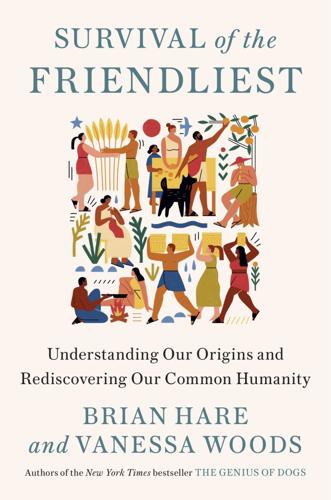
Survival of the Friendliest: Understanding Our Origins and Rediscovering Our Common Humanity
by
Brian Hare
and
Vanessa Woods
Published 13 Jul 2020
Friedman, “Use of Selective Serotonin-Reuptake Inhibitors in Pregnancy and the Risk of Birth Defects,” New England Journal of Medicine 356, 2684–92 (2007). 54. J. J. Cray, S. M. Weinberg, T. E. Parsons, R. N. Howie, M. Elsalanty, J. C. Yu, “Selective Serotonin Reuptake Inhibitor Exposure Alters Osteoblast Gene Expression and Craniofacial Development in Mice,” Birth Defects Research Part A: Clinical and Molecular Teratology 100, 912–23 (2014). 55. C. Vichier-Guerre, M. Parker, Y. Pomerantz, R. H. Finnell, R. M. Cabrera, “Impact of Selective Serotonin Reuptake Inhibitors on Neural Crest Stem Cell Formation,” Toxicology Letters 281, 20–25 (2017). 56.
…
People who take Ecstasy report feeling more aggressive—and behave more aggressively in economic games—for a few days after using it.49 Abnormalities in serotonin are also associated with violent criminal offenders, impulsive arsonists, and people with personality disorders.50 Selective serotonin reuptake inhibitors, or SSRIs, are antidepressants that prevent the reabsorption of serotonin in the brain, allowing more serotonin to be available, floating around the receptors. In experiments, people who take the SSRI Citalopram show an increase in cooperative behavior and are unwilling to harm others.51, 52 And this is where it gets interesting. Women taking Citalopram are more likely to have babies with smaller skulls.53 Pregnant mice who are given Citalopram have babies with shorter, narrower snouts, and skulls described as globular.54 Serotonin does not just change behavior.
…
Dupin, “High Frequency of Cephalic Neural Crest Cells Shows Coexistence of Neurogenic, Melanogenic, and Osteogenic Differentiation Capacities,” Proceedings of the National Academy of Sciences 106, 8947–52 (2009). 25. C. Vichier-Guerre, M. Parker, Y. Pomerantz, R. H. Finnell, R. M. Cabrera, “Impact of Selective Serotonin Reuptake Inhibitors on Neural Crest Stem Cell Formation,” Toxicology Letters 281, 20–25 (2017). 26. In support of this idea, comparisons between wolves and village dogs (i.e., dogs that have not experienced intense intentional selection for their appearance or behavior) reveal that neural crest genes have been under selection during the process of domestication.
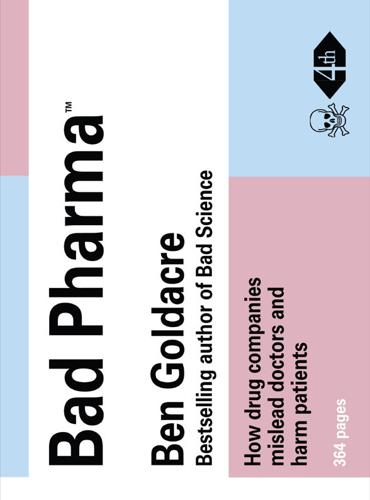
Bad Pharma: How Medicine Is Broken, and How We Can Fix It
by
Ben Goldacre
Published 1 Jan 2012
And finally, if you try to get all of the information that a drug company has provided – the long-form documents, where the bodies are often buried – then regulators present bizarre barriers, blocking and obfuscating for several years at a time, even on drugs that turn out to be ineffective and harmful. Nothing of what I am about to tell you is in any sense reassuring. One: Information is withheld from regulators Paroxetine is a commonly used antidepressant, from the class of drugs known as ‘selective serotonin reuptake inhibitors’, or SSRIs. You will hear more about this class of drugs later in this book, but here we will use paroxetine to show how companies have exploited our longstanding permissiveness about missing trials, and found loopholes in our inadequate regulations on trial disclosure. We will see that GSK withheld data about whether paroxetine works as an antidepressant, and even withheld data about its harmful side effects, but most importantly, we will see that what it did was all entirely legal.
…
If you think back to the previous chapter, you will remember that developing a completely new molecule, with a completely new mechanism of action in the body, is a very risky and difficult business. Because of that, once a company has an established drug on the market, others will often try to produce their own version of that drug: so there are a great many antidepressants around from the class known as ‘selective serotonin reuptake inhibitors’, or SSRIs, for example. Developing a drug like this is much more of a safe bet. Often these me-too drugs don’t represent a significant therapeutic benefit, so many people regard them as wasteful, an unnecessary use of development money, potentially exposing trial participants to unnecessary harm for individual companies’ commercial gain rather than medical advancement.
…
More than molecules The idea that depression is caused by low serotonin levels in the brain is now deeply embedded in popular folklore, and people with no neuroscience background at all will routinely incorporate phrases about it into everyday discussion of their mood, just to keep their serotonin levels up. Many people also ‘know’ that this is how antidepressant drugs work: depression is caused by low serotonin, so you need drugs which raise the serotonin levels in your brain, like SSRI antidepressants, which are ‘selective serotonin reuptake inhibitors’. But this theory is wrong. The ‘serotonin hypothesis’ for depression, as it is known, was always shaky, and the evidence now is hugely contradictory.19 I’m not giving that lecture here, but as one brief illustration, there’s a drug called tianeptine – it is a selective serotonin reuptake enhancer, not an inhibitor, that should reduce serotonin levels – and yet research shows that it is also a pretty effective treatment for depression.
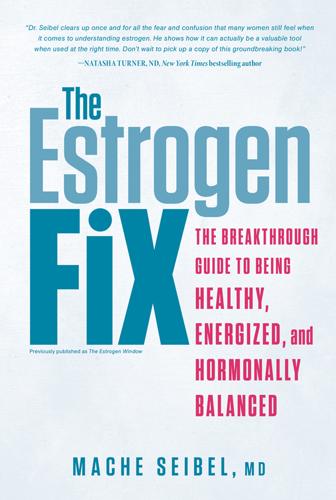
The Estrogen Fix: The Breakthrough Guide to Being Healthy, Energized, and Hormonally Balanced
by
Mache Seibel
Published 18 Sep 2017
According to scientists at McGill University, serotonin production is 53 percent higher in men’s brains than in women’s. Serotonin is a brain chemical that is believed to be lower in people who suffer from depression and is the hormone that drugs like Celexa, Paxil, Prozac, and Zoloft, categorized as selective serotonin reuptake inhibitors, known as SSRIs, increase in the brain. One in four women and one in ten men in America will require treatment for depression at some point. If you are being treated with an SSRI, also known as an antidepressant, know that they are associated with loss of bone mass and a higher risk of bone fracture in middle-aged women.54 So if you’re taking one of these medications, talk with your doctor about taking calcium and vitamin D, and about getting regular bone density tests to make sure you aren’t developing osteoporosis.
…
Moodiness and situational depression are so common in menopause that many women are prescribed antidepressants to help them through this transition. Once given antidepressants to deal with their emotions, many women observed and told their doctors that they had fewer hot flashes. That led to the off-label use of many selective serotonin reuptake inhibitors, or SSRIs, and testing of selective norepinephrine reuptake inhibitors (SNRIs) to see how effective they were for the treatment of hot flashes. In June 2013, the FDA approved a low-dose version of the antidepressant paroxetine, known as Paxil, for women with moderate to severe hot flashes.
…
Estrogen is involved in the production of endorphins, the brain’s so-called feel-good chemicals, and is tied to increasing levels of serotonin as well as the number of serotonin receptors in the brain. Deficits in serotonin, a chemical created by the human body that works as a neurotransmitter and plays a role in regulating mood, are linked to depression. That’s why so many antidepressants, or SSRIs (selective serotonin reuptake inhibitors), work to increase the amount of serotonin available in the brain. Some evidence also suggests that estrogen may even help protect nerves from damage by oxidative stress, an imbalance between the production of free radicals and the body’s ability to counteract their harmful effects.
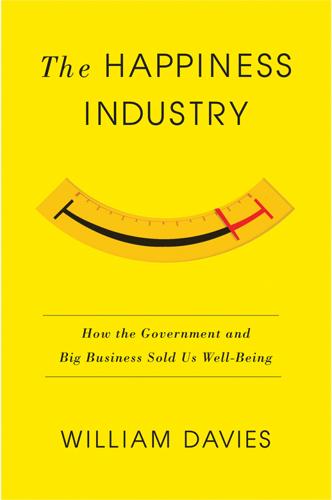
The Happiness Industry: How the Government and Big Business Sold Us Well-Being
by
William Davies
Published 11 May 2015
This wasn’t just the discovery of a new drug, but of a whole new notion of personhood.18 In the decades since Kuhn and Kline first experimented with their new drugs, antidepressants have become celebrated for this alleged selectivity and their non-specificity. The supposed genius of the selective serotonin reuptake inhibitor (SSRI) is to seek out the precise part of the self that requires energizing and give it a boost. In the years following the launch of Prozac in 1988, enthusiasm for the potential of SSRIs reached unprecedented heights. Claims were made by psychiatrists such as Peter Kramer that Prozac didn’t simply boost mood, but reconnected individuals with their real selves.19 The notion of illness, not to mention that of sadness, has been transformed in the process.
…
See positive psychology promise of practical utility of, 91 reunion of with economics, 64, 182 social psychology, 125, 189, 266 theory of, as balancing act, 67 The Psychology of Advertising (Scott), 86 psychopharmacology, 162 psychophysical parallelism, 259 psychophysics, 29, 30, 31 psychosomatic interventions/management/programmes/theories, 122, 124, 128, 135 psychotherapy, 124, 127 pulse rate, 25, 26, 27, 37, 79 punishment, 16, 19, 22, 23, 179, 183, 239 PwC, 119 Qualia, 36 quality of life measures, 126 quantitative sociological research, 98 quantified community, 233, 234 quantified self apps, 221 quantified self movement, 221, 228 quants, 237 questionnaires, 165, 175, 176 random acts of managerial generosity, 184 randomized sampling methods, 97 Rapley, Mark, 250 Rayner, Rosalie, 93 Reagan, Ronald, 144, 149, 159 Realeyes, 72 real-time health data, 137 real-time social trends, 224 recessions, 67–8, 252 Recognizing the Depressed Patient (Ayd), 164 reductionism, 27, 264 research ethics, 91–2, 225 resilience training, 35, 273 Resor, Stanley, 93–4, 95, 96 retail culture, 58 Ricard, Matthieu, 2, 4 Robbins, Lionel, 154 Robins, Eli, 169 Rockefeller Foundation, 97, 99, 121 Rogers, Carl, 146 Roosevelt, Franklin, 101, 146 Rowntree, Joseph, 99 RunKeeper, 240 Ryanair, 185 Salter, Tim, 110 sampling methods, 97–8 Santa Monica, California, 4 São Paolo, Brazil, Clean City Law, 275 scales, 146, 165, 175, 176 scanning technology, 75–6 scent logos, 73 Schrader, Harald, 44 scientific advertising, 215 scientific management, 118–19, 120, 136–7, 235 scientific optimism, 242 scientific politics, 77, 88, 145 scientists, as source of authority, 147–8 Scott, Walter Dill, 83, 85 screen time, 207 second brain, 231 secular religions, 260 selective serotonin reuptake inhibitors (SSRIs), 163, 166 self-anchored striving, 147, 166, 175 self-anchoring striving scale, 146 self-forming groups, 200 self-help gurus, 210 self-help literature, 247 self-improvement, 212 self-monitoring, 258 self-optimization, 213 self-reflection, 211 self-surveillance, 221, 230 Seligman, Martin, 165, 277n5 Selye, Hans, 128–31, 133, 264 The Senses and the Intellect (Bain), 48 sentiment analysis/tracking, 6, 221, 223, 261 sexual orientation disturbance, 172 sharing economy, 188 shopping, 58, 74, 93, 188, 239 sick notes, 112 Sing Sing prison, 201 Smail, David, 250 smart cities, 220, 224, 239 smart homes, 239 smart watches, 37 smartphones, 10, 207, 222, 230 smiles/smiling, 36–7, 38 Smith, Adam, 49, 50, 52, 55 social, 1, 36, 184, 186, 187, 188, 190, 191, 203, 204, 205, 207, 208, 211–12 social analytics, 188, 191, 193, 196 social capitalism, 212 social contagion, science of, 257 social economy, 190 social epidemiology, 9, 250, 254 social media, 188, 189, 199, 203, 207, 208–9, 213, 224, 261, 274 social media addiction, 206, 207 social network analysis, 204, 208 social networks, 193, 194, 195, 196, 213, 225 social neuroscience, 193, 195, 213, 214 social obligation, 184 social optimization, 181–214 social prescribing, 194, 212, 246, 271 social psychology, 125, 189, 266 social research, 98, 202, 226 social science, as converging with physiology into new discipline, 195 sociology, 254 sociometric analysis, 199 sociometric maps, 202 Sociometric Solutions, 239 sociometry, 199, 201, 202, 203 Spengler, Oswald, 121 Spitzer, Robert, 171–3, 176, 271 sponsored conversations, 189 sport, as virtue for political leaders, 140 sporting metaphors, 141 SSRIs (selective serotonin reuptake inhibitors), 163, 166 St Louis school of psychiatry, 169, 170, 171, 173, 174, 176, 179 Stanton, Frank, 99 Stigler, George, 150, 152, 153, 156–7, 158, 160 stress, 37, 129, 130, 131, 132, 133, 175, 250, 262, 272, 273 Stuckler, David, 252 subjective affect, science of, 6, 7 subjective feelings, relationship with external circumstances, 254 subjective sensation, 30, 45, 55, 61 Suicide (Durkheim), 227 Sully, James, 59, 84 surveillance, 231, 237, 238, 240, 242.
…
See positive psychology promise of practical utility of, 91 reunion of with economics, 64, 182 social psychology, 125, 189, 266 theory of, as balancing act, 67 The Psychology of Advertising (Scott), 86 psychopharmacology, 162 psychophysical parallelism, 259 psychophysics, 29, 30, 31 psychosomatic interventions/management/programmes/theories, 122, 124, 128, 135 psychotherapy, 124, 127 pulse rate, 25, 26, 27, 37, 79 punishment, 16, 19, 22, 23, 179, 183, 239 PwC, 119 Qualia, 36 quality of life measures, 126 quantitative sociological research, 98 quantified community, 233, 234 quantified self apps, 221 quantified self movement, 221, 228 quants, 237 questionnaires, 165, 175, 176 random acts of managerial generosity, 184 randomized sampling methods, 97 Rapley, Mark, 250 Rayner, Rosalie, 93 Reagan, Ronald, 144, 149, 159 Realeyes, 72 real-time health data, 137 real-time social trends, 224 recessions, 67–8, 252 Recognizing the Depressed Patient (Ayd), 164 reductionism, 27, 264 research ethics, 91–2, 225 resilience training, 35, 273 Resor, Stanley, 93–4, 95, 96 retail culture, 58 Ricard, Matthieu, 2, 4 Robbins, Lionel, 154 Robins, Eli, 169 Rockefeller Foundation, 97, 99, 121 Rogers, Carl, 146 Roosevelt, Franklin, 101, 146 Rowntree, Joseph, 99 RunKeeper, 240 Ryanair, 185 Salter, Tim, 110 sampling methods, 97–8 Santa Monica, California, 4 São Paolo, Brazil, Clean City Law, 275 scales, 146, 165, 175, 176 scanning technology, 75–6 scent logos, 73 Schrader, Harald, 44 scientific advertising, 215 scientific management, 118–19, 120, 136–7, 235 scientific optimism, 242 scientific politics, 77, 88, 145 scientists, as source of authority, 147–8 Scott, Walter Dill, 83, 85 screen time, 207 second brain, 231 secular religions, 260 selective serotonin reuptake inhibitors (SSRIs), 163, 166 self-anchored striving, 147, 166, 175 self-anchoring striving scale, 146 self-forming groups, 200 self-help gurus, 210 self-help literature, 247 self-improvement, 212 self-monitoring, 258 self-optimization, 213 self-reflection, 211 self-surveillance, 221, 230 Seligman, Martin, 165, 277n5 Selye, Hans, 128–31, 133, 264 The Senses and the Intellect (Bain), 48 sentiment analysis/tracking, 6, 221, 223, 261 sexual orientation disturbance, 172 sharing economy, 188 shopping, 58, 74, 93, 188, 239 sick notes, 112 Sing Sing prison, 201 Smail, David, 250 smart cities, 220, 224, 239 smart homes, 239 smart watches, 37 smartphones, 10, 207, 222, 230 smiles/smiling, 36–7, 38 Smith, Adam, 49, 50, 52, 55 social, 1, 36, 184, 186, 187, 188, 190, 191, 203, 204, 205, 207, 208, 211–12 social analytics, 188, 191, 193, 196 social capitalism, 212 social contagion, science of, 257 social economy, 190 social epidemiology, 9, 250, 254 social media, 188, 189, 199, 203, 207, 208–9, 213, 224, 261, 274 social media addiction, 206, 207 social network analysis, 204, 208 social networks, 193, 194, 195, 196, 213, 225 social neuroscience, 193, 195, 213, 214 social obligation, 184 social optimization, 181–214 social prescribing, 194, 212, 246, 271 social psychology, 125, 189, 266 social research, 98, 202, 226 social science, as converging with physiology into new discipline, 195 sociology, 254 sociometric analysis, 199 sociometric maps, 202 Sociometric Solutions, 239 sociometry, 199, 201, 202, 203 Spengler, Oswald, 121 Spitzer, Robert, 171–3, 176, 271 sponsored conversations, 189 sport, as virtue for political leaders, 140 sporting metaphors, 141 SSRIs (selective serotonin reuptake inhibitors), 163, 166 St Louis school of psychiatry, 169, 170, 171, 173, 174, 176, 179 Stanton, Frank, 99 Stigler, George, 150, 152, 153, 156–7, 158, 160 stress, 37, 129, 130, 131, 132, 133, 175, 250, 262, 272, 273 Stuckler, David, 252 subjective affect, science of, 6, 7 subjective feelings, relationship with external circumstances, 254 subjective sensation, 30, 45, 55, 61 Suicide (Durkheim), 227 Sully, James, 59, 84 surveillance, 231, 237, 238, 240, 242.

Never Bet Against Occam: Mast Cell Activation Disease and the Modern Epidemics of Chronic Illness and Medical Complexity
by
Lawrence B. Afrin M. D.
,
Kendra Neilsen Myles
and
Kristi Posival
Published 15 Jan 2016
Ketotifen is not presently available in the United States in a commercial oral preparation (though some are working to fix that), but it can be obtained by pharmacists for compounding into oral forms. Some MCAS patients have long suffered symptoms of major depression and are already taking one drug or another from the class of selective serotonin reuptake inhibitors (SSRIs) that are the front-line drugs for treating depression at present. Addition of antihistamines to SSRIs increases the risk for the life-threatening “serotonin syndrome,” for which the clinician must remain alert; should such develop, cessation of the offending drugs and immediate institution of aggressive benzodiazepine therapy (such as lorazepam, initially dosed at 2-3 mg 3-4 times daily) should be the emergency response.
…
More commonly known by its popular U.S. trade name Paxil, paroxetine is one of many drugs in the class of anti-depressant drugs called selective serotonin reuptake inhibitors, or SSRIs. Many MCAD patients are diagnosed as suffering from depression (either because they truly are suffering from a real “major depressive disorder” as defined in psychiatrists’ diagnostic manuals or because their doctors interpret their fatigue as depression since they can’t imagine what else might be causing it) and therefore wind up getting chronically prescribed, or at least trying, various SSRIs including paroxetine. Paroxysmal nocturnal hemoglobinuria “Par´-ox-is´-mal noc-turn´-ul heem´-oh-glōb´-in-yur´-ee-uh.”
…
There are many different paths by which MCAD can (fortunately only occasionally) lead to septicemia. Serotonin reuptake inhibitors “Seer´-oh-tōn´-in re-up´-tāk” inhibitors. Also known as selective serotonin reuptake inhibitors, or SSRIs, these very commonly prescribed medications were developed to treat depression and generally have been pretty successful at doing so. It was originally thought that the SSRIs treat depression by blocking “serotonin reuptake elements” (SREs) on the surfaces of presynaptic nerve cells, thereby increasing the amount of the signaling molecule serotonin in the neural synapse available for binding to, and thus activating of, post-synaptic nerve cells, and by stimulating such post-synaptic neural activity, depression can be lifted.
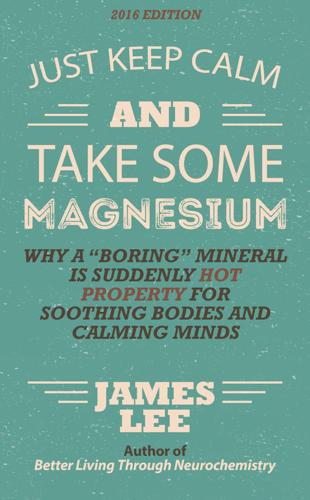
Just Keep Calm & Take Some Magnesium - Why a "Boring" Mineral Is Suddenly Hot Property for Soothing Bodies and Calming Minds
by
James Lee
Published 10 Feb 2014
Depression can be caused by faulty thinking, life stressors, low dopamine, low noradrenaline, too much glutamate, thyroid problems and sleep disorders, to name but a few. Considering this complexity, it is no surprise that there is no single treatment for all kinds of depression and anxiety. You have probably hear of SSRI drugs (selective serotonin reuptake inhibitors such as Prozac) which work by inhibiting the process by which your brain removes serotonin from the synapse (Don’t worry, I will explain what synapses are also) and therefore keeping levels higher than they would have been. Sounds simple right? Well, did you know that there is another antidepressant drug called Stablon (tianeptine) which is a selective serotonin reuptake enhancer.
…
By blocking the action of SERT, more serotonin can build up in the synapse and hopefully, lead to improved mood or reduced anxiety. This is how the popular SSRIs (selective serotonin re-uptake inhibitors such as Prozac and Zoloft) work. The main advantage of SSRIs over older antidepressants is that SSRIs are more “selective” (which should come as no surprise considering the name…) and therefore cause less side-effects. Some of the older antidepressants are subject to side-effects which can range from mildly troubling to life-threatening. However SSRIs are not without their own troubling side-effects, which include a constellation of problems from sexual dysfunction to diarrhoea.
…
And when you read about a particular supplement being “milder” with less side-effects, sometimes it can mean that there are no positive effects either. Essentially, natural antidepressants work as either mild SSRIs or mild MAOIs, with often conflicting research as to which. For example, researchers are currently divided as to whether St. John’s Wort is an SSRI or a MAOI. At the end of the day, this is relatively unimportant. More pertinent is whether sometime works or not. The only exception to this is when you are suffering from low dopamine. SSRIs tend to suppress dopaminergic function whereas MAOIs give all three mood-related monoamine neurotransmitters a boost. So if low dopamine is an issue, you would either need to focus on a supplement that purely works on dopamine (such as mucuna pruriens) or a MAOI like rhodiola rosea.
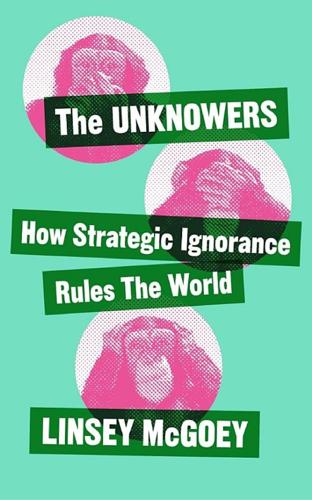
The Unknowers: How Strategic Ignorance Rules the World
by
Linsey McGoey
Published 14 Sep 2019
I was passed a confidential internal memo regarding GlaxoSmithKline…The memo indicated that there were two trials which had not been published. It recommended that the company should not publish these trials as they showed paroxetine was not effective in treating children who were depressed. Paroxetine is the technical name of an antidepressant SSRI drug marketed as Paxil in the US and Seroxat in the UK. As an SSRI drug, which stands for selective serotonin reuptake inhibitor, Seroxat is in the same drug class as Prozac. Although Seroxat was never formally approved for prescription to under-18s in UK, it was widely given to them ‘off-label,’ whereby GPs prescribe treatment even if they haven’t been formally approved.
…
‘Seroxat suppression of clinical trial data: Regulatory failure and the uses of legal ambiguity.’ Journal of Medical Ethics 35(2): 107–112. See also C. Medawar and A. Hardon, Medicines Out of Control? Antidepressants and the Conspiracy of Goodwill (Amsterdam: Aksant, 2004). 2 C. Whittington, T. Kendall, P. Fonagy, D. Cottrell, A. Cotgrove and E. Boddington, 2004. ‘Selective serotonin reuptake inhibitors in childhood depression: Systematic review of published versus unpublished data.’ The Lancet 363: 1341–45. See also Allison Bass, Side Effects: A Prosecutor, a Whistleblower and a Bestselling Antidepressant on Trial (Chapel Hill, NC: Algonquin Books, 2008), and David Healy, Let Them Eat Prozac: The Unhealthy Relationship between the Pharmaceutical Industry and Depression (New York and London: New York University Press, 2004). 3 Katie Thomas and Michael Schmidt, 2012.
…
The show drew a phenomenal response: the BBC received about 65,000 phone calls and 1,374 emails from viewers saying the programme had resonated with their own unexpected side-effects while on GlaxoSmithKline’s Seroxat.3 In 2003, the MHRA convened its Committee on Safety of Medicines (CSM) to explore the question of SSRI safety. It wasn’t the first time the British regulator addressed the question. Following Teicher’s study in 1990, the CSM had first reviewed the issue, finding no evidence of a causal link between SSRIs and suicidal behaviour. Between 1998 and 2000, the MHRA again re-examined the data, and they did rule that the patient-information labels for SSRIs should reflect general clinical experience that suicidal behaviour could increase in the early stages of treatment. But they also concluded that there was no firm evidence to confirm an association between SSRIs and suicidal behaviour.

Buried in Treasures: Help for Compulsive Acquiring, Saving, and Hoarding
by
David Tolin
,
Randy O. Frost
and
Gail Steketee
Published 14 Dec 2013
Medications American Psychiatric Association Web site: http://www.psych.org/ Telephone: 703-907-7300 E-mail: apa@psych.org So far, very little research has examined the use of medication to treat hoarding. Medications used to treat obsessive-compulsive disorder (OCD) have also been used for hoarding. These medications include serotonin reuptake inhibitors (SRI) such as clomipramine, as well as selective serotonin reuptake inhibitors (SSRI) such as fluvoxamine, fluoxetine, sertraline, and paroxetine. Some new evidence suggests that some of the SSRIs (especially paroxetine and venlafaxine) may be helpful for hoarding, but other evidence indicates that these medications are not as useful for treating hoarding as they are for OCD. Legally, any physician can prescribe medications.
…
See enjoyment recycling center, finding a local, 135–38 reinforcement. See rewarding self responsibility, beliefs about, 41, 71–72, 174–76 rewarding self, 143–44 safety feelings of, 75–76 home, 29, 189–90 sanitary vs. unsanitary conditions, 20–21, 32–34, 191–94 security, feelings of, 75–76 selective serotonin reuptake inhibitors (SSRIs), 8–9 self-concept. See identity selling goods, web sites for, 136 short-term payoff, going for the, 50–51, 165–66 skills decision-making, 60 developing, 58, 181, 186 stepped care, 9–10 team, meeting as a, 62 testing-it-out exercises, 55–57, 155–56, 164–65, 170–71, 173–78, 180–81, 185–86 therapy, 7–8 thinking challenging, 199–200 overly creative, 45–47, 72 overthinking, 45–47, 182–86 thinking it through, 55, 163–65, 167–68, 171–72, 176–80, 182–84 thoughts.

Thinking in Pictures: And Other Reports From My Life With Autism
by
Temple Grandin
Published 10 Jan 2006
American Journal of Veterinary Research, 48: 311–319. Donovan S. J. Stewart J. W. Nunes E. W. 2000 Divalproex treatment of youth with explosive temper and mood liability. A double-blind placebocontrolled crossover design. American Journal of Psychiatry, 157: 818–820. Edwards J. G. Anderson L. 1999 Systematic review and guide to selective serotonin reuptake inhibitors. Drugs, 57: 507–533. M. Fankhauser, Karumanchi V., M. German, A. Yates, Karumanchi S. D 1992 A double-blind, placebo-controlled study of the efficacy of transdermal clonidine in autism. Journal of Clinical Psychiatry, 53, 3:, 77–82. Fieve R. R. 1994 Prozac: Questions and answers for patients, family and physicians.
…
Barrett, C. Feinstein, A. Mercurio, W Hole 1990 A case report of naltrexone treatment of self-injury and social withdrawal in autism. Journal of Autism and Developmental Disorders, 20, 2:, 169–176. Whittington C. J. T. Kendall, P. Fonagy, D. Cotrell, A. Cotgrove, E. Bod-dington 2004 Selective serotonin reuptake inhibitors in childhood depression: Systematic review of published versus unpublished data. Lancet, 363: 1341–1345. J. Wild 2005 Adult Suicide Linked to Popular Antidepressant (Paxil). Nature, 436: 1073. Chapter 7 Dating Data: Autism and Relationships REFERENCES H. Asperger 1944 Adult Suicide Linked to Popular Antidepressant (Paxil).
…
Sometimes one half to one third of the normal starter dose is all that is needed. Many people on the spectrum have told me that SSRIs are effective for reducing anxiety. There are many SSRIs on the market. Dr. Max Wiznitzer, Rainbow Children's Hospital in Cleveland, Ohio, Dr. Ed Cook from Chicago, and Dr. Eric Hollander from Mt. Sinai Hospital in New York often use Prozac in high-functioning teenagers and adults. I know many professional people taking Prozac. When they were put on the correct dose they told me they felt great and it had no effect on their intellectual ability. Prozac is the only SSRI that is fully approved by the Food and Drug Administration (FDA) for individuals under eighteen years of age.
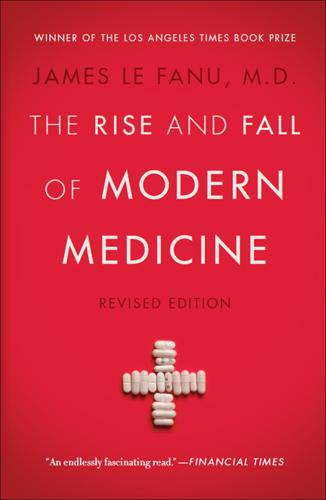
The Rise and Fall of Modern Medicine
by
M. D. James le Fanu M. D.
Published 1 Jan 1999
And just as the mode of action of chlorpromazine in blocking the dopamine receptors only became clear ten years after its introduction, so the mode of action of imipramine – that it blocked the receptors of the neurotransmitter 5HT – was not made till 1960, a full five years after Kuhn’s original observations.10 In the 1980s the popularity of the tricyclics was eclipsed by the Selective Serotonin Reuptake Inhibitors or SSRIs such as Prozac (fluoxetine), which had fewer side-effects. Their manner of discovery was, however, exactly the same as that of the tricyclics, having been identified as part of a screening programme of the antihistamine-type drugs that gave rise to chlorpromazine.11 The tricyclics and SSRIs were an accidental spin-off from a programme where drugs were first synthesised and then tested for possible therapeutic efficacy.
…
Nonetheless, its phenomenal success poses something of a paradox given ‘the Revolution in Psychiatry’ of the 1950s (as described in Chapter 4 of the Prologue) with the discovery in a very short period of drugs for the full range of mental illness – psychosis, anxiety, depression, mania, and two types of antidepressants of undoubted efficacy, widely prescribed. Then came Prozac, the first of the SSRIs (selective serotonin reuptake inhibitors), so called because of their ability to increase the level of the neurotransmitter serotonin in the brain, launched in 1989 with the dual advantage of being both easy to take (just a single pill a day) and better tolerated than its predecessors. Prozac rapidly displaced the earlier anti-depressant drugs such as amitriptylene, and within a few years doctors in Britain were writing 14 million prescriptions annually.
…
A number of family members have been treated with lithium with signal effect [Schou himself was among them]; they might have been hospitalised or dead if lithium treatment had not come round.’ Lithium was finally given a licence for use in the United States in 1970, twenty years after Cade’s original description of its effect on Mr W. B.’s mania.8 Antidepressants: Tricyclics, Selective Serotonin Reuptake Inhibitors (SSRIs) and Monoamine Oxidase Inhibitors (MAOIs) The first antidepressant – imipramine – arose directly out of the research programme that had led to the discovery of chlorpromazine. Roland Kuhn – a 38-year-old psychiatrist (and a disillusioned psychoanalyst) at Munsterlingen Hospital, Switzerland – requested from the drug firm Geigy supplies of imipramine, one of the drugs that had been synthesised as part of the research programme that had led to the discovery of chlorpromazine, intending to see whether it might be similarly – or more – effective in patients with schizophrenia.
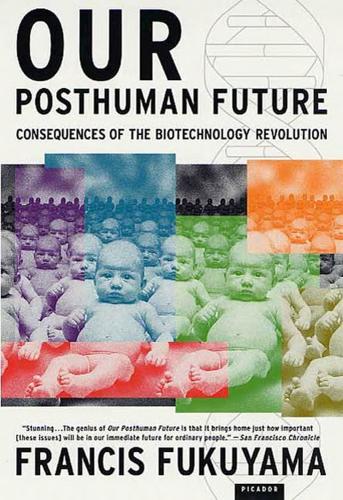
Our Posthuman Future: Consequences of the Biotechnology Revolution
by
Francis Fukuyama
Published 1 Jan 2002
We are already in the midst of this revolution and do not have to spin out science fiction scenarios to see how it might unfold. Take the antidepressant Prozac, manufactured by Eli Lilly, and related drugs, such as Pfizer’s Zoloft and SmithKline Beecham’s Paxil. Prozac, or fluoxetine, is a so-called selective serotonin reuptake inhibitor (SSRI), which, as its name implies, blocks the reabsorption of serotonin by the nerve synapses and effectively increases the levels of serotonin in the brain. Serotonin is a key neurotransmitter: low levels are associated, in both humans and other primates, with poor impulse control and uncontrolled aggression against inappropriate targets, and in humans, with depression, aggression, and suicide.3 It is unsurprising, then, that Prozac and its relatives have emerged as a major cultural phenomenon in the late twentieth century.
…
science ends of, amoral and human rights vs. religion scientific rationalism scientific research, regulation of scientists materialistic views held by public trust in relying on advice from self-serving interests of Scientologists Searle, John Second Amendment Secord, Paul secularization selective serotonin reuptake inhibitor (SSRI) self-esteem Sen, Amartya senility September 11 attacks serotonin levels of sex ratios sex selection, abortion and sexual attractiveness sexual differentiation sexuality ageing and genes and sexualization of brain sexual orientation Sexual Revolution Shaw, George Bernard Shinto “shirtsleeves to shirtsleeves in three generations” siblings adopted, studies of individual differences in sickle-cell anemia side effects of medical treatments of pharmaceutical drugs of psychotropic drugs Silver, Lee Singapore Singer, Peter SIR2 gene skin color Skinner, B.
…
In the future, virtually everything that the popular imagination envisions genetic engineering accomplishing is much more likely to be accomplished sooner through neuropharmacology.31 A class of drugs known as benzodiazepines may be used to affect the gamma-aminobutyric acid (GABA) system, to reduce anxiety, help maintain restful but active wakefulness, and produce adequate sleep in a shorter period, without the side effects of sedation. Acetylcholine system enhancers may be used to improve the ability to learn new facts, retain knowledge, and improve factual recall. Dopamine system enhancers may be used to increase stamina and motivation. Selective serotonin reuptake inhibitors in combination with drugs that affect the dopamine and norepinephrine systems may produce behavioral changes in areas in which the different neurotransmitter systems interact. Finally, it may be possible to manipulate the endogenous opiate system to decrease sensitivity to pain and increase the threshold of pleasure.
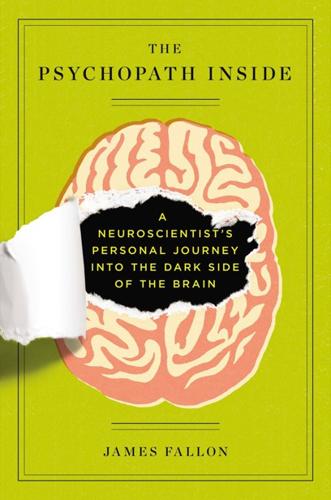
The Psychopath Inside: A Neuroscientist's Personal Journey Into the Dark Side of the Brain
by
James Fallon
Published 30 Oct 2013
The monoamines, in particular serotonin, dopamine, and norepinephrine, modulate synaptic signaling and help the machine work more smoothly. These are the transmitters most implicated in psychiatric disorders from schizophrenia to depression and bipolar disorder. For instance, the most popular antidepressants, including Prozac and Zoloft, are SSRIs, or selective serotonin reuptake inhibitors. They prevent the reuptake of serotonin back into the signaling neuron, allowing it to continue doing its job. Less popular types of antidepressant are MAOIs, or monoamine oxidase inhibitors, which block the enzymes MAO-A and MAO-B. These enzymes break down monoamines, so blocking them increases serotonin transmission.
…
(Turner), 69 Kissinger, Henry, 51 Kissinger, Walter, 51 Kitum Caves, 155–58 Landau, Lev, 165 language, brain function in, 51, 54, 123 Lecter, Hannibal (character), 15, 19 letters, criticism of author in, 194–96 Libertarians, 40–41, 104, 134 brain circuits and genetics of, 163–65 limbic system, 34, 49, 59, 61, 84, 90, 99, 123, 124, 140, 165, 208 love, 16, 137 romantic, 82, 100, 130–35, 146, 168 lying, 16, 85, 153, 215, 224 Macciardi, Fabio, 9–10, 87, 110, 115, 127, 199, 209 McClintock, Barbara, 77 McDermott, Rose, 81 Macdonald, John, 102 Madoff, Bernie, 218–19 magical thinking, 184, 213 major depressive disorder (MDD), 178, 181, 184 males: as psychopaths, 15–16, 215 warrior gene in, 81–82, 97 mania, 69, 173, 177–79, 182 manic-depression, see bipolar disorder manipulation, 14, 15, 16, 36–37, 102, 152–55, 197, 216, 217–18, 225 MAOA (gene), 73–74, 77, 79–82, 90, 110, 116 MAO-A (enzyme), 73, 75, 78, 79, 80, 84 MAO-B (enzyme), 78 Marburg virus, 154–55, 157 Mary Beth (author’s former friend), 197–98 Mayberg, Helen, 175 “MedGene” project, 115 melancholic depression, 178 memory, 49, 52, 75, 123, 183, 184 “memory of the future,” 52–53 Mendel, Gregor, 74 “Mental Illness: Bipolar Disorder and Depression,” 169 metabolomics, 89 methyl, 96 Meyer-Lindenberg, Andreas, 81 Mike (Diane’s brother), 132–33 MIND Institute, 60 Mirren, Simon, 109, 111–12 mirror neuron system, 54, 142–45, 145, 148 Missionary Position, The (Hitchens), 165 Moffitt, Terri, 80–81 monoamine oxidase inhibitors (MAOIs), 78 monoamines, 75, 77–79, 99–100, 182–83, 187, 206 morality, 2, 85, 113, 116–17 author’s view of, 28–29, 207, 209–11, 224 brain function and, 54–55, 61, 98, 114, 122, 123, 148 Morocco, 115–16 Morris, Dick, 162 motor cortex, 52, 57 murderers: brain damage in, 41, 59 brain scans of, 1–2, 19, 44–47 psychopathic, 64, 169, 184–85, 208 psychotic, 184–85 serial, 15, 19, 86, 149, 208 mutation, genetic, 73–74 Naik, Gautam, 109–12 Nairobi, 152, 154 narcissism, 111, 153, 190, 194, 218, 227 narcissistic personality disorder, 17, 148, 181 nature vs. nurture, 51, 96, 97 author’s evolving view of, 6–7, 18, 39–40, 79, 91, 105–6, 112, 116, 224–25 neocortex, 125 “Neuroanatomical Background to Understanding the Brain of a Young Psychopath” (James Fallon), 1 neuronal loops, 56–57 neurotransmitters, 44, 53, 56, 73–75, 77–80, 99, 145, 182, 206 see also specific transmitters non-Hodgkin’s lymphoma, 160, 167 norepinephrine, 78, 86, 99, 182, 183 nurturing, 225–26 of children, 98, 102–6 obesity, 10, 17, 92, 170, 181, 211–12 obsessions, 52 obsessive compulsive disorder (OCD), 82, 101, 181, 184 of author, 28–32, 34, 35, 40, 43, 116–18, 134, 175, 207 old age, 32–33 orbital cortex, 41, 45, 54, 55, 57–58, 61, 84, 98, 99, 101, 111, 113, 114, 117, 123, 164, 209 Orchid children, 102 Oslo, Norway, symposium at, 169–70, 173–74, 176–77, 182, 187, 194 Ottersen, Ole Petter, 176 “Outfoxed,” 111–12 oxytocin, 84, 127, 145 pair bonding, 84 panic attacks, 73, 181 of author, 33–35, 175, 178, 212 parahippocampal cortices, 60, 61 parenting, 6, 104–5, 225–26 Parkinson’s disease, 4, 46, 57, 87 partying, by author, 35–36, 135–36, 138, 151, 179, 195, 204 pathophysiology, 11 perfectionism, 28–29 personality: character vs., 187–88 genetic basis of, 206 Pesci, Joe, 14, 223 phenotype-genotype analysis, 175–76 planning, 54, 60 politics, author’s, 32, 40–41, 133, 163–65, 210 pop culture, psychopaths portrayed in, 13–15, 223 positron emission tomography (PET), 11, 19, 44–45, 57, 59, 63, 113, 114–15, 122, 146, 146, 182 posterior cortex, 50–51, 148 postpartum depression (PPD), 178 post traumatic stress disorder (PTSD), 46, 82, 222 prefrontal cortex, 52–54, 57, 60–62, 106, 113, 114, 123–24, 124, 209 disorders of, 74–76, 117, 121, 148 maturation of, 99–101, 118, 119, 120 premotor cortex, 52, 57 Preston, Richard, 157 promoters, 73–74, 82 protein, 73, 82, 96, 114 Prozac, 78 psychoanalysis, 124–25 psychometric testing, 11 Psychopath Lite, 15, 190, 199 psychopathy, psychopaths: author’s evolving theory of, 20, 61–62, 106 in author’s family history, 65–72, 86, 90, 92, 105, 108–13, 221 in business and finance, 218–20 casual use of term, 150 characteristics indicative of, 11–17, 60, 83–85, 102, 105, 125–26, 147, 153–54, 163, 194, 199–200, 206–7, 215–17, 225 comorbidity in, 17, 181, 185 evolutionary purpose of, 213–27 factors other than brain function in, 90–106 four factors of, 12–13, 16, 18, 190 genetics in, 11, 65–89, 90, 106, 109, 112, 206, 211, 215, 224–25 inadequate definition and diagnosis of, 9–12, 16–17, 105, 194, 207 limited understanding of, 5, 9–20, 76–77 mitigation of, 187–212, 225–26 pop culture portrayals of, 13–15, 223 “prosocial,” 161, 225 societal benefits of, 218–24 testing for, 11–16 Psychopathy Checklist, Revised (PCL-R; Psychopath Test; Hare’s Checklist), 12–18, 161, 190, 214, 218, 225, 227 psychotic major depression (PMD), 178 rape, 154 recklessness, 16, 35–37, 122, 140, 177, 181, 194, 223–24 as danger to others, 154–58, 175, 199–200, 206 “regular guy”: author as, 30–32, 64, 190 psychopath’s appearance as, 14, 15, 16–17, 217 religion: author’s abandonment of, 40, 126, 134–35, 176, 207, 210 belief in, 53, 146, 184 see also Catholicism remorse, lack of, 12, 14, 17, 206, 225 retrotransposons, 95 revenge, 153, 200–201, 219–20 risk taking, 218–19 RNA, 76, 89, 94–95 Rockefeller, Nelson, 30 Rodrigues, Sarina, 84, 145 Roth, Eli, 126–29 “Rubik’s Cube” brain model, 49–57, 122–26 Sagman, Doron, 181 Saks, Elyn, 182 Saxe, Rebecca, 148 schizophrenia, 3, 10, 33, 73, 74–76, 78, 85, 86, 87, 93, 100, 101, 105, 148, 163, 169, 181, 184 Scoma, Giovannina Giuseppina Salvetrica Sylvia, see Fallon, Jennie Scoma, Tomas, 70–72 seasonal affective disorder (SAD), 178 selective serotonin reuptake inhibitors (SSRIs), 78 self-assessment, 187, 194 self-confidence, 40, 114, 135 self-control, 1–2 self-testing, for psychopathy, 13 Senior Research Fulbright Fellowship, 142, 154 serial killers, 15, 19, 86, 149, 208 serotonin, 73, 75, 78–80, 82–84, 86, 99, 103, 113, 115, 123, 141, 145, 182, 183, 185 sex, 161, 168 author’s eschewing of, 29, 134 puberty and, 99 stimulation from, 83 sex chromosomes, 81–82 sexual hyperfunction, 61, 102 sexuality, 75, 162–63, 215, 217, 223 Silence of the Lambs, The, 15, 147 single nucleotide polymorphisms (SNPs), 73–74, 88 sins, 28–29, 201, 207 Smith, Winnie, 24 sociability, 17, 26, 30, 114, 117 see also partying social phobia, 82 sociopathy, psychopathy vs., 17–18, 190 somatic cells, 72 “Song of Lewes, The,” 70 spectrum disorders: bipolar disorder as, 179 psychopathy as, 11–12, 227 Spellman, Cardinal, 30 “splitters,” 47, 49 “Squalid Truth Behind the Legacy of Mother Teresa, The” (MacIntyre), 165 stem cells, 4, 18, 45–46 stress: in epigenetic alterations, 95–96 response to, 83–84, 215–16 in young adults, 100–101 stroke, 4, 34, 46 subgenual cingulate gyrus, 175 suicide, 181, 220, 222 superficiality, 12, 16, 225 superior parietal cortex, 50–51 Susannah (author’s friend), 189, 197, 198 sympathy, 55, 141–42, 146, 148 Tarantino, Quentin, 127 taxation, 210 Technology, Entertainment, and Design (TED) conference, 107–9, 111, 113 temporal lobes, 1–2, 41, 57–58, 60–62, 106, 115, 140, 144, 148, 171, 182, 183–85 temporo-parietal junction, 148 Teresa, Mother, 165 testes, 72 testosterone, 82, 85, 145 thalamic structures, 56 theory of mind, 55, 148, 160 Three-Legged Stool theory, 105–6, 107, 169, 177, 214 thymine (T), 72–73 Tingley, Dustin, 81 Tohen, Mauricio, 181 Torp, Reidun, 170 transcranial magnetic stimulation (TMS), 223 transcriptomics, 89 Turner, Ralph, 69 Ungerleider, Leslie, 53–54 valine-methionine polymorphism, 53 Valium, 34 vasopressin, 84, 127, 145 vehicular murder, 151 ventral stream, 53–55, 60, 99, 101, 113, 117–18, 118, 120, 121, 125, 148 ventromedial prefrontal cortex, 54, 57–58, 61, 84, 117, 123, 164 Vietnam War, 35, 38, 222 violence: in films, 127–29 global, 6, 108, 116–17 historical decline in, 221 predictors of, 13, 16, 90, 102 transgenerational, 108, 111, 115 warrior gene and, 73–74, 80–82, 90, 97–98 visual sensory system, 50, 54, 114–15 Wallinius, Märta, 16 Wall Street Journal, 109, 110, 112, 175, 202 war, warfare: effect on brain of, 4, 101 psychopathy in, 220–22 warrior culture, 108 warrior gene, 74, 77, 79–82, 97–98, 106, 108, 111, 214 in author, 86, 110, 153 benefits of, 218–24 testing for, 88, 115–16 weight, author’s swings of, 135–36, 139–41, 204, 205, 211–12 see also obesity welfare, 164, 166 “What’s on Jim Fallon’s Mind” (Naik), 110 Wheeler, John, 186 women: appeal of bad boys to, 6, 223 author’s relationships with, 26, 29, 134, 161, 168 as less aggressive than men, 81–82, 97 as psychopaths, 15 World Congress for Social Psychiatry, 115 World Science Festival, 182, 202 YouTube, 109 Zak, Paul, 84–85, 145 Zoloft, 78
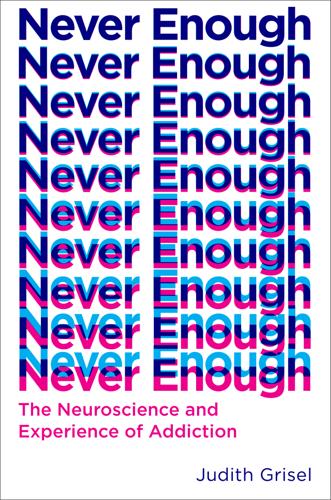
Never Enough: The Neuroscience and Experience of Addiction
by
Judith Grisel
Published 15 Feb 2019
Some of these changes are relatively transient, like tachyphylaxis in an occasional drinker, but as learning is stronger with repetition, chronic exposure to a drug results in more lasting alterations. For some drugs, such as antidepressants, adaptation is actually the therapeutic point. Developing tolerance to selective serotonin reuptake inhibitors (SSRIs) may help to change a pathological affective “set point” so that being depressed is no longer the patient’s normal state. With abused drugs, however, such changes are a real drag. As the brain adapts to a drug of abuse and the drug becomes less effective at stimulating dopamine transmission, a user must take more and more to produce the same high.
…
Unfortunately, it doesn’t look as if this is going to be the case with stimulants, and particularly for those abusing amphetamines or ecstasy. As discussed, coke, meth, and E interact not with receptors but with transporters, but that in itself is not what makes them dangerous. Indeed, selective serotonin reuptake inhibitors as well as older tricyclic antidepressants are some of the most well-known transporter-blocking drugs, and neither shows evidence of permanent brain damage. Even cocaine doesn’t appear to cause the same sort of long-term damage that amphetamines and ecstasy do, perhaps because it—like the antidepressants—stays in the synaptic gap rather than being transported into cells like its more toxic cousins.
…
An Addictive Personality Taking a more “macro” view, one commonly hears someone described as having an addictive personality (personality tends to reflect inborn and persistent tendencies), and indeed there may be aspects of personality that incline a person to use, but as usual the relationship is not simple. For example, the gene encoding the serotonin reuptake transporter (the same one affected by MDMA and SSRI antidepressants) can be inherited in multiple versions. These versions differ in how quickly the transmitter is recycled, and this small kinetic alteration has been associated with differences in the tendency to act impulsively, engage in pro-social behavior, and respond to stress. However, this influence is largely contingent on the amount of early childhood nurturing or maltreatment.
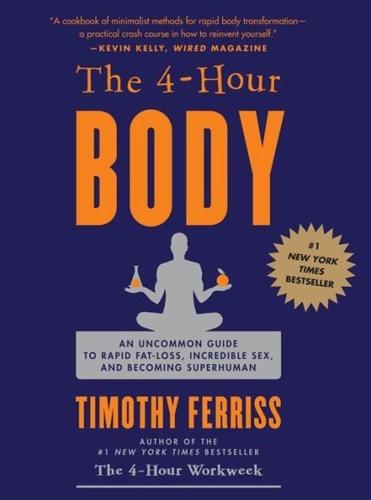
The 4-Hour Body: An Uncommon Guide to Rapid Fat-Loss, Incredible Sex, and Becoming Superhuman
by
Timothy Ferriss
Published 1 Dec 2010
I found one potential benefit particularly fascinating, given our focus on GLUT-4: both inulin and FOS improve calcium absorption, and calcium absorption promotes the contraction-dependent GLUT-4 translocation! If the anti-obesity effects weren’t enough, consider bacterial balance a crucial step in supporting your “second brain.” Most of us have heard of serotonin, a wide-acting neurotransmitter that, when deficient, is intimately linked to depression. Prozac and other selective serotonin reuptake inhibitors (SSRIs) act to increase the effects of serotonin. Despite the label “neurotransmitter,” which leads most people to visualize the brain, only 5% of serotonin is found in your head. The remaining 95% is produced in the gut, sometimes referred to as “the second brain” for this reason. In a randomized, double-blind, placebo-controlled study of 39 patients with chronic fatigue syndrome, Lactobacillus casei strain Shirota was found to significantly decrease anxiety symptoms.
…
George Marathon S-allyl cysteine salmonella salsa San Diego Rock ’n’ Roll Marathon Sarcev, Milos, 25.1, 25.2 sarcoplasm sarcoplasmic hypertrophy sauerkraut, 9.1, 46.1 scale, 5.1, 5.2, 9.1 SCF (stem cell factor) Schaller, George Schilling, Curt Schotter, Eric Schwarzenegger, Arnold science, see research Scott, Dave, 34.1, 48.1 scurvy “Seabiscuit” seasonal affective disorder (SAD) seasonings Seeking Wisdom selective serotonin reuptake inhibitors (SSRIs) selenium, 22.1, 46.1, 46.2 self-control, 8.1, 8.2 self-experimentation causality determined in goals of this book to improve your life minimal motivation in and placebo effect uses of, 42.1, 43.1 serotonin Sethi, Ramit, 6.1, 6.2 sex: buckwheat hull pillows for Cowgirl Position vs.
…
Improved-Angle pelvic grinding and pheromones protocols slow-sex movement Shamrock, Frank, 25.1, 47.1 Sharapova, Maria Sharpe, Richard SHBG (sex-hormone binding globulin) shin pain shoes: removing the heel of for running, 31.1, 31.2 Sietas, Tom Simmons, Louie Singh, Devendra sinus infections Sivers, Derek skepticism sleep and bedroom temperature and cold baths deep-wave dreaming early awakening and exercise gadgets for half military crawl position for and humidifier, 23.1, 23.2 insomnia light cues lucid dreaming minimalist monophasic, 24.1, 24.2 naps, 24.1, 24.2 NightWave pulse light polyphasic pre-bed snacks for and protein, 8.1, 23.1 REM, 23.1, 24.1 tools for Uberman schedule and wine sleep labs Slow-Carb Diet, 7.1, 8.1 breakfast, 8.1, 8.2 cheat days, 7.1, 8.1, 8.2, 8.3 common mistakes and misunderstandings compromise in data don’t drink calories, 7.1, 8.1 no dairy no fruit, 7.1, 8.1 plateaus in results rules of rules of omission same few meals, 7.1, 8.1 seasonings simplicity in snacks supplements and traveling white carbohydrates smallest meaningful change Smith, Brooke Smolov squat cycle, 32.1, 32.2 snacks pre-bed recipe traveling Snowball Snyder, Stephen social comparison theory Socrates SOD (superoxide dismutase) sodium soy products SpectraCell blood tests speed skating sperm banks, 22.1, 22.2 sperm count sperm production, 37.1, 46.1, 46.2 spinach Splenda SSRIs (selective serotonin reuptake inhibitors) Stack, Jack, 6.1 Stare, Fred, 3.1, 43.1 Starrett, Kelly statistics, manipulation of Steele, Lexington Steiner, Jeffrey stem cell factor (SCF) steroids, 13.1, 16.1, 46.1 stickK Still Tasty stimulants stir-frying Stockton, John stool analysis Strauss, Neil: eating habits of as food-processing machine food schedule of and Occam’s Protocol, 17.1, 17.2, 17.3, 18.1, 18.2 and vitamin D workout schedules of, 17.1, 17.2 Street, Picabo strength training adding weight avoiding collars barbell overhead press bench press, 17.1, 32.1, 33.1 and cardio competition conditioning conditioning vs.
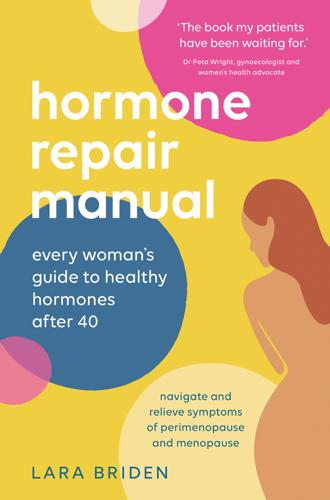
Hormone Repair Manual
by
Lara Briden
Published 14 Apr 2021
An antihistamine such as diphenhydramine can improve premenstrual mood symptoms and PMDD. Antidepressant medication is a common prescription, including SSRIs (selective serotonin reuptake inhibitors) or SNRIs (serotonin-norepinephrine reuptake inhibitors). They’re not as helpful as progesterone and estrogen for perimenopausal and menopausal mood symptoms and can cause side effects such as low libido, weight gain, fatigue and a withdrawal syndrome when you try to stop. SSRIs may also increase the long-term risk of osteoporosis and cognitive decline. Cognitive behavioural therapy (CBT) is a form of psychotherapy that focuses on modifying negative thought patterns and learning to respond to situations in more effective ways.
…
.: RB Hopkins, E Pullenayegum, R Goeree et al, ‘Estimation of the lifetime risk of hip fracture for women and men in Canada’, Osteoporosis International, 23(3), March 2012, pp921–7. 285: New research has discovered that . . .: JM Berger, P Singh, L Khrimian et al, ‘Mediation of the acute stress response by the skeleton’, Cell Metabolism, 30(5), November 2019, pp890–902.e8. 286: Medications that can contribute to bone loss include . . .: C Zhou, L Fang, Y Chen et al, ‘Effect of selective serotonin reuptake inhibitors on bone mineral density: a systematic review and meta-analysis’, Osteoporosis International, 29(6), June 2018, pp1243–51; YT Ghebre, ‘Proton pump inhibitors and osteoporosis: is collagen a direct target?’, Frontiers in Endocrinology (Lausanne), 11, 2020, article 473. 286: That’s according to research from Professor Prior . . .: JC Prior, ‘Progesterone for the prevention and treatment of osteoporosis in women’, Climacteric, 21(4), August 2018, pp366–74. 287: Print out the following study . . .: JC Prior 2018, ibid. 287: Tensile strength cannot be improved with calcium . . .: JG Zhao, XT Zeng, J Wang & L Liu, ‘Association between calcium or vitamin D supplementation and fracture incidence in community-dwelling older adults: a systematic review and meta-analysis’, JAMA, 318(24), December 2017, pp2466–82. 288: Calcium supplements are frequently recommended . . .: MJ Bolland, A Grey & IR Reid, ‘Calcium supplements and cardiovascular risk: 5 years on’, Therapeutic Advances in Drug Safety, 4(5), October 2013, pp199–210. 288: Don’t force yourself to eat cow’s dairy . . .: TC Wallace, S Jun, P Zou et al 2020, op. cit. 288: In fact, according to Harvard nutrition scientist Walter Willett . . .: J Harkinson, ‘The scary new science that shows milk is bad for you’, Mother Jones, November/December 2015, motherjones.com/environment/2015/11/dairy-industry-milk-federal-dietary-guidelines 288: It’s sometimes prescribed for bone health . . .: G Formoso, E Perrone, S Maltoni et al 2016, op. cit. 288: They increase bone density (surrogate marker) but . . .: S Ma, EL Goh, A Jin et al, ‘Long-term effects of bisphosphonate therapy: perforations, microcracks and mechanical properties’, Scientific Reports, 7, March 2017, article 43399. 288: Teppo Järvinen says . . .: G Schwitzer 2015, op. cit. 289: Muscle also improves insulin sensitivity and . . .: JY Reginster, C Beaudart, F Buckinx & O Bruyère 2016, op. cit. 289: Identify and reverse insulin resistance because . . .: DR Weber 2017, op. cit. 289: Support a healthy circadian rhythm . . .: CM Swanson, WM Kohrt, OM Buxton et al, ‘The importance of the circadian system and sleep for bone health’, Metabolism, 84, July 2018, pp28–43. 290: A nutritional approach to support collagen . . .: D König, S Oesser, S Scharla et al, ‘Specific collagen peptides improve bone mineral density and bone markers in postmenopausal women – a randomized controlled study’, Nutrients, 10(1), January 2018, article 97. 290: Vitamin D3 promotes the healthy absorption of calcium . . .: GK Schwalfenberg, ‘Vitamins K1 and K2: the emerging group of vitamins required for human health’, Journal of Nutrition and Metabolism, 2017, article 6254836. 291: Melatonin can improve markers of . . .: MP Kotlarczyk, HC Lassila, CK O’Neil et al 2012, op. cit. 291: By ten years into menopause . . .: AA Merz & S Cheng, ‘Sex differences in cardiovascular ageing’, Heart, 102(11), June 2016, pp825–31. 292: Part of the risk is due to the relative androgen . . .: D Zhao, E Guallar, P Ouyang et al, ‘Endogenous sex hormones and incident cardiovascular disease in post-menopausal women’, Journal of the American College of Cardiology, 71(22), June 2018, pp2555–66. 292: A troubling study from the Journal of the American Heart Association . . .: OA Alabas, CP Gale, M Hall et al, ‘Sex differences in treatments, relative survival, and excess mortality following acute myocardial infarction: national cohort study using the SWEDEHEART registry’, Journal of the American Heart Association, 6(12), December 2017, article e007123. 294: It’s currently recognised as the best way to . . .: MH Geisel, M Bauer, F Hennig et al, ‘Comparison of coronary artery calcification, carotid intima-media thickness and ankle-brachial index for predicting 10-year incident cardiovascular events in the general population’, European Heart Journal, 38(23), June 2017, pp1815–22. 294: Put it this way: if you’re high enough risk to . . .: ‘Fact check: is a coronary calcium score the best indicator of heart attack risk?’
…
After two months, her breast pain was entirely gone. Conventional treatment for breast pain Choose a bra that is supportive, well-fitted and with no underwire. Try painkillers such as paracetamol or ibuprofen for occasional (not daily) use. Avoid (if possible) medication that can cause breast pain, such as certain SSRI antidepressants, diuretics, the pill and spironolactone (Aldactone®). Check with your doctor. Use progesterone, which can relieve breast pain as a nice side benefit if it’s prescribed for something else. Your doctor is unlikely to prescribe progesterone for the purpose of treating breast pain, although it would be safe to do so.
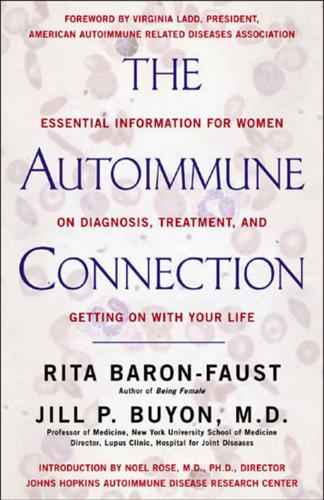
The Autoimmune Connection
by
Rita Baron-Faust
and
Jill Buyon
Published 21 Apr 2003
“While the major treatment of fibromyalgia is really physical exercise, for those patients who have sleep disturbances we often use a low dose of a tricyclic antidepressant, or the antiseizure medication gabapentin (Neurontin), which helps both chronic pain and sleep problems,” says Dr. Petri. “We also use selective serotonin reuptake inhibitors (SSRIs) for patients who have clinical depression.” The tricyclic antidepressant used most often is amitriptyline (Elavil ). Low doses of tricyclics have also been shown to help women who suffer migraine and tension headaches, noncardiac chest pain, irritable bowel syndrome, insomnia, and a variety of chronic pain syndromes. Women with insomnia who can’t tolerate tricyclics are often helped by trazodone (Desyrel ) or zolpidem (Ambien) taken at bedtime. The SSRIs and mixed antidepressants (which affect both serotonin and norepinephrine, neurotransmitters that modulate sleep and immune system function) most frequently prescribed for fibromyalgia patients include fluoxetine (Prozac), nefazodone (Serzone), and paroxetine (Paxil ).
…
Throughout life, women are twice as likely as men to suffer from depression—and it’s also a more common symptom in people with MS. A small study from the University of California at San Francisco, reported in the Archives of Neurology in 2001, found that the antidepressants known as selective serotonin reuptake inhibitors (SSRIs) not only help relieve depression, but 262 The Autoimmune Connection also significantly reduce levels of gamma interferon. The researchers suggest that treating depression could also be an important factor in down-regulating autoreactive T-cells. Ana’s story continues: In a sense, MS has actually freed me . . . giving me a chance to do more things that I love.
…
The same kinds of treatments that help women with fibromyalgia also work with CFS. Cognitive behavioral therapy and graduated exercise programs can greatly help many women, and low-dose tricyclic antidepressants help with sleep 354 The Autoimmune Connection and pain. While other antidepressants, including the selective serotonin reuptake inhibitors, can also improve symptoms of CFS, they can cause fatigue in therapeutic doses, so your doctor may have to increase the dosage slowly. Some women with CFS benefit from benzodiazepines, used to treat anxiety and sleep problems. You may need to try more than one drug before finding one that works for you.

The Industries of the Future
by
Alec Ross
Published 2 Feb 2016
Then came a new generation of antidepressants that transformed the broader world and our understanding of mental health disorders. Prozac, the first of these selective serotonin reuptake inhibitors (SSRIs), was pitched by pharmaceutical giant Eli Lilly as an easy-to-prescribe “one pill fits all” for those with depression. Following FDA approval in 1987, nearly 2.5 million prescriptions were issued in its first year on the market. The drug largely worked and became Eli Lilly’s blockbuster. Fifteen years after it hit the market, 33 million Americans were taking Prozac and other SSRIs that followed: Zoloft in 1991 and Paxil in 1992. By 2008, antidepressants were one of the most common drugs taken by Americans and the most prescribed drugs for Americans under age 60.
…
See autonomous cars Shamoon, 121–23, 125–26, 131 Shapiro, Rob, 221 Shimba Technologies, 71 Silicon Valley Bank, 167, 169 Silk Road, 110 Singapore, 196–97, 216, 221 Singer, Peter, 147–48 Singulariteam, 26 Skolkovo Foundation, 204 Slaby, Michael, 156–57, 185 Smith, Adam, 111 Snowden, Edward, 145 Songhurst, Charlie, 94–95, 104, 114–15, 190–92, 245 Sony, 131, 138 South Korea, 3, 20, 22, 35, 40, 128, 131, 189, 221 Soviet Union, 4, 68, 140, 204–7, 209 spam, 105, 134 Square, 78–81, 83, 87, 113, 170–71, 182, 217 SSRIs (selective serotonin reuptake inhibitors), 54. See also antidepressants Standard Treasury, 167–69 Stanford University, 30, 48, 58, 60, 70, 172, 188, 243 Startup Weekend Kyiv, 213 Steinhafel, Gregg, 125 Stripe, 79, 87 suicide, 55, 165 Summers, Larry, 112–13, 195 Sutent, 46, 51 Swiss Federal Institute of Technology, 109 Syrian Electronic Army, 126–27.
…
By 2008, antidepressants were one of the most common drugs taken by Americans and the most prescribed drugs for Americans under age 60. Today most medical treatments for depression involve a combination of SSRIs and cognitive therapy, an approach that works to some degree on about two-thirds of depressed patients. But even with the best care in the world, treatment often involves what amounts to educated guesswork. The people I know with depression are regularly adjusting drugs and doses at their doctor’s direction. There are a small number of drugs to work with, all variations on a formula that’s now over 20 years old, and the doctor prescribes these based on instinct and experience.
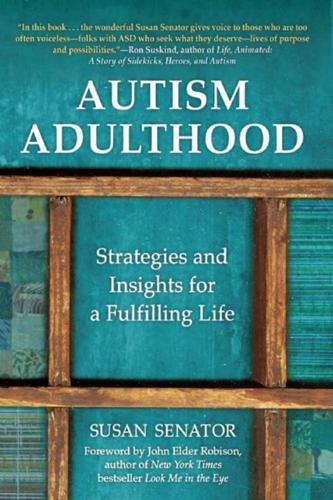
Autism Adulthood: Strategies and Insights for a Fulfilling Life
by
Susan Senator
Published 4 Apr 2016
And he had even less to say than before.” He lost thirty pounds, ultimately going from 135 to 105, between January and June. He was emaciated by the summer. His doctor thought it was depression, and prescribed an increase in his tiny dose of SSRIs (Selective Serotonin Reuptake Inhibitor). But this only made him have incessant tics, and did nothing to improve his affect, language, appetite, or motor challenges. The SSRIs were tapered off and the tics stopped, but the deterioration continued. Tyler continued declining in numerous ways. “He looked like a ninety-year-old with Parkinson’s,” Liz said. “He would have trouble making it to the bathroom, so he’d have accidents literally standing in front of the toilet, because he couldn’t get his pants down.”
…
The term “seizure” is often used interchangeably with “convulsion.” Convulsions occur when a person’s body shakes rapidly and uncontrollably. During convulsions, the person’s muscles contract and relax repeatedly. There are many different types of seizures. Some have mild symptoms without shaking. Selective Serotonin Reuptake Inhibitor (SSRI): a class of compounds (also called serotonin-specific reuptake inhibitors) typically used as antidepressants to treat depressive disorders and anxiety disorders. Self-Determination: an empowerment movement in the disability community and supported by the United States Government that, according to the Arc of the US, believes that “People with intellectual and/or developmental disabilities (I/DD)1 have the same right to, and responsibilities that accompany, self-determination as everyone else.

Overcoming Compulsive Hoarding
by
Jerome Bubrick
Published 31 Dec 2010
There are three major categories of antidepressants: selective serotonin reuptake inhibitors (SSRIs), tricyclics, and monoamine oxidase inhibitors (MAOIs). SSRIs SSRIs work by affecting the brain’s regulation of serotonin. Currently, they are quite popular because they are believed to cause fewer bothersome side effects than the tricyclics and MAOIs. Perhaps you know someone who is taking one of the common SSRI medications: Prozac, Luvox, Zoloft, Effexor, Paxil, Celexa, or Lexapro. Some of these medications can be taken once a day, even once a week, in pill or liquid form. Tricyclics In spite of the recent popularity of SSRIs, tricyclic antidepressants are once again becoming popular because they are quite effective.
…
Anafranil has been around for a very long time, and it was the first medication approved to treat OCD. Although it is within the tricyclic category, Anafranil is considered a partial serotonin reuptake inhibitor. In other words, it works somewhat like a SSRI. MAOIs These antidepressants act by blocking the action of the enzyme amine oxidase. There are three well-known MAOIs: Marplan, Nardil, and Parnate. A MAOI is prescribed when a patient is not doing well on a tricyclic or an SSRI. Tricyclics and SSRIs should not be taken with MAOIs because they could cause your blood pressure to skyrocket. In fact, if you are on an MAOI, you have to follow a special diet avoiding a substance known as tyramine (found in aged cheeses, air-dried sausages, fava beans, sauerkraut, chocolate, Chinese food, and some alcoholic beverages) so that your blood pressure does not go up.
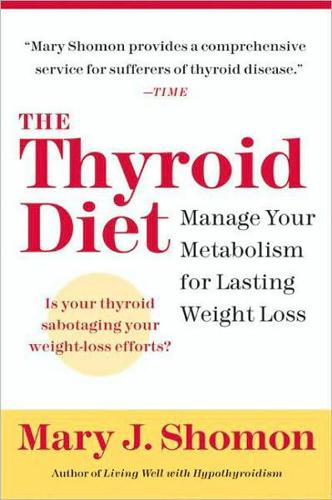
The Thyroid Diet
by
Mary J. Shomon
Published 31 Aug 2004
The monthly cost ranges from $70 to $115 and may be covered by insurance in some cases. Stress-Reduction Drugs Sometimes anxiety is chronically debilitating. At this point, some physicians would recommend medication. The medications used most often to treat anxiety include Certain selective serotonin reuptake inhibitors (SSRIs) such as paroxetine hydrochloride (Paxil CR) Tricyclic antidepressants such as imipramine hydrochloride (Tofranil), desipramine hydrochloride (Norpramin), and clomipramine hydrochloride (Anafranil) Benzodiazepines such as alprazolam (Xanax), diazepam (Valium), lorazepam (Ativan), and clonazepam (Klonopin) Some of these medications can be addictive and have a variety of side effects, so be sure to thoroughly discuss with your practitioner any plans to take an antianxiety drug.
…
pain nadolol (Corgard) nails Naparstek, Belleruth naproxen sodium (Aleve) nasal radium therapy, Nastech PYY 3-36 spray natural thyroid (Armour, Naturethroid) neck trauma needle biopsy nefazodone (Serzone) negative thinking neuroendocrinology neuropeptide Y (NPY) niacin (Vitamin B3) nodules treatment of nonsteroidal inflammatory drugs (NSAIDs) nuclear accidents nutrition metabolism and nutritional consultation nuts nystatin obesity: apple-shaped distribution in following RAI therapy leptin and in metabolic syndrome pear-shaped distribution in stereotypes surrounding olive oil omega-3/alpha-linolenic acid (ALA) omega-6/linoleic acid/gamma-linolenic acid (GLA) omelets orlistat (Xenical) orthostatic hypotension oxygen pancakes, buckwheat pancreas panic attacks pantethine pantothenic acid (vitamin B5) papillary thyroid cancer parasites parathyroid glands paroxetine hydrochloride (Paxil CR) passionflower pasta salad with chicken or turkey Paxil peanuts peppers stuffed bell perchlorate perimenopause pesticides pesto phaseolus vulgaris phendimetrazine (Bontril, plegine, Prelu-2) phentermine (Adipex-P, Ionamin, Fastin) Physique Transformation Program Personal Food Analyst (PFA) of Pilates pineal gland Pistor, Michel pituitary disease pituitary gland pituitary tumors plantar fasciitis podell, Richard pork enchilada casserole (con salsa verde) pulled serving sizes for positive thinking postmenopause postpartum symptoms postpartum thyroiditis poultry serving sizes for pranayama pregnancy complications with thyroid nodules and pregnenolone probiotic Pearl probiotics progesterone propanolol (Inderal) propylthiouracil (PTU) protein lean Prozac psoriasis psyllium pulled pork pulse pumpkin seeds push-ups pyroxidine (vitamin B6) pyruvate qigong radiation for thyroid cancer radioactive iodine treatment (RAI) hypothyroidism as result of radioactive isotope thyroid scan ratatouille Reiki resistin reverse T3 test rheumatoid arthritis rhodiola Richards, Byron rimonabant Risks and Symptoms Checklist rocket fuel rofecoxib (Vioxx) Rooney, Ric royal maca saccharine S-adenosylmethionine (SAMe) St. John’s wort salad: chicken pasta, with chicken or turkey tuna salt, iodized sauce: mushroom, chicken with pesto roasted garlic sun-dried tomato topping scallops seared schizandra Sears, Barry selective serotonin reuptake inhibitors (SSRIs) selenium serving sizes 7-KETO (3-acetyl-7-oxo-dehydroepiandrosterone) sex drive, low Shames, Richard and Karilee sheehan, Daniel shellfish seared scallops sibutramine (Meridia) skin sleep snacks sodas soup, roasted butternut squash soy burgers soy ginger vinaigrette soy products controversy over soy sauce spirulina starch blockers starches to avoid higher-glycemic low-glycemic serving sizes for stevia stimulants strength training, see exercise, weight-bearing stress chronic drugs for stuffed bell peppers sucralose sugar sugar alcohols sun-dried tomato topping supplements surgery: for goiter for hyperthyroidism, see thyroidectomy for nodules for thyroid cancer sweeteners syndrome X, see metabolic syndrome T1 T2 T3 (triiodothyronine) synthetic, see liothyronine time-released, compounded T4 (thyroxine) synthetic, see levothyroxine T7 tacos, fish taco salad taurine tea green herbal Teitelbaum, Jacob tendonitis terbinafine hydrochloride (Lamisil) Thorpy, Michael thyroid: symptoms of dysfunction of treatment for thyroid cancer anaplastic diagnosis of follicular medullary (MTC) papillary symptoms of treatment of Thyroid Diet Success Guide (Shomon) thyroid disease causes and risk factors of prevalence of thyroidectomy weight gain and thyroid function, seasonal variance in thyroid gland enlarged see also goiter thyroid hormone conversion thyroid hormone replacement therapy guidelines for optimization of after RAI weight loss and thyroid hormone resistance thyroiditis thyroid nodules, see nodules thyroid-stimulating antibodies (TASb) thyroid-stimulating hormone (TSH) levels of, see TSH levels testing, see TSH tests thyroid-stimulating immunoglobulin (TSI) thyrotropin-releasing hormone (TRH) Tonalin topiramate (Topamax) total T3 test total T4 (total thyroxine) test toxic exposures trace elements analysis (TEA) trans-fatty acids treats Treves, Silvia triglycerides medium-chain (MCTs) trimethyl glycine (TMG) TSH levels: borderline in Hashimoto’s thyroiditis in hyperthyroidism normal after thyroid cancer after thyroidectomy TSH tests new guidelines for overreliance on tuna salad tuna tartare turkey meatloaf pasta salad with tyrosine ultrasound tests valerian valproate (Depakote) vegetable oils vegetables high-glycemic low-glycemic ratatouille roasted butternut squash soup serving sizes for venlafaxine (Effexor) vinaigrette, ginger soy vitamin B vitamin B3 (niacin) vitamin B5 (pantothenic acid) vitamin B6 (pyroxidine) vitamin B12 vitamin C vitamin E Waehner, Paige walking water weight: consistency in maintenance of optimal thyroid and weight gain adrenal imbalances and drugs as cause of hyperthyroidism hypothyroidism and television and thyroid cancer and thyroid dysfunction and thyroidectomy and weight loss blood sugar and exercise and exercise needed for in hyperthyroidism support groups for thyroid drugs prescribed for thyroid hormone replacement and and TSH levels Weight Watchers Online Winkelman, John Winsor, Mari Wolcott, William women: BMR for calorie worksheet for exercise and fiber needs of nodules in optimal weight for thyroid cancer in thyroid disease in yeast yeast infections Yersinia enterocolitica yoga yogurt cheese (lebneh) zinc Zoloft Zone diet zonisamide Zyban ACKNOWLEDGMENTS I’d like to thank my agent and friend, Carol Mann, who in her calm and steady way always manages to keep me headed in just the right direction.
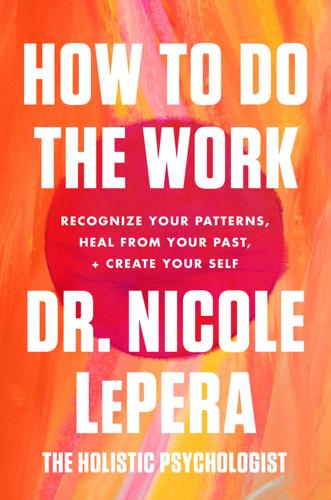
How to Do the Work: Recognize Your Patterns, Heal From Your Past, and Create Your Self
by
Nicole Lepera
Published 9 Mar 2021
Our emotional state actually does make our stomach feel sick. In fact, 90 percent of the neurotransmitter serotonin, commonly referred to as “the happy hormone” (though it is also involved in sleep, memory, and learning), is made in our gut. This finding has led to the theory that a group of antidepressants called selective serotonin reuptake inhibitors (SSRIs), such as Prozac, actually act on the serotonin produced “below the neck” in the ENS. This profound insight overturned an older belief that these neurochemicals were made only in the brain. When we were sick psychologically, we thought, the root cause must be identified and treated “above the neck.”
…
, 51 infancy, 113–15 attachment styles in, 124–26, 160 inflammation, 15, 69, 81, 87, 93–94 cytokines and, 69, 81, 93–94 leaky gut and, 93–94 reducing, 98, 101 Wahls Protocol and, 89 information, consumption of, 84 inner child, xxiii, 25, 121–39, 147, 257, 278 Do the Work: Write an Inner Child Letter to Yourself, 135–39 ego as protector of, 142, 143 meeting, 132–33 personality archetypes of, 129–30, 135–39 wounds of, 127–29, 131, 132, 135, 162, 278 interdependence, 243–57, 278 authentic friendship and, 248–50 collective “we” and, 251–54 Do the Work: Assess Your Interdependent Relationships, 254–55 FSJ: Creating Interdependence, 255–57 SelfHealer community and, 246–47 state of honest togetherness and, 245 interpersonal therapy, 6 intuition, 27–28, 146, 190, 278 childhood trauma and, 48, 50–51 rejection of, 40 intuitive Self, 27–28, 132, 278 healing and reconnection with, 89–90 Janet, Pierre, 40 Jessica (client), 23–25, 27, 30–32 John, 234–36 Joshua and Shira, 169–70, 171 journaling, see Future Self Journaling judging others, 146–47 Langer, Ellen, 33 Lazarus, Richard, 57 leaky gut, 93–94 “learning brain,” 73, 114 life of the party archetype, 130, 137–38 limbic system, 33 Lipton, Bruce, 11–12, 13 loneliness, 215, 226, 247 longevity, breathwork and, 98 love, authentic, 171–73, 275 lung capacity, 98 maladaptive coping strategies, 57–58, 276 Maté, Gabor, 12, 68 maturity, see emotional maturity meditation, 7, 33, 90, 236, 241 body connection, 238–39 visualization, 84 memories: from childhood, lack of, 43 dissociation and, 75 painful, of parent-figure, 49 mental/emotional boundaries, 187–88, 200 emotional dumping and oversharing and, 188–90 mental health care: inequities in access to, xxiii traditional model of, 1–3, 5–8 mental resistance, 30 microbiome, 70, 92, 93, 94, 105 “mind,” xxiii mind-body healing practices, 87–106 Ally’s SelfHealing journey and, 88–90 discomfort and, 91 healing sleep, 96–97 healing the gut, 91–96 healing with breath, 90, 97–100, 106 healing with movement, 100–101 healing with play, 101–3 LePera’s experiences with, 87–88, 103–4 potential within for, 87–88 top-down and bottom-up processes in, 89–91 mind-body-soul connection, 8–11, 87–88 mindfulness, 7 misunderstandings: being at peace with, 227 fear of, 226 monkey mind, 27, 36, 278 movement, 231 healing with, 100–101 multiple sclerosis (MS), Ally’s SelfHealing journey and, 17–19, 88–90 Murthy, Vivek, 248 nature, finding and witnessing, 84, 241 needs, honoring, even though it meant others would be hurt, 217–20 needs, unmet: boundaries and, 185 trauma bonds and, 161–62, 163, 170 negative thoughts, 34, 57, 208 negativity bias, 278 nervous system, xvi, xxi, 7 parasympathetic, 72, 73, 78, 93, 97, 279 restoring balance to, 83–85, 90, 110 sympathetic, 73–74, 98, 280; see also fight-or-flight response see also autonomic nervous system nervous system dysregulation, xxiii, 29, 43, 65–85, 93, 276 body’s stress responses and, 67–71; see also fight-or-flight response; immobilization co-regulation and, 77–78 Do the Work: Assess Your Nervous System Dysregulation, 82–84 emotional addiction and, 78–81 especially damaging for oppressed populations, 70–71 FSJ: Restoring Balance, 85 healing, 87–106, 110; see also mind-body healing practices LePera’s experience of, 65–67, 71, 87–88 physical symptoms and, 81–82, 93 social world and, 76–77, 82 Nestor, James, 98 neuroception, 76, 77, 102, 114 neurochemicals, 14, 80, 92–93, 100, 160, 163 neuroimmunology, 94 neuroplasticity, 32–33, 87, 278 neurotransmitters, 78, 92, 238 niceness, 183–84 ninety-second rule of emotions, 228–30 nocebo effect, 14–15, 279 “no,” learning to say, 183, 184 normative stress, 68, 279 Not Nice (Gazipura), 183–84 nutrition, xvi oppression, health consequences of, 70 overachiever archetype, 129, 136 oversharing, 188–89 oxytocin, 77, 164 pandemic, 113, 260 parasympathetic nervous system, 72, 73, 78, 93, 97, 279 parent-figures: attachment styles and, 124–26 child’s core belief system and, 114, 115, 116–18 child’s dependency on, 113–14 child’s stories about, 107–10 co-regulation of child and, 77–78, 114, 232 emotional immature, 225–26 emotionally immature, 209–10 enmeshment and, 181–82 guide role of, 45–48 reparenting and, 215–16, 217 who cannot regulate their emotions, 4–5, 54–57, 62–63, 168, 177 who complains to child about other parent-figure, 53 who denies your reality, 48–49, 60, 165–66, 174 who does not model boundaries, 52–53, 61–62, 167, 175 who does not see or hear you, 49–51, 60, 166, 174 who is overly focused on appearance, 53–54, 62, 167–68, 176 who project their own unresolved traumas onto their children, 45–46 who vicariously lives through you or molds and shapes you, 51–52, 61, 166–67, 175 past, seeking to relive, 29–30, 163–64 Pavese, Cesare, 26, 260 peer validation, 48–49 people pleasing, 58, 143 perfectionism, 23, 44 Philadelphia School of Psychoanalysis, 6, 65 physical boundaries, 186, 199 physical health symptoms, 67 physical movement, xvi, 31–32 physical symptoms, 8, 30, 83 placebo effect, 13–15, 279 nocebo effect and, 14–15 play, 214 healing with, 101–3 Play (Brown), 214 polyvagal theory, 71–72, 75, 87, 88, 279 see also vagus nerve Porges, Seth, 103 Porges, Stephen, 71, 75, 77, 100, 101, 102 prefrontal cortex, 26, 33, 208, 279 present moment: living in, 32, 36, 84 power of, 26 private space, parent-figure’s violation of, 52–53 probiotics, 94, 95 Prozac, 92 pseudoselves, 54 psychoanalysis, xxii, 6–7, 65–66, 210 psychoneuroimmunology, 15, 279 racism, xi, 44, 70–71 reactivity, 24–25, 27, 31–32 self-accountability check-ins and, 236–37 reality-denial, by parent-figure, 48–49, 60, 165–66, 174 relationships, xxiii–xxiv attachment style in infancy and, 124, 126, 160 boundaries in, 190–96 compassion for other people in, 196 emotional addiction and, 80–81 inner child wounds and, 128–29 interdependence and, 245 interpersonal therapy and, 6 trauma bonds in, 160–65 reparenting, 207–23, 257, 279 dealing with loneliness, disappointment, and anger in, 215–17 Do the Work: Develop a Reparenting Menu, 220–23 emotionally immature parent-figures and, 209–10 four pillars of, 211–15, 220–23 by LePera, 217–20 repression, 145–46 rescuer/protector archetype, 129–30, 137 resource boundaries, 186–87, 200 “rest and digest,” 72, 82, 279 reticular activating system (RAS), 111–12, 118, 130, 279 rigid boundaries, 83, 184, 186–88, 213, 261 romantic relationships, 77, 128 attachment style in infancy and, 126, 160 same-sex, 55–57 sexual chemistry in, 163, 164 trauma bonds in, 160–65 Rubin Museum of Art, New York, 26, 259 Scaer, Robert, 44, 45 schizoprenia, 12, 94 secure attachment style, 124–26, 234 selective serotonin reuptake inhibitors (SSRIs), 92 Self, authentic, xxiv, 26, 57, 113, 118, 133, 145–46, 167, 184, 226, 234 in childhood, 51, 113, 116–18, 128, 181–82 connecting to, xxii, xxiii, 261 disconnection between thoughts and, 35 enmeshment and, 181–82 reconnecting with, 257 trauma and severed connection to, 44, 45 trauma bonds and, 161, 162 self-accountability check-ins, 236–37 self-betrayal, 18, 21, 25, 39, 58, 162, 173, 212, 279 self-care, 186, 211, 213–14, 222, 232–33, 260 self-harming behaviors, 39 self-truth, 150–51 sensations, witnessing changes in, 34–35, 212, 229–30 serotonin, 92, 100 sex, dissociation and, 58 sexual abuse, 40–41, 121–22, 133–35 sexual addiction, 123 sexual chemistry, 163, 164 shadow self, 145–46, 150–51, 154, 256, 280 shame, 30, 87, 132, 134–35, 144, 146, 164 Shaver, Phillip, 160 shutdown symptoms, 83 silent treatment, 54–55, 56, 166 singing, healing with, 90, 102–3 sleep, improving, 96–97 social activation, 75, 77 social anxiety, 76, 82, 126, 226 social engagement mode, 72–73, 77, 78, 80, 90, 125, 128, 183, 230, 252, 280 children’s development and, 114, 125 social media, 1, 3, 39, 81, 168, 193, 226, 232, 247 social symptoms, 83 soothing, 230–31, 280 activities for, 240–41 spiritual practices, 208 spiritual trauma, 280 stage parents, 51–52, 61 Strange Situation Classifications, 124–25 stress, 67–71, 157–58 adaptive and maladaptive coping strategies around, 57–58 chronic, 68, 74, 91–92 dissociation as response to, 40 fight-or-flight response and, 68, 69–70, 72, 73–74, 75, 277 helping children make sense of, 233 immobilization (freezing) response and, 68, 75, 80 normative, 68, 279 polyvagal theory and, 71–72 racism, bias, and bigotry and, 70–71 self-accountability check-ins and, 236–37 signals of, mistaken for sexual attraction and chemistry, 162–64 social world and, 76–77, 82 trauma body and, 67–71 stuckness, 44, 132, 143 in cycle of reactivity, 24–25 feelings of, 1–3 questions for reflection on, 19–20 subconscious, 6–7, 16, 76, 81, 116, 118, 164, 280 homeostatic impulse and, 29–30 practicing thoughts in, 26–27 see also autopilot subconscious Self, 28–29 substance abuse: denial of, 49 recovery from, xi, 7 Sunseri, Justin, 75 support, reaching out to someone for, 241–42 survival-based parenting style, 49–50 “survival brain,” 78, 114–15, 280 Susan, 179–81, 182, 186 sympathetic nervous system, 73–74, 98, 280 see also fight-or-flight response Taylor, Steve, 207, 245 telomeres, 98 tension symptoms, 83 thoughts, xxii becoming conscious of, 34–35 monkey mind and, 27, 36 power of, 33–34 practiced, beliefs as, 110, 119 practicing, 26–27 purpose of, 27 Together (Murthy), 248 top-down processes, 89–91 transference, 210 trauma(s), 7, 39–63, 280 ACEs framework and, 41, 43–44, 67, 125 adaptive and maladaptive coping strategies and, 57–58, 276 childhood, archetypes of, 48–55, 165, 174; see also parent-figures childhood conditioning and, 46–47 core beliefs shaped by, 110 Do the Work: Identify Your Childhood Wounds, 59–63 identifying your wounding and, 47–48, 59–63 LePera’s experience of, 41–43, 47, 55–57, 66 physical health issues and, 65–85; see also mind-body healing practices; nervous system dysregulation polyvagal theory and, 71–72 potential for change and, 59 as unavoidable part of life, 59 wider definition of, xvi, 43–45 trauma bonds, 157–77, 182, 280 approach/withdrawal patterning in, 169–70, 171 archetypes and, 165–68, 174–77 authentic love and, 171–73 conditioned in childhood, 161, 163 description of, 160–61 Do the Work: Identify Your Trauma Bonds, 174–77 sexual chemistry and, 163, 164 signs of, 161–62 unconscious, xxii, 26, 146 intuitive Self and, 27–28, 278 underachiever archetype, 129, 136–37 vagal tone, 87, 280–81 improving, 82, 90–91, 95, 98, 99, 100–101, 102–3 poor, troubling issues associated with, 74, 76, 81–82 vagal tone stimulators, 90 vagus nerve, 71–73, 81, 92, 105, 230 activated, stress responses and, 72, 73, 78, 110, 141, 192 breathwork and, 98, 99 immobilization and, 75 polyvagal theory and, 71–72, 75, 87, 88, 279 return to state of balance and (social engagement mode), 72–73, 78, 90, 230, 252 singing and other playtime activities and, 90, 102–3 top-down and bottom-up processes and, 90 yoga and, 100–101 validation, need for, 118 van der Kolk, Bessel, 43, 69 venting, 189 visiting our families, difficulty of, 227 visualization meditation, 84 Wahls, Terry, 19 Wahls Protocol, 89 Western medicine, traditional, xxi wise inner parent, 281 yes-person archetype, 130, 138 yoga, 31–32, 33 mind-body healing and, 89, 90 vagal tone and, 100–101 About the Author DR.
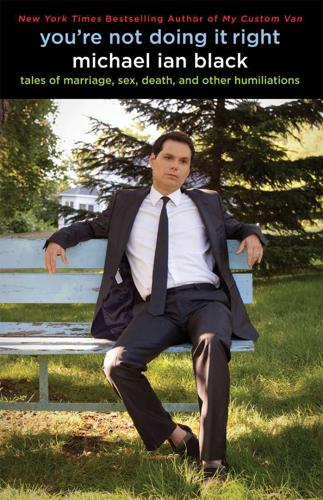
You're Not Doing It Right: Tales of Marriage, Sex, Death, and Other Humiliations
by
Michael Ian Black
Published 28 Feb 2012
The harder a drug is to pronounce, the more medicinally profound it seems. Lexapro just sounds like a brand of golf ball. Lexapro belongs to a class of drugs known as selective serotonin reuptake inhibitors (SSRIs), which operate under the same principle as Kevin Costner’s urine recycling machine in the movie Waterworld. For those not as well versed in Waterworld as I, the way it worked is, he peed into a machine, which took out all the toxins, enabling him to drink his own pee. That’s what SSRIs do, only with moods. SSRIs are the most prescribed class of antidepressant in the country, generating tens of billions of dollars in annual global sales.
…
A huge study came out in the Journal of the American Medical Association a while ago that basically said researchers could not determine if SSRIs actually do anything to relieve mild depression or not. There is concern, however, that they may increase suicidal thoughts and behavior among young people, which is a curious side effect for an antidepressant. There are a host of other documented side effects including impotence, increased levels of aggression, nausea, urinary retention, weight loss/gain, renal impairment, tinnitus, photosensitivity, and something called “genital anesthesia.” (Another way to get genital anesthesia is to rub cocaine all over your dick. Or so I’ve heard.) Anyway, doctors know SSRIs do all of those things, but they have no idea if they actually treat some of the problems for which they are prescribed.
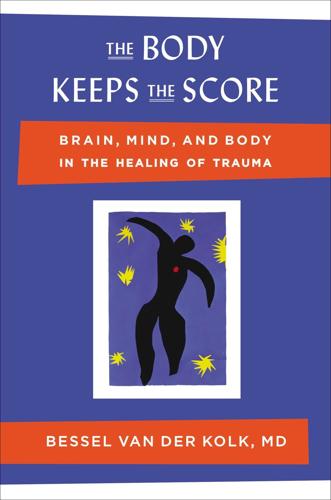
The Body Keeps the Score: Brain, Mind, and Body in the Healing of Trauma
by
Bessel van Der Kolk M. D.
Published 7 Sep 2015
Nonetheless, medications such as Prozac and related drugs like Zoloft, Celexa, Cymbalta, and Paxil, have made a substantial contribution to the treatment of trauma-related disorders. In our Prozac study we used the Rorschach test to measure how traumatized people perceive their surroundings. These data gave us an important clue to how this class of drugs (formally known as selective serotonin reuptake inhibitors, or SSRIs) might work. Before taking Prozac these patients’ emotions controlled their reactions. I think of a Dutch patient, for example (not in the Prozac study) who came to see me for treatment for a childhood rape and who was convinced that I would rape her as soon as she heard my Dutch accent.
…
R., 189 road rage, 83 role-playing, in psychomotor therapy, 298–300 Rorschach test, 15–17, 35 Roy, Alec, 154 Rozelle, Deborah, 214 Rumi, 277 Rwanda genocide, 244 safety: a fundamental to mental health, 351, 352 as lacking in childhood trauma survivors, 141, 213, 296, 301, 351 in trauma recovery, 204, 212, 270, 275, 300, 301, 349, 353 trauma survivors’ distorted perception of, 79–80, 85, 96–97, 164, 270 Salpêtrière, La, 177–78, 178, 194 Saul, Noam, 51–53, 52, 58, 261 Saxe, Glenn, 119 Scentific American, 149 Schacter, Dan, 93 Schilder, Paul, 100 schizophrenia, 15, 22–23, 27, 29 genetics and, 151–52 schools, see education system Schwartz, Richard, 281, 282, 283, 289, 290, 291, 418n Science, 94–95 selective serotonin reuptake inhibitors (SSRIs), 35, 36 see also Prozac (fluoxetine) Self: disorganized attachment and, 120 in IFS therapy, 224, 283–85, 288, 289, 305 in infants, 113 multiple aspects of, 280–95; see also internal family systems (IFS) therapy reestablishing ownership of, 203–4, 318 in trauma survivors, 166, 233, 247 self-awareness: autobiographical self in, 236 sensory, 87–102, 206, 206, 208–9, 236, 237–38, 247, 273, 354, 376n, 382n, 408n, 418n self-blame, in childhood sexual abuse survivors, 131, 132 self-compassion, 292 self-confidence, 205, 350 self-deceit, as source of suffering, 11, 26–27 self-discovery, language and, 234–35 self-harming, 20, 25, 87, 138, 141, 158, 162, 172, 264, 266, 288–89, 316, 317 self-hatred, 134, 143, 158, 163, 279 self-leadership, 203, 280–95 self-nurture, 113 self-recognition, absence of, 105 self-regulation, 113, 158, 161, 207, 224, 300, 347–48, 354, 401 neurofeedback and, 313 yoga and, 271–72, 274, 275 Seligman, Martin, 29–30 Semrad, Elvin, 11, 26, 237 sensation seeking, 266, 272 sensorimotor therapy, 96, 214–15, 217–18 sensory self-awareness, 87–102, 206, 206, 208–9, 236, 237–38, 247, 273, 347, 354, 376n, 382n, 408n, 418n September 11, 2001, terrorist attacks, 51–53, 52 children as witnesses to, 119 therapies for trauma from, 230–31 Seroquel, 37, 101, 215, 226, 227 serotonin, 33, 153, 154, 262 serotonin reuptake inhibitors (SSRIs), 215, 225 Servan-Schreiber, David, 304 Seven Pillars of Wisdom (Lawrence), 232 sexual promiscuity, 120, 285, 286 Shadick, Nancy, 291 Shakespeare, William, 43, 230, 343–46, 355 Shakespeare & Company, 335, 343–46 Shakespeare in the Courts, 335, 336, 342–44 Shalev, Arieh, 30 shame, 13–14, 102, 132, 138, 174, 211, 300 Shanley, Paul, 171–74, 183, 191 Shapiro, Francine, 251 Shatan, Chaim, 19 shavasana, 271 shell-shock, 11, 184–85 Shell Shock in France (Myers), 187 singing and chanting, in trauma recovery, 86, 214 “Singing Revolution,” 334 Sketches of War, 331 Sky, Licia, 216–17 sleep disorders, 46, 95 EMDR and, 259–61 in PTSD, 409n REM sleep and, 260–61, 409n see also nightmares SMART (sensory motor arousal regulation treatment), 215 smoking, surgeon general’s report on, 148 Social Brain, The (Gazzaniga), 280–81 social engagement: as basic human trait, 110, 166 PTSD and, 102 as response to threat, 80–81, 82, 88 in rhesus monkeys, 153–54 in trauma recovery, 204 trauma survivors and, 3, 62, 78–80, 84, 86, 161, 349 social support, for childhood trauma survivors, 167–68, 350 socioeconomic stress, disorganized attachment and, 117–18 Solomon, Richard, 32 Solomon, Roger, 260 somatic experiencing, 217–18 Somme, Battle of the (1916), 185 soothing, arousal and, 113 Sophocles, 332 South Africa, 213–14, 333, 349 Southborough Report, shell-shock diagnosis rejected by, 185 Southwick, Steve, 30 Sowell, Nancy, 291 speech centers (brain), 42, 43 Sperry, Roger, 51 Spinazzola, Joseph, 156, 339, 351 Spitzer, Robert, 142 Sroufe, Alan, 160–61, 166 Steel, Kathy, 281 Sterman, Barry, 315 Stern, Jessica, 7 Stickgold, Robert, 260, 261 stimuli: adjustment to, 32 hypersensitivity to, see threat, hypersensitivity to Story of My Life, The (Keller), 234 Strange Situation, 115 stress: gene expression and, 152 immune function and, 240 see also trauma stress hormones, 30, 42, 46, 60, 61, 66–67, 158, 162, 217, 233 structural dissociation model, 281 structures, in psychomotor therapy, 298–308 subcortical brain structures, 95 submissiveness, 97, 218 subpersonalities, 280–95 substance abuse, 70, 120, 146, 151, 225, 266 neurofeedback and, 327–28 withdrawal and, 32, 327 suicidal behavior and thoughts, 24, 28, 88, 120, 138, 141, 146, 147, 150, 151, 154, 256, 287, 316, 332 suicide by cop, 182 Summit, Roland, 131, 136 Suomi, Stephen, 153–54, 160 superior temporal cortex, 386n sympathetic nervous system (SNS), 77, 82, 82, 209, 266–67 Szyf, Moshe, 152 tai chi, 207–8 talk therapy (talking cure), 22, 27, 36, 72, 181–82, 230–37, 253 experience vs. telling in, 235–36 TAQ, see Traumatic Antecedents Questionaire (TAQ) Tavistock Clinic, 109 Teicher, Martin, 140, 149, 416n temporal lobe abnormalities, 416n temporal parietal junction, 100 tension, in trauma survivors, 100–101, 265–66 terrorism: PTSD from, 348 see also September 11, 2001, terrorist attacks testosterone, 163 thalamocortical networks, 417n thalamus, 60, 70–71, 176, 324 theater, in trauma recovery, 214, 330–32, 334–46, 355 conflict and, 335 emotions and, 335, 344–45 feeling safe in, 336–37 Theater of War, 332 Thematic Apperception Test (TAT), 106–7 therapists, in trauma recovery, 212–13, 244 theta waves, 321, 326, 417n Thorazine (chlorpromazine), 22–23 thoughts, physical sensations and, 209 threat: confusion of safety and, 85, 97, 119, 164 hypersensitivity to, 2, 11, 17, 33, 45–47, 68, 84, 95, 102, 143, 158, 161, 163, 196–97, 225, 265, 310, 327, 328, 408n social engagement as response to, 80–81, 82, 88 whole-body response to, 53–55, 53, 60–62, 61 see also fight/flight response; freeze response (immobilization) time, sense of, 273 Tourette, Gilles de la, 177 trance (hypnagogic) states, 117, 187, 238, 302, 305, 326 transcranial magnetic stimulation (TMS), 417n trauma: articulation of, 232–34 brain changes from, 2–3, 21, 59, 347 growing awareness of, 347 as most urgent public health issue, 148, 149–50, 356 narratives of, 7, 43, 46, 70, 130, 135, 175, 176, 194, 219, 220, 231, 250, 252–53, 261–62; see also traumatic memory physiological changes from, 2–3, 21, 53, 53, 72 prevalence of, 1 reactivation of, 2 risk of, socioeconomic status and, 348 trauma, healing from, 203–29 animal therapy in, 80, 150–51, 213 ARC model in, 401n art and, 242–43 body therapies for, 3, 26, 72, 86, 89, 207–8, 215–17, 228–29, 245; see also specific therapies calming and relaxation techniques in, 131, 203–4; see also breathing; mindfulness; yoga CBT in, 182, 194, 220–21 community in, 213–14, 244, 331–34, 355 desensitization therapies in, 46–47, 73, 220, 222–23 EMDR therapy in, see eye movement desensitization and reprocessing (EMDR) emotional self-regulation in, 203–4, 206–8, 212, 353, 401n feeling safe in, 204, 212, 270, 275, 300, 301, 349, 353 focus in, 203, 347–48, 355 giving up self-deceit in, 204 IFS therapy in, see internal family systems (IFS) therapy integrating traumatic memories in, 181, 219–20, 222, 228, 237, 279 language and, 230–47, 275–76 limbic system therapy in, 205–6 living in present as goal of, 204 mindfulness in, 207, 208–10, 224, 225, 269, 270 music in, 242–43, 349, 355 need to revisit trauma in, 204–5, 211 neurofeedback in, see neurofeedback professional therapists for, 212–13, 244 psychomotor therapy in, 296–308 reestablishing ownership of one’s self as goal of, 204–5 relationships in, 204, 210–13 rhythmic movement and, 85, 207, 208, 214, 242–43, 333–34, 349 schools as resources for, 351–56 search for meaning in, 233–34 self-awareness in, 208, 235–38, 273, 347 self-leadership in, 203, 280–95 sensorimotor therapy in, 96, 214–15 singing and chanting in, 86, 214 talk therapy in, 230–37, 253 theater in, see theater, in trauma recovery writing and, 238–42 yoga in, 63, 86, 207, 225, 228–29, 231, 263–76 Trauma and Recovery (Herman), 189 Trauma Center, 3–4, 72, 85, 86, 121, 122, 163–64, 166, 214–15, 228, 266, 269, 271, 340, 351 neurofeedback laboratory at, 318–20, 324 Trauma Drama program of, 335, 336–37, 339, 355 Urban Improv study of, 338–39 Trauma Clinic, 35, 251, 253 trauma survivors: alexithymia in, 98–99, 247, 272–73, 291, 319 blaming in, 45 brain scans of, 39–47, 42, 66, 68–70, 68, 71–72, 72, 82, 99–100, 319 brain-wave patterns in, 311–12, 311, 324 continued stress mobilization in, 53–55, 53 denial in, 46, 291 depersonalization in, 71–73, 71, 99–100, 132–33, 286, 291, 386n, 401n derealization in, 401n dissociation in, 66–68, 95, 172, 179, 180–81, 194, 211, 247, 281, 294, 316, 317–18 distorted perception of safety in, 79–80, 85, 96–97, 119, 164, 270 fear of emotions in, 335 fear of experimentation in, 305 flashbacks in, 40, 42, 45, 70, 176, 193–94, 219 freeze response (immobilization) in, 54, 54, 80, 82–83, 82, 85, 95, 217, 218 handwriting of, 241–42 helplessness of, 217, 341 hypersensitivity to threat in, 2, 61–62, 84 immune systems of, 126–27, 291 inner void in, 296–308 intimacy as difficult for, 99 irritability and rage in, 46, 95, 99 language failure in, 43–44, 243–45, 352–53 limbic system in, 59, 95, 265 living in present as difficult for, 67, 70, 73, 312 loss of imagination in, 17, 96 loss of purpose in, 92, 233 medication and, 3 memory and attention problems in, 46 nightmares in, 44 numbing in, 67, 84, 119, 205, 247, 272, 304–5, 306 panic attacks in, 97 polarization of self-system in, 281 reciprocity and, 79–80 reenacting in, 31–33, 179, 180, 181, 182 self-harming in, 266, 288–89 self-protective strategies of, 278–79 sensation seeking in, 266, 272 sense of self in, 166, 233, 247 sense of time in, 273 sensory overload in, 70–71 sensory self-awareness in, 89, 96, 247, 418n shame in, 102, 138, 211, 300 sleep disorders in, 46, 95 social engagement and, 3, 62, 78–80, 84, 86, 161, 349 somatic symptoms in, 97–98 stress hormone levels in, 30 substance abuse by, 70, 120, 146, 151, 225, 266 tension and defensiveness in, 100–101, 265–66 trust as difficult for, 18, 134, 141, 150, 158, 163, 253 see also childhood trauma survivors; PTSD (posttraumatic stress disorder) Traumatic Antecedents Questionaire (TAQ), 138–40, 141 traumatic memory, 171–83, 246–47, 278 as disorganized, 193 hysteria as, see hysteria integration of, 181, 219–20, 222, 228, 237, 255–56, 261–62, 279, 308 narrative memory vs., 176, 179, 194, 219, 231–32, 236 normal memory vs., 175–76, 180, 181, 189, 192–94, 219, 372n “railway spine” as, 177 see also repressed memory Traumatic Neuroses of War, The (Kardiner), 11, 187 Trevarthen, Colwyn, 111 Trickett, Penelope, 161–63 triggered responses, 66–68 Tronick, Ed, 84, 112 trust, difficulty of, 18, 134, 141, 150, 158, 163, 253 Truth and Reconciliation Commission, 213–14, 333, 349 Tutu, Desmond, 333 Ubuntu, 349 United States Association for Body Psychotherapy, 297 Urban Improv, 334–35 Trauma Center study of, 337–39 vagus nerve, 76, 78, 80–82, 81, 207, 245 Valium, 225 valproate, 136, 225, 405n van der Hart, Onno, 281, 396n Van der Kolk Center, 213, 401n vasopressin, 223 ventral vagal complex (VVC), 81–82, 82, 83–84 development of, 84 Versailles, Treaty of (1919), 186 Veterans Administration (VA): Boston Clinic of, 7, 10, 11, 12, 187–88, 227, 331 PTSD and, 19, 222–23, 226–27, 244–45 Veterans Affairs Department, U.S, 156, 224, 255 Vietnam veterans, 7–8, 12, 15, 17–18, 33, 156, 182, 187–88, 190, 222–23, 227, 233–34 visual cortex, 42, 44 voice, responses to, 85–86 Walter Reed National Military Medical Center, 322 War Is a Force That Gives Us Meaning (Hedges), 31 Warner, Liz, 214, 418 Warren, Robert Penn, 22 Werner, Emily, 392n “What Is an Emotion?”
…
Just about every group of psychotropic agents has been used to treat some aspect of PTSD.52 The serotonin reuptake inhibitors (SSRIs) such as Prozac, Zoloft, Effexor, and Paxil have been most thoroughly studied, and they can make feelings less intense and life more manageable. Patients on SSRIs often feel calmer and more in control; feeling less overwhelmed often makes it easier to engage in therapy. Other patients feel blunted by SSRIs—they feel they’re “losing their edge.” I approach it as an empirical question: Let’s see what works, and only the patient can be the judge of that. On the other hand, if one SSRI does not work, it’s worth trying another, because they all have slightly different effects.
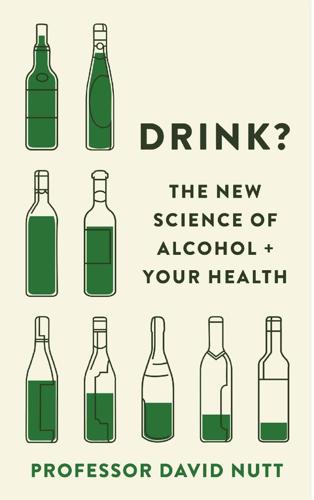
Drink?: The New Science of Alcohol and Your Health
by
David Nutt
Published 9 Jan 2020
In fact the relationship is so strong that there are addiction experts who believe that repeated alcohol use is for many people – even those who haven’t been diagnosed with OCD – more a form of compulsion than one of craving, and a scale to measure this has been developed – the Obsessive Compulsive Drinking Scale.11 As with the other psychiatric disorders that occur with alcoholism, treatment requires addressing both problems. For OCD, antidepressant medicines such as SSRIs (selective serotonin reuptake inhibitors) are the first-line treatment, along with CBT. It is possible that, as with the anxiety disorders, treating the OCD can help reduce the dependence on alcohol. BULIMIA Bulimia is an eating disorder that involves binge-eating followed by fasting, making yourself vomit or purging.
…
The woman told me that she’d wake up two or three times a night, feeling as if she was dying. The irony was, although the alcohol got her to sleep, the withdrawal was making her episodes of sleep paralysis more frequent. We treated her by helping her to stop drinking, along with a short course of a benzodiazepine sleeping medicine while the SSRI medicine we also prescribed got to work. SSRIs are usually described as antidepressants but they are very good for anxiety disorders too and I have found them useful in a range of different anxiety-related sleep disorders including sleep paralysis and night terrors. Night terrors are different from nightmares: terrors come during the very deepest stages of sleep, unlike nightmares, which come during dreaming sleep.
…
So he doesn’t get treated. Both therapists blame the alcohol. My reasoning is this: if we’d stopped him drinking, he would have got more anxious and wouldn’t have been able to socialise. What we did – and what we do with people like him now – is treat the anxiety with either a talking therapy (such as CBT) or an SSRI medication. Eventually, this enabled him to cut down his drinking to normal levels. So how can you tell if your drinking is due to social anxiety? One clue is if you drink before you leave the house to reduce your anxiety about going out. Another is if you’re always first to the bar. A friend who had had alcohol problems, when he was finally sorted and sober, said to me: ‘You never noticed that I was always in the bar before everyone else arrived.
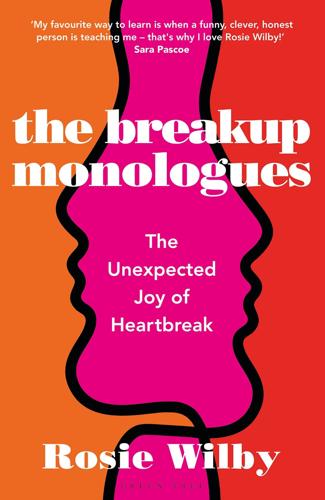
The Breakup Monologues: The Unexpected Joy of Heartbreak
by
Rosie Wilby
Published 26 May 2021
But there is evidence that some drugs that many of us already take might dampen our romantic and sexual bonds in a similarly dramatic fashion. SSRIs, or selective serotonin reuptake inhibitors, are a group of antidepressants which, alongside their main task of combating depression, have all kinds of interpersonal side effects that we haven’t yet measured properly. ‘We tend to label drugs in terms of their intended purpose,’ says Brian, ‘but the drugs don’t know that they’re an antidepressant. That’s one of the effects that they have for some people. One reasonably well-measured side effect of SSRIs is that they can dampen libido. And in a subset of people, SSRIs have the effect of making it harder for you to care about the feelings of others.
…
Yet if a person is in an abusive relationship they want to leave, perhaps this might be a desirable effect, one that they might want to seek out. Perhaps these undocumented side effects could be harnessed in order to help us escape bad relationships. Obsessive compulsive disorder is often treated with an SSRI. Perhaps obsessive unhealthy love isn’t so very different.2 The idea of an ‘anti-love drug’ reminds me a little of the memory erasure process depicted in one of my all-time favourite films, Eternal Sunshine of the Spotless Mind. I had always assumed it was pure science fiction. The plot centres on shy Joel and free spirit Clementine who meet on a train in Montauk without realising that they are former lovers who both visited a curious company called Lacuna Inc to wipe their memories of the relationship.
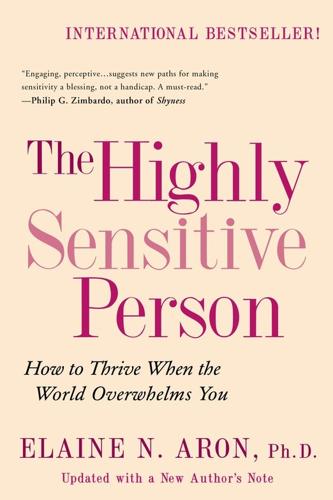
The Highly Sensitive Person: How to Thrive When the World Overwhelms You
by
Elaine N. Aron
Published 1 Dec 2013
Part of the big fuss about Prozac is that it works on just one neurotransmitter, serotonin. Prozac and its relatives—Paxil, Zoloft, etc.—are called “selective serotonin-reuptake inhibitors,” or SSRIs. No one knows why this selectivity is such an advantage in treating certain difficulties. But scientists are now trying to get to know serotonin better. Serotonin and Personality What made the book Listening to Prozac a bestseller a number of years ago was that Peter Kramer, its author, expressed the concerns of all those psychiatrists who had discovered that a few people taking SSRIs were “cured” of what had seemed to be deep-seated personality characteristics.
…
Consider what might be the serotonin levels of “shy, sensitive” Chinese children who (according to the study described in chapter 1) are the admired leaders of their classes. Imagine the serotonin levels of their counterparts in Canada, who are at the bottom of the classroom hierarchy Maybe we do not need SSRIs. Maybe we need respect! Should You Try to Change Your Trait With an SSRI? I wish I had data on the effects of these medications on nondepressed HSPs. But then, their effects on the average HSP still would not say much about the effect on you. It is well known that an antidepressant that ends depression in one person may do nothing for another.
…
One possibility is that the behavioral activation system discussed in chapter 2 is being stirred up to counteract the pause-to-check system. So these medications might work better if your “problem” is a quiet activation system. Those in whom both systems are strong might be the ones becoming too agitated. Patients are often not told this, but most SSRIs tend to affect sexual performance in men, orgasms in women, and sexual desire in both sexes. They can also cause significant weight gain. Finally, SSRIs are very dangerous when mixed with certain other drugs, especially other antidepressants, because having too much serotonin is harmful and can even cause death. There’s no free lunch, is there? All of this is not to scare you or stop you from taking antidepressants, especially in a crisis.
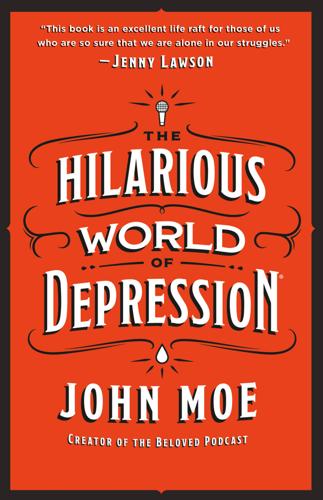
The Hilarious World of Depression
by
John Moe
Published 4 May 2020
But if a podcast is just a pill, no one will want to download/swallow it. What you gotta do is drop that pill in some strawberry ice cream, mush it up if you have to,” I said. “The ice cream is Patton. Or Maria Bamford or whoever else we get. For a show like this, we could get a doctor from the Mayo Clinic to talk about how a selective serotonin reuptake inhibitor [SSRI, a common form of antidepressant] works or we could get Maria. But the thing is, more people will download Maria because they know it will be fun. We want to rack up those downloads in order to spread the message and because we can then make money on more sponsorships to offset the cost of production.
…
I would take a pill one morning, then forget the next day, take one the following day but not until afternoon, skip three days, hunker down and take one for three straight mornings, feel good about myself as a result, and then skip it again. This isn’t how you’re supposed to take Zoloft, or any selective serotonin reuptake inhibitor, or any medication at all, really. In the case of Zoloft, inconsistency led to irritability, crazy dreams, nausea, and fatigue, a suite of conditions not much different and certainly no better than what was going down in my head before. When you are overwhelmed by an urge to yell at everybody nearby and then can’t get off the couch after work, it becomes difficult to believe that this depression treatment protocol is going well.
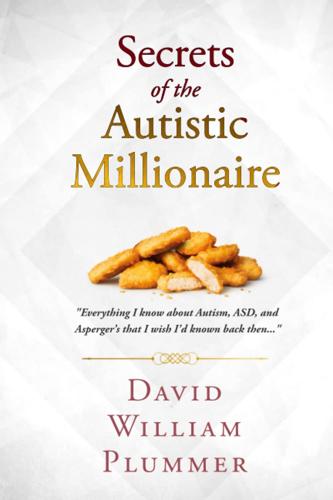
Secrets of the Autistic Millionaire: Everything I Know Now About Autism and Asperger's That I Wish I'd Known Then
by
David William Plummer
Published 14 Sep 2021
This allows me to continue the behavior without disturbing those around me. Replacing stimming behaviors might also be an option; if a child with autism flaps their hands, perhaps squeezing a rubber stress ball will suffice. In some people the drugs which increase available serotonin in the brain, selective serotonin reuptake inhibitors, or “SSRI”s, have shown themselves to be helpful in reducing stimming. That might lead us to the conclusion that stimming by itself also increases the levels of brain serotonin. In conclusion, stimming is a self-calming technique that people with autism use to reduce anxiety and provided their stimming does not bring excess unwanted social attention or cause a distraction or disruption, seems otherwise harmless.
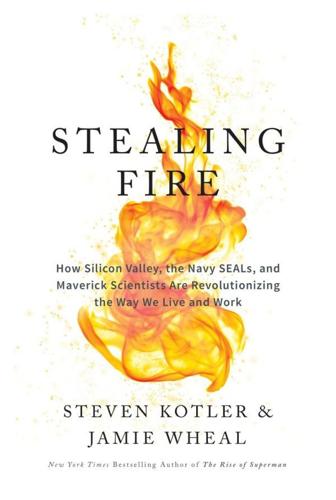
Stealing Fire: How Silicon Valley, the Navy SEALs, and Maverick Scientists Are Revolutionizing the Way We Live and Work
by
Steven Kotler
and
Jamie Wheal
Published 21 Feb 2017
In a 2014 paper published in the Journal of Occupational Therapy, Rogers reported that after as little as five weeks in the waves, soldiers had a “clinically meaningful improvement in PTSD symptom severity and in depressive symptoms.” And surfing isn’t the only non-pharmacological intervention to show promise. A recent study done by the military found that 84 percent of PTSD subjects who meditated for a month could reduce or even stop taking selective serotonin reuptake inhibitors (SSRIs). In contrast, the control group—who didn’t meditate and stayed on antidepressants—experienced a 20 percent worsening in PTSD symptoms during that same period. Taken together, all this work—from the NDE studies to the cancer and trauma research to the flow and meditation programs—demonstrates that even brief moments spent outside ourselves produce positive impact, regardless of the mechanisms used to get there.
…
We could get on a treadmill25 (studies show exercise is effective for depression in all but severe cases), or get some natural sunshine26 (70 percent of Americans are deficient in vitamin D, which has a direct impact on mood), or practice meditation for fifteen minutes27 (a paper in the Journal of the American Medical Association found it as effective as SSRI’s and without the side effects). None of these approaches require thinking about our thinking, but each of them can significantly shift our mood. Choices like these are available not just in our personal lives, but in our professional lives, too. Instead of nervously waiting for a job interview and obsessing about all the things that could go wrong, we can take a page out of Amy Cuddy’s book and stand up, breathe deeply, and power-pose our way to lower cortisol, higher testosterone, and more confidence.
…
We also suspect that as measurement devices get more sophisticated at capturing real-time diachronic activity (as opposed to static snapshots) we’ll get a much fuller-fledged picture that integrates neuroanatomy, neuroelectricity, and neurochemical interactions in a coherent model of selflessness. Until that time, we have presented some of the findings that seem most credible and relevant to our study of ecstasis, while leaving lots of room for updates. (For researchers interested in advancing this research please contact us at info@flowgenomeproject.com). SSRIs and Medicating Psychology: In general, we support the appropriate and selective use of psychopharmaceuticals under the supervision of medical practitioners and we acknowledge they can be life-changing under the right conditions. We are also critical of overprescription, undersupervision, and pervasive off-label uses where apparent market forces are trumping more effective (and often, nondrug) interventions.

No Such Thing as a Free Gift: The Gates Foundation and the Price of Philanthropy
by
Linsey McGoey
Published 14 Apr 2015
He emphasized a widely known problem: the inability of most clinical trials to reveal rare side effects that often become visible only after a medical trial is completed and a drug is distributed clinically to hundreds of thousands or millions of users.25 Healy pointed to the example of selective serotonin reuptake inhibitors (SSRI) antidepressants, a class of drug that includes Eli Lilly’s Prozac, one of the bestselling pharmaceutical drugs ever produced. In 2001, revenues from Prozac amounted to $2.5 billion, a full quarter of Eli Lilly’s annual revenues. Touching on a controversy that had been raging since Martin Teicher, a Harvard psychiatrist, published a 1990 study in the American Journal of Psychiatry which outlined cases where patients experienced suicidal thoughts while on Prozac, Healy suggested that ‘Prozac and other SSRIs can lead to suicide’. Eli Lilly is a major philanthropic donor to the University of Toronto, providing 52 per cent of the budget for the Mood and Anxiety Disorder Clinic that Healy was asked to head up.
…
A few weeks after his talk, Healy’s job offer was retracted. After his dismissal, a number of news articles reported that Eli Lilly had suppressed evidence from clinical trials where patients suffered adverse reactions to Prozac. At the behest of the US Food and Drug Administration, GlaxoSmithKline, the manufacturer of Paxil, another bestselling SSRI, sent a letter to US physicians reporting that clinical trials testing Paxil had indicated a statistically significant, six-fold suicidal risk over placebo. This evidence vindicated Healy’s concerns.26 He was later awarded an undisclosed settlement by the University of Toronto, and was offered a visiting professorship at the university.

Digging Out: Helping Your Loved One Manage Clutter, Hoarding, and Compulsive Acquiring
by
Michael A. Tompkins
and
Tamara L. Hartl
Published 31 Mar 2007
In addition, if your loved one is interested in CBT, we recommend Buried in Treasures: Help for Compulsive Acquiring, Saving, and Hoarding (Tolin, Frost, and Steketee 2007b), a landmark text on the psychological treatment of compulsive hoarding, or Overcoming Compulsive Hoarding: Why You Save and How You Can Stop (Neziroglu, Bubrick, and Yaryura-Tobias 2004). Medications Many people who hoard take medications used to treat obsessive-compulsive disorder (OCD). These include serotonin reuptake inhibitors (SRIs) such as clomipramine, and selective serotonin reuptake inhibitors (SSRIs) such as fluvoxamine, fluoxetine, sertraline, and paroxetine. However, it’s not clear how useful these medications really are for treating hoarding, but if your loved one is open to a trial of medications, we urge you to arrange an evaluation with someone with expertise in prescribing these medicines.
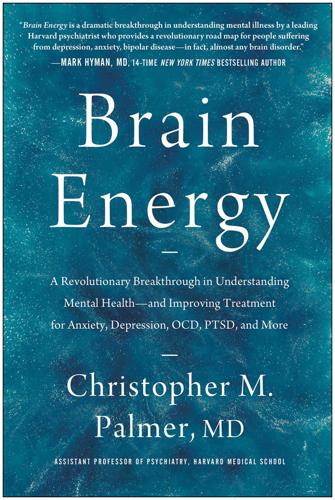
Brain Energy: A Revolutionary Breakthrough in Understanding Mental Health--And Improving Treatment for Anxiety, Depression, OCD, PTSD, and More
by
Christopher M. Palmer Md
Published 15 Nov 2022
For depression, the most popular belief is that levels of the neurotransmitter serotonin are too low; thus, medications that increase serotonin levels will treat depression. Many of the most commonly prescribed medications for depression belong to a class of antidepressants called selective serotonin reuptake inhibitors, or SSRIs (Prozac, Zoloft, and Paxil are in this category). They often do help resolve the symptoms of depression, which supports the theory that maybe a chemical imbalance is the cause. Other classes of medications that affect different neurotransmitter systems can also alleviate depression, so maybe it’s not just serotonin—maybe it’s various neurotransmitters in different people.
…
This theory also helps us understand why medications take time to work. For example, SSRIs are likely working by increasing mitochondrial biogenesis and improving the function of mitochondria. This process takes time; it doesn’t occur overnight, even though SSRIs increase serotonin in a matter of hours. It’s not the serotonin per se that results in improvement, but the impact that serotonin has on mitochondria and metabolism. Restoring metabolic health takes time—probably about two to six weeks—which is the time it usually takes for SSRIs to start working as well. We can also understand why one medication can be used for a wide variety of disorders.
…
Nonetheless, many psychiatrists and researchers believe that at its root, depression always boils down to a chemical imbalance. However, there are many questions raised by this theory: •What causes the chemical imbalance in the first place? •If people are born with this chemical imbalance, why aren’t they depressed all the time, starting from birth? •Why do medications like SSRIs take weeks or months to work? We know they change neurotransmitter levels within hours, so why don’t they work immediately? •If it’s a fixed chemical imbalance, why do the symptoms wax and wane, even over short periods of time? Put another way, why do people have good days and bad days, even when taking medications consistently?
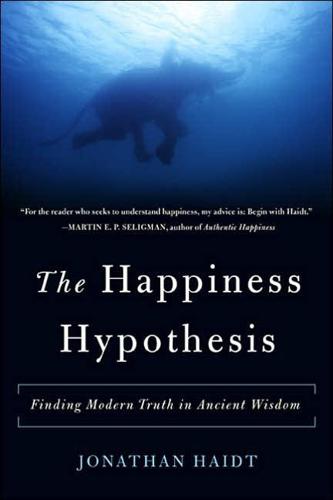
The Happiness Hypothesis: Finding Modern Truth in Ancient Wisdom
by
Jonathan Haidt
Published 26 Dec 2005
It triggers anxiety in the head brain when it detects infections in the gut, leading you to act in more cautious ways that are appropriate when you are sick.10 And it reacts in unexpected ways to anything that affects its main neurotransmitters, such as acetylcholine and serotonin. Hence, many of the initial side effects of Prozac and other selective serotonin reuptake inhibitors involve nausea and changes in bowel function. Trying to improve the workings of the head brain can directly interfere with those of the gut brain. The independence of the gut brain, c o m b i n e d with the autonomic nature of changes to the genitals, probably contributed to ancient Indian theories in which the abdomen contains the three lower chakras—energy centers corresponding to the colon/anus, sexual organs, and gut.
…
I decided that as a professor I needed my memory more than I needed p e a c e of mind, so I stopped taking Paxil. Five weeks later, my memory c a m e back, along with my worries. What remained was a firsthand experience of wearing rose-colored glasses, of seeing the world with new eyes. Prozac was the first member of a class of drugs known as selective serotonin reuptake inhibitors, or S S R I s . In what follows, I use Prozac to stand for the whole group, the psychological effects of which are nearly identical, and which includes Paxil, Zoloft, Celexa, Lexapro, and others. Many things are not known about Prozac and its cousins—above all, how they work. T h e n a m e of the drug class tells part of the story: Prozac gets into the synapses (the gaps between neurons), but it is selective in affecting only synapses that use serotonin as their neurotransmitter.
…
S i n g e r ) , 1 6 5 Sartre, Jean-Paid, 1 34 Progress principle, 82—84 Science, 171, 218, 241 Promethean script, 10—11, 15 and divinity, 2 0 5 - 2 0 6 , 2 1 0 Pronin, Emily, 71 Schkade, David, 91 Proust, Marcel, 39, 1 52 Schooler, Carmi, 221 Prozac. See Selective serotonin Schrock, Ed, 5 9 - 6 0 reuptake inhibitors ( S S R l s ) Schwartz, Barry, 102 Psychoanalysis, 3, 20, 108, 1 12, 2 2 0 Seinfeld, Jerry, 195 Psychological Care of Infant and Child Selective serotonin reuptake (Watson), 108 inhibitors (SSRIs), 6, 3 9 - 4 3 , Purpose, 2 1 7 - 2 1 9 , 225, 227, 2 2 9 - 2 3 0 , 90, 148 2 3 4 - 2 3 5 , 2 3 8 - 2 3 9 Self, xi, 201, 204, 2 0 6 - 2 0 8 Purpose Driven Life, The ( W a r r e n ) , left brain/right brain division, 6—9 2 0 9 - 2 1 0 , 218 metaphors of, 1—5 mind/body division, 5—6 Reason and reasoning, 3—4, 1 1 — 13, reason/emotion division, 9—13 6 4 - 6 6 , 9 8 , 161-162, 165 self-control and automatic response, Reciprocity, xi, 4 5 - 5 8 , 172 1 3 - 2 2 and hypocrisy, 6 0 - 6 2 , 6 6 - 6 9 , 79, Self-control, 17-19 130-132 Seligman, Martin, 91, 9 6 - 9 7 , Relationships.
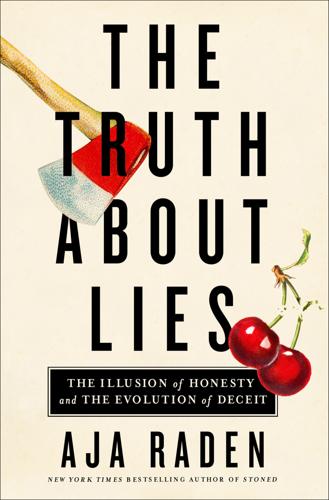
The Truth About Lies: The Illusion of Honesty and the Evolution of Deceit
by
Aja Raden
Published 10 May 2021
But then, some of the crazy stuff works too. But most of it, in double-blind trials, only works on a small percentage of people. It’s been determined that only about 10 percent of patients taking SSRIs (selective serotonin reuptake inhibitors, like Prozac) actually respond to the chemical components of the drug. Or it works pretty well, about as well as the placebo. Which is why more than one in ten patients taking SSRIs will tell you that they really do feel better. The culprit, once again, is priming. In 1997 the FDA changed its advertising guidelines after a century and decided to let pharmaceutical companies market directly to us, the consumers, combining the two worst ideas they ever had.

Behave: The Biology of Humans at Our Best and Worst
by
Robert M. Sapolsky
Published 1 May 2017
(d) Inhibit degradative enzymes so that more of the neurotransmitter sticks around in the synapse. (e) Inhibit the reuptake of the neurotransmitter, prolonging its effects in the synapse. The modern antidepressant of choice, Prozac, does exactly that in serotonin synapses. Thus it is often referred to as an “SSRI”—a selective serotonin reuptake inhibitor. Meanwhile, a pharmacopeia of drugs are available to decrease signaling across synapses, and you can see what their underlying mechanisms are going to include—blocking the synthesis of a neurotransmitter, blocking its release, blocking its access to its receptor, and so on.
…
Glossary of Abbreviations ACC anterior cingulate cortex ACTH adrenocorticotropic hormone ADHD attention-deficit/hyperactivity disorder AIS androgen insensitivity syndrome APA American Psychological Association ASD autism spectrum disorders BDNF brain-derived neurotrophic factor BLA basolateral amygdala BMI body mass index BNST bed nucleus of the stria terminalis CAH congenital adrenal hyperplasia CBT cognitive behavioral therapy COMT catechol-O-methyltransferase CRH corticotropin-releasing hormone DAT dopamine transporter DHEA dehydroepiandrosterone dlPFC dorsolateral PFC DZ dizygotic EEA equal environment assumption EEG electroencephalographic; EEGs electroencephalograms ERPS event-related potentials fMRI functional magnetic resonance imaging FTD frontotemporal dementia GABA gamma-aminobutyric acid GnRH gonadotropin-releasing hormone GSR galvanic skin resistance GWAS genomewide association studies HG hunter-gatherer HH high-warmth/high-competence HL high warmth/low competence IAT Implicit Association Test LH low warmth/high competence LH luteinizing hormone LL low warmth/low competence LTD long-term depression LTP long-term potentiation MAO-A monoamine oxidase-A MHC major histocompatibility complex MZ monozygotic NCAM neural cell adhesion molecule PAG periaqueductal gray PD Prisoner’s Dilemma PFC prefrontal cortex PMC premotor cortex PMDD premenstrual dysphoric disorder PMS premenstrual syndrome PNS parasympathetic nervous system PTSD post-traumatic stress disorder PVN paraventricular nucleus RNA ribonucleic acid RWA right-wing authoritarianism SDO social-dominance orientation SES socioeconomic status SHRP stress hyporesponsive period SNPs single-nucleotide polymorphisms SNS sympathetic nervous system SPE Stanford Prison Experiment SSRI selective serotonin reuptake inhibitor STG superior temporal gyrus TF transcription factor TH tryptophan hydroxylase ToM Theory of Mind TPJ temporoparietal juncture TRC truth and reconciliation commission vlPFC ventrolateral prefrontal cortex vmPFC ventromedial PFC 54 Abbreviations in the Notes In order to save forests’ worth of paper, references cite only the first one or two authors.
…
Simmons, 170–71, 589, 590, 592 Rosenberg, Julius and Ethel, 396 Rousseau, Jean-Jacques, 305, 309, 325, 616 Rozin, Paul, 399, 562 Rudolph, Wilma, 596 runaway trolley problem (killing one person to save five), 55, 56, 58–59, 117, 482, 488–91, 505–7 self-driving cars and, 612n Russell, Jeffrey, 606 Rwanda, 570 genocide in, 571–72, 573, 619 Hutu and Tutsi tribes in, 372, 469, 570–73 Sabah, Nayirah al-, and supposed atrocities during the Gulf War, 632–33 sacred values, in conflict resolution, 575–79, 643–44 Sahlins, Marshall, 318 Saleh, Ali Abdullah, 653 Samoans, 122 Sandusky, Jerry, 597 Sandy Hook Elementary School massacre, 561 San Francisco earthquake (1989), 301 Santayana, George, 669–70 Saud, King, 367 Saypol, Irving, 396 Scalia, Antonin, 590 scapegoating, 531 schadenfreude, 15, 413 Schiller, Friedrich, 443 schizophrenia, 234, 235, 239, 582, 586, 593, 607 Schultz, Wolfram, 68, 71 Science, 133, 246–47, 251, 266, 278, 300n, 313, 322, 495, 524, 546, 549, 574–75, 636 Scientific American, 298 selective serotonin reuptake inhibitors, 694 self-confidence, 102–3, 237 Semai, 313, 502n Semang, 317, 318 sensorimotor contagion, 86, 395, 522 sensory stimuli, 6–7, 15, 81–98 amygdala and, 40–41 in animals, 83–84 auditory, 6, 83–84, 89 cultural differences in processing, 276 haptic (touch), 565–66 hormones and, see hormones interoceptive information, 90–92, 528, 529, 566 real vs. metaphorical sensation, 565–68 and sensitivity of sensory organs, 96–97 subliminal and unconscious, 84–90, 93–96 language, 92–93 temperature, 566 visual, 6, 84 Sepoy Mutiny, 391n September 11 attacks, 619 Seromba, Athanase, 572 serotonin, 134, 692 aggression and, 76–77, 250–55 genes and, 227, 246, 250–55, 264 psilocybin and, 693 selective serotonin reuptake inhibitors, 694 SES, see socioeconomic status sex, 11, 39, 43, 65–66, 95 oxytocin and, 110 sex differences, 266 cultural, 272 dimorphic, 366 and hormones in prenatal environment, 211–19 math skills and, 266–67, 267, 406 obedience and, 474 in monkey behaviors, 213–14, 214 transgender individuals and, 215n sexual selection, 330–31 Seyfarth, Robert, 337–38 shame, 502–3 Shariff, Azim, 623 Shepher, Joseph, 371 Sherman, Marshall, 554 Shermer, Michael, 495 Shweder, Richard, 271, 494 Sigmund, Karl, 350 Silkwood, Karen, 652 Simpson, O.
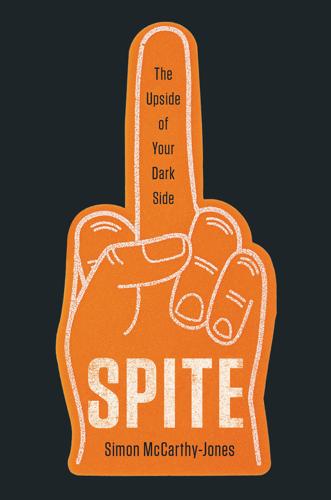
Spite: The Upside of Your Dark Side
by
Simon McCarthy-Jones
Published 12 Apr 2021
Earlier, I pointed out how increases in serotonin are associated with a reduced willingness to pay to punish unfair acts. Given the ubiquity of medicinal drugs in our society that alter serotonin levels, it is worth reflecting on what the political impact of those drugs could be. Let’s start with the obvious one: the selective serotonin reuptake inhibitor (SSRI) class of antidepressants—drugs such as Prozac, Zoloft, and Celexa. By definition, these medications increase people’s serotonin levels. They offer a substantial benefit for people with severe depression. Yet the benefits of antidepressants over placebo are minimal or nonexistent, on average, for patients with mild or moderate symptoms.60 Some people hence appear to be using them with no clinical benefit while still potentially suffering their side effects,61 which can include sexual difficulties, emotional numbness, and suicidality.
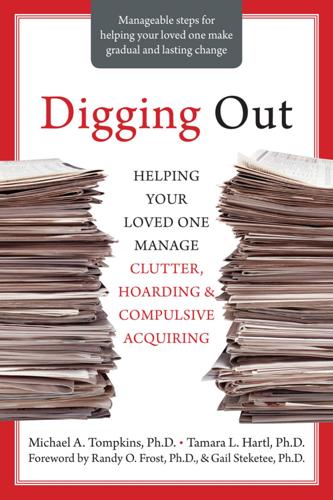
Digging Out
by
Randy Frost
Published 13 Feb 2013
In addition, if your loved one is interested in CBT, we recommend Buried in Treasures: Help for Compulsive Acquiring, Saving, and Hoarding (Tolin, Frost, and Steketee 2007b), a landmark text on the psychological treatment of compulsive hoarding, or Overcoming Compulsive Hoarding: Why You Save and How You Can Stop (Neziroglu, Bubrick, and Yaryura-Tobias 2004). Medications Many people who hoard take medications used to treat obsessivecompulsive disorder (OCD). These include serotonin reuptake inhibitors (SRIs) such as clomipramine, and selective serotonin reuptake inhibitors (SSRIs) such as fluvoxamine, fluoxetine, sertraline, and paroxetine. However, it’s not clear how useful these medications really are for treating hoarding, but if your loved one is open to a trial of medications, we urge you to arrange an evaluation with someone with expertise in prescribing these medicines.
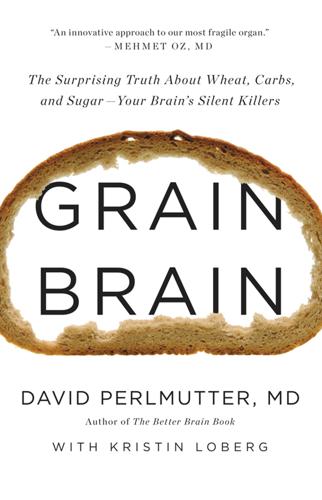
Grain Brain: The Surprising Truth About Wheat, Carbs, and Sugar--Your Brain's Silent Killers
by
David Perlmutter
and
Kristin Loberg
Published 17 Sep 2013
Women on antidepressants were 45 percent more likely to experience strokes and had a 32 percent higher risk of death from all causes.20 The findings, published in the Archives of Internal Medicine, came out of the Women’s Health Initiative, a major public health investigation focusing on women in the United States. And it didn’t matter whether people were using newer forms of antidepressants, known as selective serotonin reuptake inhibitors (SSRIs), or older forms known as tricyclic antidepressants, such as Elavil. SSRIs are typically used as antidepressants, but they can be prescribed to treat anxiety disorders and some personality disorders. They work by preventing the brain from reabsorbing the neurotransmitter serotonin. By changing the balance of serotonin in the brain, neurons send and receive chemical messages better, which in turn boosts mood.

SEDATED: How Modern Capitalism Created Our Mental Health Crisis
by
James. Davies
Published 15 Nov 2021
C. (1998), ‘Discontinuing antidepressant treatment in major depression’, Harvard Review of Psychiatry 5:293–305. 33 Richardson, K., et al. (2018), ‘Anticholinergic drugs and risk of dementia: Case-control study’, BMJ 361:k1315. 34 Fava, G. A., et al. (2015), ‘Withdrawal symptoms after selective serotonin reuptake inhibitor discontinuation: a systematic review’, Psychotherapy and Psychosomatics 84:72–81. Blier, P., and Tremblay, P. (2006), ‘Physiologic mechanisms underlying the antidepressant discontinuation syndrome’, J. Clin. Psychiatry 67, Suppl. 4:8–13. 35 Higgins, Agnes, et al. (2010), ‘Antidepressant-associated sexual dysfunction: impact, effects, and treatment’, Drug, Healthcare, and Patient Safety 2:141–50. 36 Maslej, M.
…
While this practice is justified on the grounds that it speeds up the approval process (something companies demand as it saves costs), critics argue that summaries of research are liable to be biased interpretations of the raw data, and may also omit data that is harmful to the drug’s prospects of approval. Therefore, full inspection of all raw data is in the public interest. Such lax regulation may help explain why companies were able to bury trial data clearly showing that most SSRI antidepressants, when prescribed to children, increase suicidal feelings; data that, once it emerged, led to recommendations that most of these drugs should not be prescribed to children and adolescents. Again, it was not the regulator that spotted this problem, but BBC investigative reporters.17 Fourth, the MHRA has no ‘anti-revolving-door policy’, but actively encourages interchange of staff between itself and industry.
…
I. (2010), ‘From evidence-based medicine to marketing-based medicine: evidence from internal industry documents’, Bioethical Inquiry 7: 13–29. Turner, E. H., et al. (2008), ‘Selective publication of antidepressant trials and its influence on apparent efficacy’, New England Journal of Medicine 17:252–60. Kondro, W., and Sibbald, B. (2004), ‘Drug company experts advised to withhold data about SSRI use in children’, Canadian Medical Association Journal 170:783. 20 Spielmans, G. I., and Parry, P. I. (2010), ‘From evidence-based medicine to marketing-based medicine: evidence from internal industry documents’, Bioethical Inquiry 7: 13–29. Turner, E. H., et al. (2008), ‘Selective publication of antidepressant trials and its influence on apparent efficacy’, New England Journal of Medicine 17:252–60. 21 For just a few of these studies, see: Lexchin, J., et al. (2003), ‘Pharmaceutical industry sponsorship and research outcome and quality: systematic review’, BMJ 326:1167–70.

Potatoes not Prozac
by
Kathleen DesMaisons, Ph. D.
The scientists who developed antidepressants focused on creating drugs that would cause the original low number of serotonin molecules released by a depressed person’s brain cells to remain in the space between the cells for a longer time, thus allowing these molecules to hit the serotonin receptors more than once. There are antidepressants that do this by blocking the little Pacman enzyme that gobbles up extra serotonin. Other antidepressants work by stopping the reuptake pumps from vacuuming up the used neurotransmitters. Drugs called SSRIs (selective serotonin reuptake inhibitors), such as Prozac, Paxil, Effexor, Celexa, and Zoloft belong to the second type. They turn off the reuptake pumps so the used serotonin stays in the space between the cells and continues to hit the serotonin receptors. In effect, your brain is getting more use out of the serotonin you have.
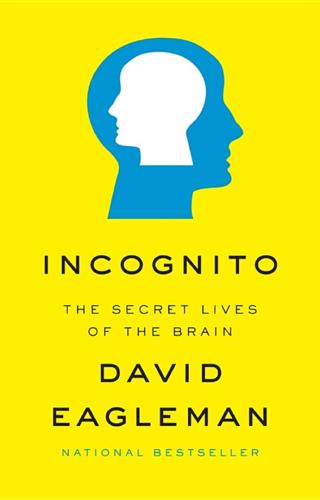
Incognito: The Secret Lives of the Brain
by
David Eagleman
Published 29 May 2011
And the dopamine system is only one of hundreds of examples. The exact levels of dozens of other neurotransmitters—for example, serotonin—are critical for who you believe yourself to be. If you suffer from clinical depression, you will probably be prescribed a medication known as a selective serotonin reuptake inhibitor (abbreviated as an SSRI)—something such as fluoxetine or sertraline or paroxetine or citalopram. Everything you need to know about how these drugs work is contained in the words “uptake inhibitor”: normally, channels called transporters take up serotonin from the space between neurons; the inhibition of these channels leads to a higher concentration of serotonin in the brain.

The Singularity Is Nearer: When We Merge with AI
by
Ray Kurzweil
Published 25 Jun 2024
See also photovoltaics solar system, 30, 97 SolarWindow Technologies, 173 Sophia (robot), 101–2 Soviet Union, 138, 162–63, 269–70 Spain literacy, 124, 125 poverty rate, 117 spatial-temporal trade-off, 69–70 speech recognition system, 20 sperm, 95 Spider-Man, 44 spinal cord injuries, 70 SSRIs (selective serotonin reuptake inhibitors), 240 Stable Diffusion, 49, 209, 221 Standard Model, 96–97, 335n standard of living, 216, 224, 227–28 Stanford University, 207–8, 232, 243, 262 StarCraft II (video game), 42 star formation, 30, 97 Star Wars (movies), 114 stem cells, 186, 190–91, 260 Stephenson, Neal, 250–51 sticky fingers problem, 250 Stirling engines, 179 stock market, 116 Stone Age, 79, 114 storytelling and negative bias, 114–16, 119–20 Stranger Things (TV show), 220 streaming, 130, 220–21 strong nuclear force, 7, 96–97 subconscious, 30–31 subjective consciousness, 62, 76–80, 81, 93, 94 subtractive manufacturing, 183 suffering, 78, 170, 230, 231, 284 Super Bowl (1984), 132 supercentenarians, 256 supercomputing, 41, 61, 154 superintelligent AI, 109 bottlenecks, 60, 61 risks and perils, 278–85 supernovas, 7, 97 superstition, 65 superviruses, 271–72 surgeries, robotic, 244–45 symbolic computing, 14–19, 40 synapses, 61, 93 synchronous neural nets.
…
BACK TO NOTE REFERENCE 23 For more on the limitations of common psychiatric drugs, see Melinda Wenner Moyer, “How Much Do Antidepressants Help, Really?,” New York Times, April 21, 2022, https://www.nytimes.com/2022/04/21/well/antidepressants-ssri-effectiveness.html; Harvard Health Publishing, “What Are the Real Risks of Antidepressants?,” Harvard Medical School, August 17, 2021, https://www.health.harvard.edu/newsletter_article/what-are-the-real-risks-of-antidepressants; Krishna C. Vadodaria et al., “Altered Serotonergic Circuitry in SSRI-Resistant Major Depressive Disorder Patient-Derived Neurons,” Molecular Psychiatry 24 (March 22, 2019): 808–18, https://doi.org/10.1038/s41380-019-0377-5.
…
With AI simulations we’ll be able to understand their root causes and treat patients effectively long before they become debilitated. Those same brain-simulation tools will also let us achieve breakthroughs for mental health disorders, which are expected to affect more than half the US population at some point in their lives.[23] So far doctors have relied on blunt-approach psychiatric drugs like SSRIs and SNRIs, which temporarily adjust chemical imbalances but often have modest benefits, don’t work at all for some patients, and carry long lists of side effects.[24] Once AI gives us a full functional understanding of the human brain—the most complex structure in the known universe!—we’ll be able to target many mental health problems at their source.
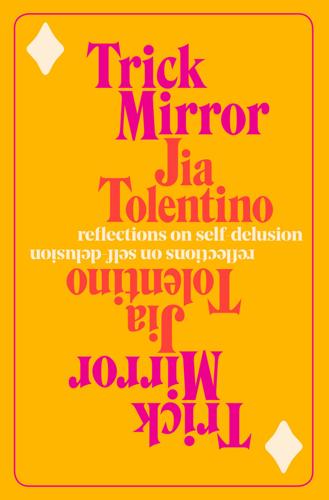
Trick Mirror: Reflections on Self-Delusion
by
Jia Tolentino
Published 5 Aug 2019
Ecstasy, now mostly called molly, is an empathogen, or an entactogen—a category named in the eighties to describe the way these compounds generate a state of empathy, or “touching within.” Its technical name is 3,4-methylenedioxymethamphetamine, or MDMA. It blocks serotonin reuptake, and induces the release of both serotonin and dopamine. (The first mechanism is what you’ll find in many antidepressants—SSRIs, or selective serotonin reuptake inhibitors, keep serotonin floating around the brain.) Ecstasy was developed in 1912, in Germany, by Merck, which was trying to find a treatment for abnormal bleeding. In the fifties, the Army Chemical Corps tested it on animals. In the sixties, a related substance called MDA gained popularity as “the love drug.”
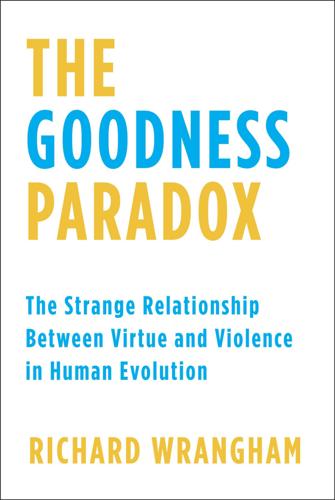
The Goodness Paradox: The Strange Relationship Between Virtue and Violence in Human Evolution
by
Richard Wrangham
Published 29 Jan 2019
The neural circuits in the prefrontal cortex that regulate reactive aggression are enhanced by a high turnover of the neurotransmitter chemical called serotonin. Individuals with low concentrations of brain serotonin are therefore more liable to impulsive violence. As a result, psychiatric patients with a history of excess reactive aggression can be helped by taking “selective serotonin reuptake inhibitors” (SSRIs), drugs that increase serotonin concentration.38 By contrast, no successful psychopharmacological interventions have been found to influence proactive aggression in humans.39 The regulatory action of serotonin depends not only on its concentration but also on the density of the relevant kind of serotonin receptors.
…
Men with low brain serotonin are more likely to be aggressive if they produce a high ratio of testosterone to the stress hormone, cortisol. Women show changes in the distribution of 5-HT1A receptors associated with changes in levels of circulating hormones across phases of the menstrual cycle. Severe cases of premenstrual syndrome, which can involve increased irritability and aggressiveness, can be helped by SSRIs. Again, these pharmacological interventions that affect serotonin levels reduce reactive, but not proactive, aggression.40 * * * — Evidence from humans indicates how proactive and reactive aggression are organized differently in the brain but does not reveal the fine details. Animal studies are needed for that; they reveal the specific neural pathways that control proactive and reactive aggression.

Augmented: Life in the Smart Lane
by
Brett King
Published 5 May 2016
Currently, treatment is somewhat hit and miss and requires physicians to try different doses of different medicines, monitoring the patient over a period of days or weeks, and then continuing to adjust the dosage until they get it right. Gene-based information will help doctors prescribe much more effective, accurate doses sequenced to DNA. So instead of using a drug like a selective serotonin reuptake inhibitor (SSRI) which attempts to control the way the body uses serotonin, personalised medicine would be able to stimulate the body to produce or reduce serotonin levels (and other neurotransmitters) to norms for your genotype. We expect to see similar advancements in painkillers, infectious disease therapies and drugs for neurological disorders such as epilepsy.
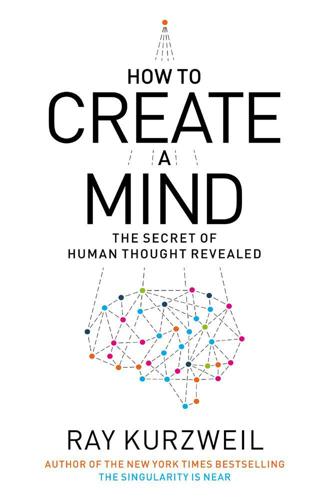
How to Create a Mind: The Secret of Human Thought Revealed
by
Ray Kurzweil
Published 13 Nov 2012
Serotonin is a neurotransmitter that plays a major role in the regulation of mood. In higher levels it is associated with feelings of well-being and contentment. Serotonin has other functions, including modulating synaptic strength, appetite, sleep, sexual desire, and digestion. Antidepression drugs such as selective serotonin reuptake inhibitors (which tend to increase serotonin levels available to receptors) tend to have far-reaching effects, not all of them desirable (such as suppressing libido). Unlike actions in the neocortex, where recognition of patterns and activations of axons affect only a small number of neocortical circuits at a time, these substances affect large regions of the brain or even the entire nervous system.
…
K., 117, 121 Roxy Music, 118 Russell, Bertrand, 104, 181, 220 Rutter, Brad, 165 saccades, 73 Salk Institute, 89 same-sex marriage, 278 Sandberg, Anders, 129–30, 318n Schopenhauer, Arthur, 235, 240 science: as based on objective measurement, 211 specialization in, 115 Science, 82–83 “scientist’s pessimism,” 272–73 Searle, John, 170, 201, 205, 206, 222 “Chinese room” thought experiment of, 170, 274–75 Seinfeld (TV show), 75 selective serotonin reuptake inhibitors, 106 self-organizing systems, 144, 147, 149, 150, 154–55, 162, 168, 171–72, 175, 197, 270 sensorimotor area, 77 sensory cortex, 99 sensory nerves, 99 sensory organs, 58 sensory receptors, 99 sensory-touch pathway, 58, 60, 94–98, 95, 97–100, 97, 99 serotonin, 105, 106, 107, 118 Seung, Sebastian, 10 Sex and the City (TV show), 117 sexual reproduction, 118 simulated, 148 Shakespeare, William, 39, 114–15, 209 Shannon, Claude, 183–84, 190 Shashua, Amnon, 159 Shaw, J.
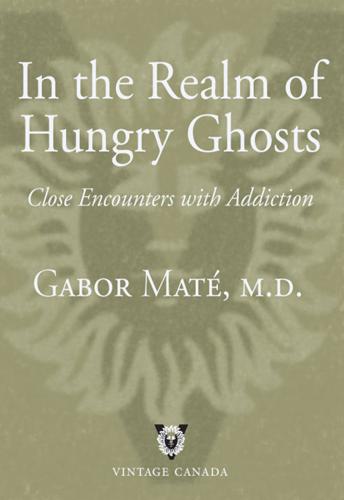
In the Realm of Hungry Ghosts: Close Encounters With Addiction
by
Gabor Mate
and
Peter A. Levine
Published 5 Jan 2010
The greater the reuptake, the less neurotransmitter remains active between the neurons. Cocaine’s action may be likened to that of the antidepressant fluoxetine (Prozac). Prozac belongs to a family of drugs that increase the levels of the mood-regulating neurotransmitter serotonin between nerve cells by blocking its reuptake. They’re called selective serotonin reuptake inhibitors, or SSRIs. Cocaine, one might say, is a dopamine reuptake inhibitor. It occupies the receptor on the cell surface normally used by the brain chemical that would transport dopamine back into its source neuron. In effect, cocaine is a temporary squatter in someone else’s home. The more of these sites occupied by cocaine, the more dopamine remains in the synaptic space and the greater the euphoria reported by the user.8 Unlike Prozac, cocaine is not selective: it also inhibits the reuptake of other messenger molecules, including serotonin.

The Geeks Shall Inherit the Earth: Popularity, Quirk Theory, and Why Outsiders Thrive After High School
by
Alexandra Robbins
Published 31 Mar 2009
Teams of researchers administered to volunteers a drug to increase serotonin levels, then monitored them during a puzzle-based task with a partner. The treated individuals demonstrated an increase in “socially affiliative” behaviors, such as dominant eye contact and clear communication. more recent studies have also reported that administration of a selective serotonin reuptake inhibitor (SSRI) “can modify social status.” In 2009, Michigan State University professor S. Alexandra Burt discovered that a region of a particular gene was associated with popularity ratings of teenage boys (in experimental settings), leading her to conclude that genetics may play a part in popularity, at least when it comes to the serotonin link.
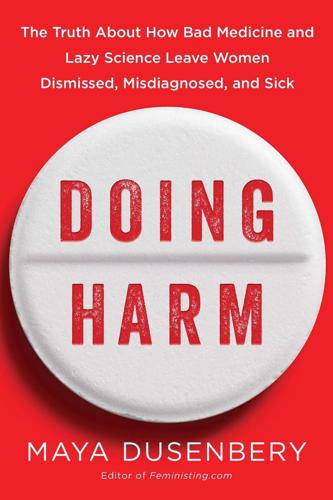
Doing Harm: The Truth About How Bad Medicine and Lazy Science Leave Women Dismissed, Misdiagnosed, and Sick
by
Maya Dusenbery
Published 6 Mar 2018
Women have a greater risk than men of developing a potentially fatal heart arrhythmia that can be triggered by a variety of drugs, including antibiotics, antidepressants, and cholesterol-lowering drugs. Beta-blockers tend to have a more pronounced effect in women than in men. Women with depression generally respond better to selective serotonin reuptake inhibitors (SSRIs) than tricyclic antidepressants, while the opposite is true of men. Women tend to wake up from general anesthesia faster than men and suffer more side effects from it. These sex/gender differences in drug response, it should be noted, are not all simply due to women’s lower average body weight.

Why Women Have Better Sex Under Socialism: And Other Arguments for Economic Independence
by
Kristen R. Ghodsee
Published 20 Nov 2018
And they worry that American women, and especially younger millennial women, will vote for left-leaning or socialist candidates, especially when women understand that they disproportionately benefit from state regulation of markets, single-payer health care, tuition-free postsecondary education, social ownership of large enterprises like utilities or banks that are “too big to fail,” and other redistributive policies. Today, millennials and members of generation Z view democratic socialism as an answer to their many frustrations—one less libido-inhibiting than selective serotonin reuptake inhibitors. In a widely shared article for the Nation in January 2017, “Why Millennials Aren’t Afraid of Socialism,” Julia Mead recounts her personal discovery of socialist ideals and how American political discourse foreclosed their discussion before the emergence of Bernie Sanders in the 2016 Democratic primary: The erasure of socialist ideas from serious political discourse throughout most of my life wasn’t a historical fluke.
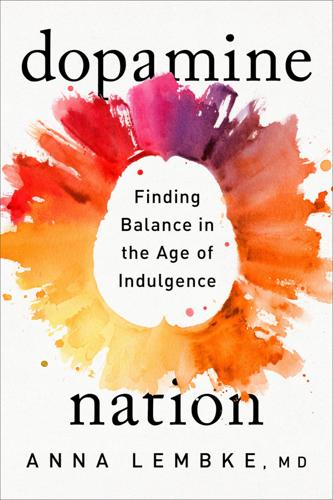
Dopamine Nation: Finding Balance in the Age of Indulgence
by
Anna Lembke
Published 24 Aug 2021
The psychologist who administered the test recommended he follow up with a psychiatrist to prescribe an antianxiety medication and, David said, a “stimulant for my ADD.” He was not offered psychotherapy or other nonmedication behavioral modification. David went to see a psychiatrist, who prescribed Paxil, a selective serotonin reuptake inhibitor to treat depression and anxiety, and Adderall, a stimulant to treat ADD. “So how did it go for you—the meds, I mean?” “The Paxil helped with the anxiety a little at first. It dampened down some of the worst sweating, but it wasn’t a cure. I ended up changing my major from computer engineering to computer science, thinking that would help.
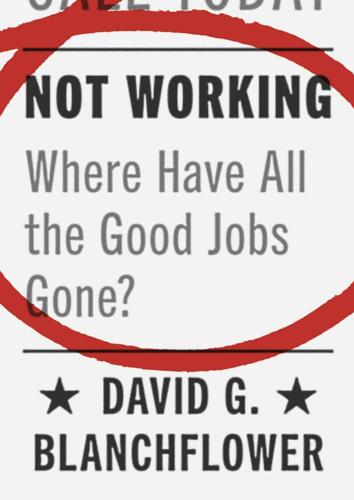
Not Working: Where Have All the Good Jobs Gone?
by
David G. Blanchflower
Published 12 Apr 2021
The incidence was broadly flat from 2004 through 2010 but then more than doubled between 2010 and 2018 with the implementation of austerity.14 The consumption of antidepressants around the world has been little studied in the economics literature.15 One article does show that job loss caused by plant closure leads to greater antidepressant consumption; another argues that an increase in sales of one antidepressant—selective serotonin reuptake inhibitors (SSRIs)—by one pill per capita produces a large reduction (of 5%) in a country’s suicide rate. A further exception in the wider literature examines data on the timing of people’s Google searches on antidepressants’ side effects.16 For Europe, Knapp et al. (2007) document a near-doubling of antidepressant consumption in the ten years from 1990 to 2000.
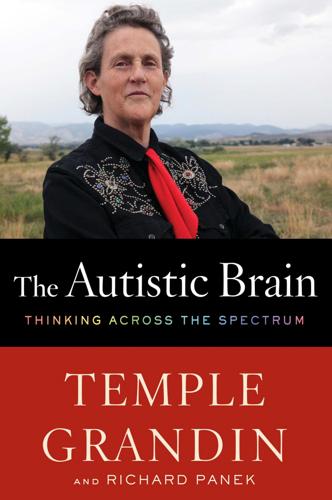
The Autistic Brain: Thinking Across the Spectrum
by
Temple Grandin
and
Richard Panek
Published 15 Feb 2013
The research indicated that mothers who took antidepressants during the year before delivery had a 2.1 percent greater risk of having children with ASDs, and the greatest increase in risk, 2.3 percent, came when the drug was taken during the first trimester. But here’s the thing. I think Prozac is a fabulous drug. I have friends who would be in really bad shape if they weren’t on Prozac, Lexapro, or some other selective serotonin reuptake inhibitor. I know people who have been saved by these drugs. I myself wouldn’t be functional without them. They can transform a life merely being lived into a life worth living. So women who are pregnant or are thinking about becoming pregnant and who take antidepressants should consult a doctor and weigh the risks and benefits.

Admissions: A Life in Brain Surgery
by
Henry Marsh
Published 3 May 2017
According to the locals he had been ‘a bit of a wild one’ when he was younger, but all I got to hear were stories of how he would sometimes come back to the cottage drunk on his bicycle and fall into the canal. He had a son who had once lived in the cottage with him for a while, but it seems that they had become estranged. There had been a few pathetic and broken children’s toys in the rubbish in the garden. I had found shiny foil blister packs of antidepressants – selective serotonin reuptake inhibitors – in the piles of rubbish in the garden. Emma told me that he had died in the cottage itself. ‘We didn’t see him for several days and eventually got the police to break the door down. He was very dead – in an armchair.’ I slowly built up a huge mound of several hundred black plastic builders’ bags, filled with fifty years of my predecessor’s rubbish and discarded possessions.
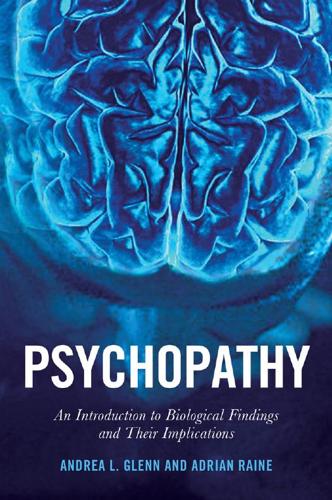
Psychopathy: An Introduction to Biological Findings and Their Implications
by
Andrea L. Glenn
and
Adrian Raine
Published 7 Mar 2014
Similarly, a study of obsessive-compulsive disorder found that pretreatment activity in the orbitofrontal cortex predicted treatment response to both behavioral therapy and medication (Brody et al. 1998). In a sample of youth with anxiety disorder diagnoses, McClure et al. (2007) found that pretreatment activity in the left amygdala was negatively associated with symptom improvement in response to either fluoxetine (a selective serotonin reuptake inhibitor) or cognitive behavioral therapy. Finally, Kito, Hasegawa, and Koga (2012) found that responsiveness to rTMS as a treatment for depression was associated with pretreatment levels of cerebral blood flow in the ventromedial prefrontal cortex. Thus, these studies show that pretreatment levels of brain functioning can help to predict whether individuals will respond to a variety of treatments, whether behaviorally or biologically based.
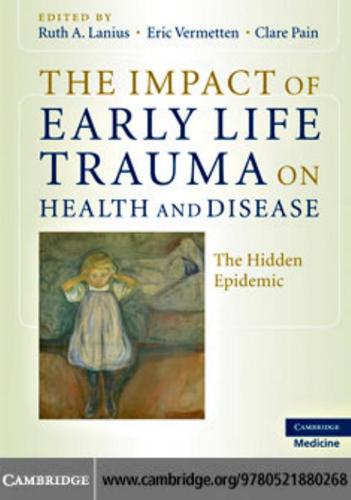
The Impact of Early Life Trauma on Health and Disease
by
Lanius, Ruth A.; Vermetten, Eric; Pain, Clare
Published 11 Jan 2011
Another meta-analysis published the same year had similar findings [66]. One study showed that women with abuserelated PTSD had deficits in hippocampal activation while performing a verbal declarative memory task [63]. Both hippocampal atrophy and hippocampalbased memory deficits were reversed with treatment with the selective serotonin reuptake inhibitor paroxetine, which has been shown to �promote neurogenesis in the hippocampus in preclinical studies[67]. It has been hypothesized that stress-induced hippocampal dysfunction may mediate many of the symptoms of PTSD that are related to memory dysregulation, including both explicit memory deficits and fragmentation of memory, in abuse survivors[68].
…
In rhesus monkeys, early social deprivation induces cognitive impairment and enhanced anxiety in adult life [89]. Interestingly, subsequent supportive maternal caregiving may reverse neurobiological and behavioral alterations induced by early social deprivation. These alterations, most notably HPA axis sensitization, may also be reversed by a variety of psychotropic agents including selective serotonin reuptake inhibitors. Cross-fostering experiments indicate that increased handling and maternal care may also reduce stress sensitivity associated with heritable factors in rats. Taken together, these studies suggest that social support is an important resilience factor that may moderate the gene–environment interactions in the expression of stress response and the ensuing allostatic load.

The Origins of Political Order: From Prehuman Times to the French Revolution
by
Francis Fukuyama
Published 11 Apr 2011
Frank, Choosing the Right Pond: Human Behavior and the Quest for Status (New York: Oxford University Press, 1985). 34 Ibid., pp. 21–25. Conversely, low-status human beings often suffer from chronic depression and have been successfully treated with Prozac, Zoloft, and other so-called selective serotonin reuptake inhibitors, which increase levels of brain serotonin. See Roger D. Masters and Michael T. McGuire, The Neurotransmitter Revolution: Serotonin, Social Behavior, and the Law (Carbondale: Southern Illinois University Press, 1994), p. 10. 35 On this issue, see Francis Fukuyama, “Identity, Immigration, and Liberal Democracy,” Journal of Democracy 17, no. 2 (2006): 5–20. 36 See Charles Taylor, Sources of the Self: The Making of the Modern Identity (Cambridge, MA: Harvard University Press, 1989). 37 Wade, Before the Dawn, pp. 16–17. 38 See R.
…
Rg Veda Richelieu, Cardinal Rights of Man Robertson, Graeme Rock Edicts Rodrik, Dani Romance of the Three Kingdoms, The (Luo Guanzhong) Romania Romanov dynasty Romans, ancient; in Britain; Christianity becomes state religion of; classical republicanism of; clientes of powerful leaders of; founding myths of; Indo-Aryan progenitors of; kinship system of; law of (see also Justinian Code); military forces of; overrun by Germanic tribes; patrimonialism of; urban tradition of; violence as driver of state formation by Romeo and Juliet (Shakespeare) Romulus Rousseau, Jean-Jacques Royal Council, French Royal Council, Spanish rule of law; autonomy and; Chinese lack of; in Denmark; economic growth and; in England (see also Common Law); in France; in India, ; in Latin America; in Middle East; origins of; in Ottoman Empire; religion and; Roman, see Justinian Code; in Russia; in Spain; in United States Rurik dynasty Rurzhen Russia; absolutism in; assembly of nobles in; Communist, see Soviet Union; democratization in; Enlightenment in; financial crisis in; Indo-Aryan tribes in; map of; military expenditures of; Mongol invasion of; noble rankings in; religion in, see Russian Orthodox church; representative institutions in; rule of law in; Rurik dynasty in; serfdom in; slave markets in; Varangian conquest of Russian Orthodox church Russo-Japanese War Rwanda Saberwal, Satish Sachs, Jeffrey Safavids Sahel Sahlins, Marshall Sahul, ancient continent of Saladin (Salah al-Din) Salic Law Saltykov family Samudra Gupta Sankoh, Foday Sanskrit Santo Domingo Saracens Sasanian Empire Satiyaputras Satvahanas Saudi Arabia Saxons Scandinavia; see also Denmark; Norway; Sweden Schick, Allen Schleswig Scholastic Aptitude Tests (SATs) Schurmann, Franz Science and Civilisation in China (Needham) Scotland Scott, James Scythians Second Dutch War Second Treatise on Government (Locke) Seeing Like a State (Scott) selective serotonin reuptake inhibitors Selim I (the Grim), Sultan Selim II, Sultan Selim III, Sultan Seljuk sultanate Sen, Amartya Serbia serfdom; Catholic church and; in China; in Denmark; in Hungary; in Russia; in tribal societies Service, Elman Shakas Shakers Shakespeare, William Shang Dynasty Shang Lu Shang Yang Shapiro, Martin sharia Shastras Shenzong, Emperor of China Sheremetov, Count D.
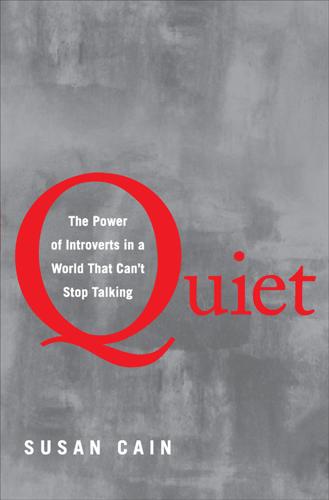
Quiet: The Power of Introverts in a World That Can't Stop Talking
by
Susan Cain
Published 24 Jan 2012
It can make people anxious, unpleasantly anxious, so anxious that they sit out bull markets while everyone else gets rich. But it also causes them to take fewer stupid risks. This system is mediated in part by a neurotransmitter called serotonin—and when people are given drugs like Prozac (known as selective serotonin reuptake inhibitors) that affect the loss avoidance system, they become more blasé about danger. They also become more gregarious. These features coincide uncannily, points out the neurofinance expert Dr. Richard Peterson, with the behavior of irrationally exuberant investors. “The characteristics of decreased threat perception and increased social affiliation [resulting from drugs like Prozac] mirror the decreased risk perception and herding of excessively bullish investors,” he writes.

The Economics of Enough: How to Run the Economy as if the Future Matters
by
Diane Coyle
Published 21 Feb 2011
Campbell (1971). 28 Layard (2005), 48. 29 Haidt (2006). 30 Crafts (1999). 31 Johns and Ormerod (2007). 32 For example, Angus Deaton (2008); Betsey Stevenson and Juston Wolfers (2008). 33 Stevenson and Wolfers (2008), 3. 34 Inglehart et al. (2008). 35 Helliwell et al. (2010). 36 See Blanchflower and Oswald (2004), Frey and Stutzer (2002), Van Praag and Ferer-i-Carbonell (2004), Inglehart et al. (2008). 37 Sen (2009a). 38 Ibid., 275–76. 39 See Gilles Saint-Paul (2010) on the authoritarianism of the utilitarian-based approach to “happiness.” 40 Layard (2005), Wilkinson (2007). 41 Including Mihaly Csikszentmilhalyi (1990), Ed Diener and Robert Biswas-Diener (2008), Jonathan Haidt (2006) and Martin Seligman (2002). 42 Csikszentmilhalyi (1990), 9. 43 Diner and Biswas-Diener (2008), 131. 44 Ibid., 154. 45 Haidt (2006), 96. 46 Haidt (2006), 91. 47 The drugs are the selective serotonin reuptake inhibitors such as Prozac. Haidt writes: “Prozac is a way to compensate for the unfairness of the cortical lottery” (ibid., 43). He does not condemn the use of this class of drugs to tackle depression, although he points out that there are side-effects. 48 Ibid., 91–93. 49 Csikszentmilhalyi (1990), 11. 50 Haidt (2006), 175–76. 51 Positive psychologists Chris Peterson and Martin Seligman have listed the character strengths whose cultivation promotes virtue in this sense on the website authentichappiness.org. 52 Diener and Biswas-Diener (2008), 224. 53 Csikszentmilhalyi, 160. 54 Haidt (2006), 177. 55 Barrington-Leigh et al. (2010). 56 Frey and Stutzer (2007) and Saint-Paul (2011). 57 See also Sen (1999a).
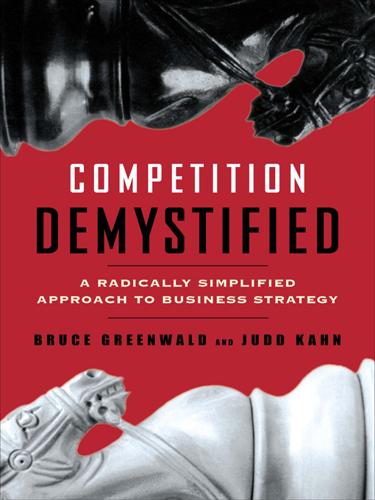
Competition Demystified
by
Bruce C. Greenwald
Published 31 Aug 2016
Compared to IBM’s long-term dominance in computers, from the late 1950s to 1990, for example, or Coca-Cola’s century-long history in the soda market, patent protection is relatively brief. Outside of pharmaceuticals, patent-protected positions are relatively rare. Even within pharmaceuticals, “me-too” products—how many selective serotonin reuptake inhibitors are there on the market?—tend to undermine technological advantages. But patents are not the only source of advantages from proprietary technology. In industries with complicated processes, learning and experience are a major source of cost reduction. The percentage of good yields in most chemical and semiconductor processes often increases dramatically over time, due to numerous small adjustments in procedures and inputs.
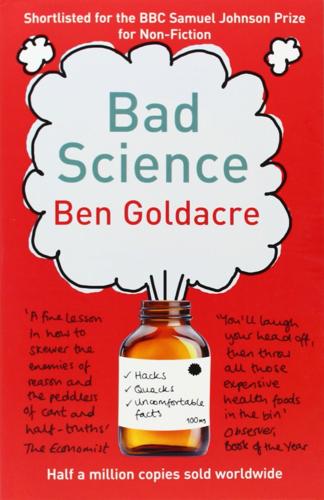
Bad Science
by
Ben Goldacre
Published 1 Jan 2008
They registered fifty a year in the 1990s, but now it’s down to twenty a year, and a lot of those are just copies. They are in trouble. Because they cannot find new treatments for the diseases we already have, the pill companies instead invent new diseases for the treatments they already have. Recent favourites include Social Anxiety Disorder (a new use for SSRI drugs), Female Sexual Dysfunction (a new use for Viagra in women), night eating syndrome (SSRIs again) and so on: problems, in a real sense, but perhaps not necessarily the stuff of pills, and perhaps not best conceived of in reductionist biomedical terms. In fact, refraining intelligence, loss of libido, shyness and tiredness as medical pill problems could be considered crass, exploitative, and frankly disempowering.
…
The top-scoring paper was a case-control study which showed that patients had a higher risk of heart attack if they were taking the drugs rofecoxib (Vioxx), diclofenac or ibuprofen. At number two was a large meta-analysis of drug company data, which showed no evidence that SSRI antidepressants increase the risk of suicide, but found weak evidence for an increased risk of deliberate self-harm. In third place was a systematic review which showed an association between suicide attempts and the use of SSRIs, and critically highlighted some of the inadequacies around the reporting of suicides in clinical trials. This is critical self-appraisal, and it is very healthy, but you will notice something else: all of those studies revolve around situations where drug companies withheld or distorted evidence.
…
If you follow the references in the back, you will find studies where patients were given really rather high doses of old–fashioned antipsychotic medication (which made the new-generation drugs look as if they were better in terms of side-effects), and studies with doses of SSRI antidepressants which some might consider unusual, to name just a couple of examples. I know. It’s slightly incredible. Of course, another trick you could pull with side-effects is simply not to ask about them; or rather—since you have to be sneaky in this field—you could be careful about how you ask. Here is an example. SSRI antidepressant drugs cause sexual side-effects fairly commonly, including anorgasmia. We should be clear (and I’m trying to phrase this as neutrally as possible): I really enjoy the sensation of orgasm.
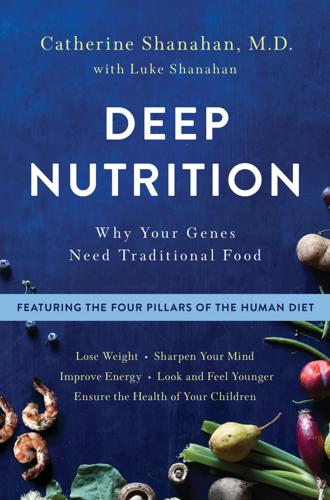
Deep Nutrition: Why Your Genes Need Traditional Food
by
Catherine Shanahan M. D.
Published 2 Jan 2017
Combined vaccines are like a sudden onslaught to the body’s immune system: parental concerns about vaccine ‘overload’ and ‘immune-vulnerability, Hilton S, Petticrew M, Hunt K, Vaccine. 2006;24(20):4321–7. 395. Maternal smoking and autism spectrum disorder: a meta-analysis, Rosen BN, Lee BK, Lee NL, Yang Y, Burstyn I. 396. In utero exposure to selective serotonin reuptake inhibitors and risk for autism spectrum disorder, Gidaya NB, Lee BK, Burstyn I, Yudell M, Mortensen EL, Newschaffer CJ J, Autism Dev Disord, October 2014, 44(10):2558-67. 397. Reduced prefrontal dopaminergic activity in valproic acid-treated mouse autism model, Hara Y, Takuma K, Takano E, Katashiba K, Taruta A, Higashino K, Hashimoto H, Ago Y, Matsuda T, Behav Brain Res, August 1, 2015, 289:39-47. 398.
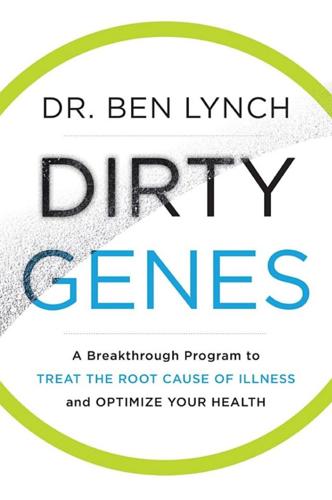
Dirty Genes: A Breakthrough Program to Treat the Root Cause of Illness and Optimize Your Health
by
Ben Lynch Nd.
Published 30 Jan 2018
Higher serotonin levels slow a fast COMT, which is why I recommend that people with a fast COMT and a fast MAOA consider 5-HTP. However, do not take 5-HTP if you’re on an SSRI. Spot Cleaning Your Slow MAOA The Slow MAOA Lifestyle ■Select Clean Genes recipes that support your slow MAOA. ■The recommendations for a slow COMT (earlier in this chapter) might also benefit you greatly, since both slow genes reduce how fast dopamine and norepinephrine clear out of your system. Supplements and Medications That May Adversely Affect Your Slow MAOA ■SSRIs. If you’re experiencing headaches, irritability, insomnia, discuss with your doctor that you believe the dose is too high or the medication is potentially not suitable for your genes.
…
When I drink alcohol, I become an angry drunk. I’m not drawn to carbs, and I feel less irritable when I don’t eat many of them. I’m more irritable and angry when I eat cheese and/or chocolate or drink wine. It takes me a while to fall asleep. When I do fall asleep, I tend to stay asleep through the night. My doctor put me on an SSRI for depression, and I got very irritable from it. Melatonin doesn’t work well for me. It makes me feel more awake and irritable. Caffeine tends to make me irritable. Lithium helps my mood. 5-HTP makes me feel anxious and irritable. Inositol overstimulates me. I’m self-confident. I’m a man. MAOA (fast) Since I was a kid, I’ve had a very hard time focusing and paying attention.
…
I tend to be depressed and anxious. I get a bit obsessive about things. I have fibromyalgia, constipation, or irritable bowel syndrome. Melatonin works quite well to help me sleep. Inositol improves my mood. 5-HTP improves my mood. Lithium makes me feel more depressed. My doctor put me on an SSRI, and it did help. GST/GPX I’m sensitive to chemicals and smells. I feel way better after taking a sauna or sweating heavily. It’s easy for me to gain weight even though I eat right. Cancer runs in my family. I notice gray or white hairs coming in when I get stressed. I have early graying of my hair.
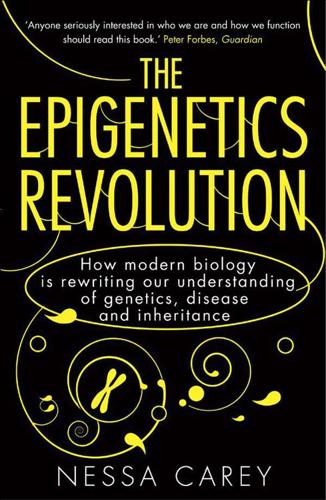
Epigenetics Revolution: How Modern Biology Is Rewriting Our Understanding of Genetics, Disease and Inheritance
by
Nessa Carey
Published 31 Aug 2011
Effective treatment for depression took a big step forwards in the early 1990s with the licensing by the US Food and Drug Administration of a class of drugs called SSRIs – selective serotonin re-uptake inhibitors. Serotonin is a neurotransmitter molecule – it conveys signals between neurons. Serotonin is released in the brain in response to pleasurable stimuli; it’s the feel-good molecule that we met in our happy rat babies. The levels of serotonin are low in the brains of people suffering from depression. SSRI drugs raise the levels of serotonin in the brain. It makes sense that drugs that cause an increase in serotonin levels would be useful in treating depression.
…
It makes sense that drugs that cause an increase in serotonin levels would be useful in treating depression. But there’s something odd about their action. The serotonin levels in the brain rise quite quickly when patients are treated with the SSRI drugs. But it usually takes at least four to six weeks before the terrible symptoms of severe depression begin to lift. This suggests that there is more to depression than simply a drop in the levels of a single chemical in the brain, which perhaps isn’t that surprising. It’s very unusual for depression to happen overnight – it’s not like coming down with the flu. There’s now a reasonable amount of data showing that there are much longer-term changes in the brain as depression develops.
…
This decreased response to a pleasant stimulus is called anhedonia. It seems to be one of the best surrogate markers in animals for human depression15. Most people who have been severely depressed talk about losing interest in all the things that used to make life joyful before they became ill. When the stressed mice were treated with SSRI anti-depressants, their interest in the sugared water gradually increased. But when they were treated with SAHA, the HDAC inhibitor, they regained their interest in their favourite drink much faster16. It’s not just in the jumpy or chilled mice that histone deacetylase inhibitors can change animal behaviour.
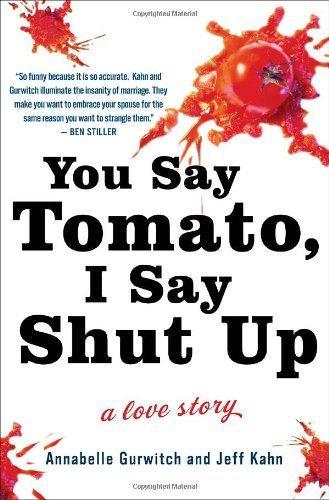
You Say Tomato, I Say Shut Up
by
Annabelle Gurwitch
Published 31 Aug 2010
Once I was outside a department store when a poop rolled out of my son’s pants and I kicked it under a decorative shrub. A woman who witnessed this act hissed, “I saw what you did!” Yeah, well, so what, that’s a woman who’s never changed a colostomy bag in an airplane bathroom! But I knew that Martha would never have done that. Meanwhile, I developed a twitch in my eye, I started taking Xanax and SSRIs,* my clothes were stained with bodily fluids and X-ray contrast dyes, and my coworkers’ patience was tested by my need to constantly reschedule shooting days to accommodate Ezra’s frequent surgeries. In fact, on our anniversary, during that first year of Ezra’s life, Jeff valiantly tried to instill some romance into our lives, but my work ran late and Jeff spent most of the romantic meal he had planned for us being pissed off at me and drinking alone.
…
But eleven years after our son’s birth, one would think that maybe, just maybe, my wife and I could resume our mutual desire to get her off. I mean, how long could she keep using that “I just had a baby” excuse anyway? The truth is, Annabelle’s high tide of horniness began to recede innocently enough just after Ezra was born when she began to take antidepressants. The SSRIs dovetailed nicely with all the recently acquired anxieties caused by Ezra’s health complications and created a perfect storm of lack of libido. The antidepressants had beneficial results for Annabelle, and sure, she might have been able to function better in her career, but was it really worth it?
…
In their 2009 divorce petition, he is asking either to have the kidney returned or to receive a million dollars in compensation. my chemical romance Love produces chemical reactions in the brain, but what if you aren’t in love anymore? How can you produce the same results? Serotonin (falling in love): sunlight, SSRIs, warm milk, chocolate Oxytocin (trust and bonding): have baby and bond with it, eat more chocolate Endorphins (security of long-term love): go for a run or a swim, chocolate again Phenylethylamine (adrenaline rush of affair): climb Mount Kilimanjaro, meditation, caffeine, just give up and buy the chocolate already 70 percent of couples argue about money at least once a week.
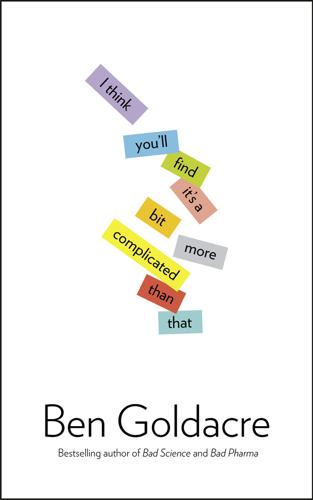
I Think You'll Find It's a Bit More Complicated Than That
by
Ben Goldacre
Published 22 Oct 2014
That isn’t very different from 43 per cent, so it feels unlikely that the present increase in prescriptions is due to the recession. That’s not the only problem here. It turns out that the number of prescriptions for an SSRI drug is a pretty unhelpful way of measuring how many people are being treated for depression: not just because people get prescribed SSRIs for all kinds of other things, like anxiety, PTSD, hot flushes, and more; and not just because doctors have moved away from older types of antidepressants, so they would be prescribing more of the newer SSRI drugs even if the number of people with depression had stayed the same. Excitingly, it’s a bit more complicated than that. A 2006 paper from the British Journal of General Practice looked at prescribing and diagnosis rates in Scotland.
…
Instead they approached each hospital with a Freedom of Information Act request, asking the surgeons themselves for the figures on how many operations they performed, and how many people died. Many straightforward academic papers are built out of this kind of investigative journalism work, from early epidemiology research into occupational hazards, through to the famous recent study hunting down all the missing trials of SSRI antidepressants that companies had hidden away. It’s not clear whether this FOI data will be more reliable than the Hospital Episodes numbers – ‘Discuss the strengths and weaknesses of the HES dataset’ is a standard public health exam question – and reliability will probably vary from hospital to hospital.
…
The journalists are keen for you to know that these figures come from a Freedom of Information Act request, which surprised me, since each year – like you – I enjoy reading the Prescription Cost Analysis documents, which detail everything that has been prescribed over the previous year. The 2009 data was published in April 2010, so I guess the 2010 data was due about now. But are the numbers correct? Yes. From 2006 to 2010 there was a 43 per cent increase in the number of prescriptions for the SSRI class of antidepressants. Does that mean more people are depressed in the recession? Firstly, this rise in scripts for antidepressants isn’t a new phenomenon. In 2009 the BMJ published a paper titled ‘Explaining the rise in antidepressant prescribing’, which looked at the period from 1993 to 2005.
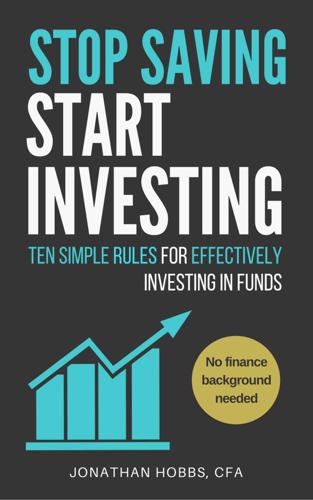
Stop Saving Start Investing: Ten Simple Rules for Effectively Investing in Funds
by
Jonathan Hobbs
Published 5 Apr 2017
Fund risk and reward profiles Funds available on UK and European online investment platforms usually use the Synthetic Risk and Reward Indicator (SRRI)35 to measure volatility. The SRRI rating ranges from 1 (lowest volatility) to 7 (highest volatility): SSRI rating Yearly volatility range 1 0 - 0.49% 2 0.5 -1.99% 3 2 - 4.99% 4 5 - 9.99% 5 10 -14.99% 6 15 - 24.99% 7 25% + For SRRI rating purposes, a fund’s yearly volatility range is the average percentage by which its returns have moved up or down each year over the last five years. Higher SSRI ratings mean more volatility but typically lead to higher investment returns over the long-term. Target FOF examples For the next few pages, I’ve used Hargreaves Lansdown36 to generate some hypothetical FOF portfolios.
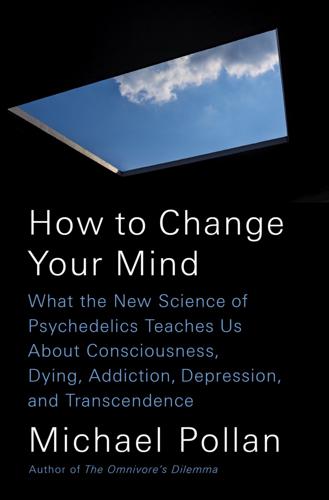
How to Change Your Mind: What the New Science of Psychedelics Teaches Us About Consciousness, Dying, Addiction, Depression, and Transcendence
by
Michael Pollan
Published 30 Apr 2018
” * The panel was recorded and is available on YouTube: https://www.youtube.com/watch?v=v2VzRMevUXg. * As in the case of many drugs, the SSRI antidepressants introduced in the 1980s were much more effective when they were new, probably owing to the placebo effect. Today, they perform only slightly better than a placebo. * The statistical “effect size” of these results—at or above 1.0 for most of the outcome measures used in both trials—is remarkable for a psychiatric treatment. As a comparison, when the SSRI antidepressants had their first clinical trials, the effect size was only 0.3—which was good enough for them to be approved
…
The fact that such a vanishingly small number of LSD molecules could exert such a profound effect on the mind was an important clue that a system of neurotransmitters with dedicated receptors might play a role in organizing our mental experience. This insight eventually led to the discovery of serotonin and the class of antidepressants known as SSRIs. But the powers that be at St. George’s Hospital were unsupportive of Osmond’s research on mescaline. In frustration, the young doctor went looking for a more hospitable institution in which to conduct it. This he found in the western Canadian province of Saskatchewan, of all places. Beginning in the mid-1940s, the province’s leftist government had instituted several radical reforms in public policy, including the nation’s first system of publicly funded health care.
…
One candidate for that chemical is the psychedelic molecule DMT, which has been found in trace amounts in the pineal gland of rats. The science of serotonin and LSD has been closely intertwined since the 1950s; in fact, it was the discovery that LSD affected consciousness at such infinitesimal doses that helped to advance the new field of neurochemistry in the 1950s, leading to the development of the SSRI antidepressants. But it wasn’t until 1998 that Franz Vollenweider, a Swiss researcher who is one of the pioneers of psychedelic neuroscience, demonstrated that psychedelics like LSD and psilocybin work on the human brain by binding with the 5-HT2A receptors. He did this by giving subjects a drug called ketanserin that blocks the receptor; when he then administered psilocybin, nothing happened.
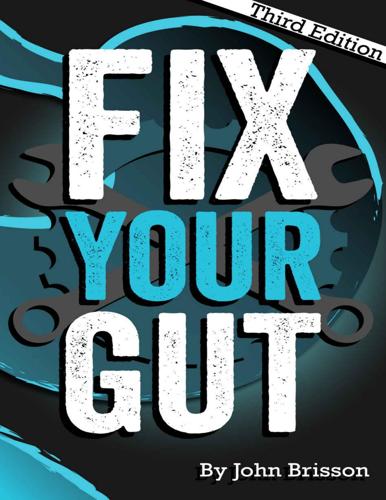
Fix Your Gut: The Definitive Guide to Digestive Disorders
by
John Brisson
Published 12 Apr 2014
Finally, the LES will also typically relax to allow the vomit to travel out of the stomach when one is vomiting. The lower esophageal sphincter may become weakened over a period of time if you consistently ingest certain foods (peppermint, chocolate, uncooked onions), frequently use nicotine or caffeine, take certain medications (SSRI antidepressants, anticholinergic medicines, uniphyl, sedatives, and estrogen replacements), if you have had nerve damage done to the vagus nerve, or have a stomach infection like H. pylori. The LES might also become damaged if you are suffering from SIBO, if you have a hiatal hernia, or if you were born with a malfunctioning LES.
…
Galactomune – one scoop daily mixed well with filtered water at breakfast. Use with caution if you have yeast overgrowth or Th2 elevated issues. 5-HTP supplement – start with 50 mg nightly and increase by 50 mg up to a max of 300 mg nightly depending on an improvement of motility. Do not use if you are on any medication that modulates serotonin levels (SSRI for example) or if you suffer from any mental health issues. Discontinue if you have any side effects and do not take longer than a few weeks. Calcium disodium EDTA chelates iron out of the biofilm to break it up and pull it away from pathogenic bacteria. The NAC or lactoferrin will do the same thing as the EDTA by chelating the iron out of the biofilm.
…
An underutilization of serotonin in the gut causes constipation from the lack of muscle contractions in the gut. An over production or high circulating cellular level of serotonin can be one of the causes of intestinal problems like IBS. A high level of serotonin causes the bowels to spasm and constantly contract causing cramps and diarrhea. This is the reason one of the main side effects of SSRIs is IBS. It is important for you to get your neurotransmitters tested before supplementing with 5HTP for a long period. 5-HTP supplementation also increases melatonin levels in the body. Activated Charcoal Uses: absorbs toxins from meals that we eat and reduces herx reactions that occur in the digestive tract Brand: Upgraded™ Activated Charcoal Side effects: RARE: systemic allergic reaction, constipation Activated charcoal comes from burning a carbon source that yields a blackish porous material.
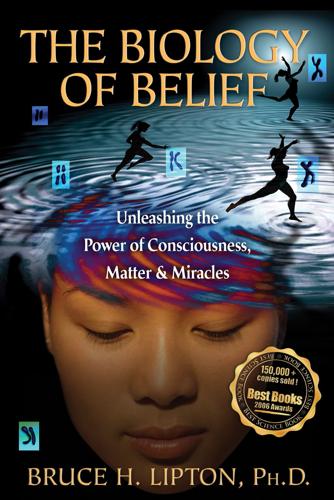
The Biology of Belief: Unleashing the Power of Consciousness, Matter & Miracles
by
Bruce H. Lipton
Published 1 Jan 2005
(Segerstrom and Miller 2004; Kopp and Réthelyi 2004; McEwen and Lasky 2002; McEwen and Seeman 1999) In a revealing study published in 2003 in Science, researchers considered why patients on SSRI antidepressants, such as Prozac or Zoloft, don’t feel better right away. There is usually at least a two-week lag between starting the drugs and the time the patients feel they are getting better. The study found that depressed people exhibit a surprising lack of cell division in the region of the brain called the hippocampus, a part of the nervous system involved with memory. Hippocampal cells renewed cell division at the time patients first began to experience the mood-shifting effect of the SSRI drugs, weeks after the onset of the drug regimen.
…
Hippocampal cells renewed cell division at the time patients first began to experience the mood-shifting effect of the SSRI drugs, weeks after the onset of the drug regimen. This study and others challenge the theory that depression is simply the result of a “chemical imbalance” affecting the brain’s production of monoamine signaling chemicals, specifically serotonin. If it were as simple as that, the SSRI drugs would likely restore that chemical balance right away. More researchers are pointing to the inhibition of neuronal growth by stress hormones as the source of depression. In fact, in chronically depressed patients, the hippocampus and the prefrontal cortex, the center of higher reasoning, are physically shrunken. A review of this study published in Science reported: “Overtaking the monoamine hypothesis in recent years has been the stress hypothesis, which posits that depression is caused when the brain’s stress machinery goes into overdrive.

Asperger Syndrome and Alcohol: Drinking to Cope?
by
Matthew Tinsley
and
Sarah Hendrickx
Published 31 May 2008
I alienated many people, including various partners, and I am a much more content person now I am sober. Coming out the other side I am still taking the anti-depressant fluoxetine, and other medication (beta-blockers) to prevent blood vessels in my stomach from haemorrhaging as a result of the cirrhosis I now have. I have since learnt that this combination of the group of drugs known as SSRIs, including fluoxetine, and beta-blockers is considered by many to be an ideal combination to deal with the obsessive behaviours and extreme anxiety endemic in many of those with AS. The noted autism expert Temple Grandin believes that the intense, all-pervading anxiety of those on the spectrum is helped immeasurably by this kind of medication.
…
INDEX Abrams, K. 31, 32 abstinence 92–3 strategies for abstinence 119 activities 40–1 acupuncture 89, 90 Addaction 19 adolescence 27, 28, 39–40 and alcohol 42–4 friends 41 agencies 89, 90 aggression 39 alcohol 7–8, 9, 10, 11, 12, 13, 14, 123 adolescence 42–4 cognitive processing 30–1 environmental sensitivity 26 reasons for use 17–18 relationships 51–6, 111–12 social anxiety disorder 31–2, 33, 34, 87, 92 socializing 59–62 work 66–74 Alcohol Concern 66, 67, 90, 92 Alcoholics Anonymous (AA) 89–90, 94, 97 alcoholism 15–17, 27, 32–4, 123, 124 abstinence 92–3 abstinence strategies 119 alternative treatments 90 day services 90 definition 18–20 detoxification 89 health effects 76–8, 85, 92 local services 89 professions 67 rehabilitation centres 90–2 self-help groups 89–90 symptoms 75–6 treatment 86–8 alternative treatments 90 American Psychiatric Association 28 anger 56, 82, 100, 106, 111, 115 anti-anxiety medication 93 anti-depressants 8, 80, 93, 106 anxiety 7, 8, 10, 21, 22, 26, 33, 59, 66, 77, 92 Asperger Syndrome (AS) 27–9, 46, 87, 88, 102, 103, 106, 107, 108, 120, 123 Asperger Syndrome (AS) 9, 10, 11, 12, 13–14, 60, 82, 97–8, 124 abstract thought 86 alcoholism 15–17, 32–4, 87 anxiety 27–9, 46, 87, 88, 102, 103, 106, 107, 108, 120, 123 applying for work 64 characteristics 20–4 cognitive processing 30 communication 23, 24–5 depression 46, 56, 87, 88 diagnosis 98–100, 107 embracing the autistic self 110–1 environmental sensitivity 26 friendships 45–6, 115 inflexibility 23, 25–6 interviews 64–5 language 23, 24–5, 91 narrow interests 37 partners 48–51 relationships 45–6, 47–8, 111–15 secondary alcoholism 19–20 social interaction 23, 24, 115 support 119–21 work 63, 117 workplace 65–6 Asperger, Hans 21, 97, 98 Aspire 63 140 INDEX / 141 Aston, M. 47, 101, 113 Attwood, T. 27, 35, 46, 49, 114 Atypical Asperger Syndrome 9 Atypical Autism 9 Autistic Spectrum Condition (ASC) 8, 9, 10, 11, 20–4, 27, 97–8, 101, 102, 103, 105, 110, 119, 123 Avoidant Personality Disorder (APD) 29 Balding, J. 42 Barnard, J. 63 Berney, T. 15, 27, 33 beta-blockers 106 blood pressure 77 brain damage 77 bullying 35–6, 45, 47, 66 cancer 76, 77 Carrigan, M.H. 32 Chadwick, A. 46 children 35–7 activities and friends 40–1, 46 interests 37–9 chlordiazepoxide 89 cirrhosis 77, 106 Classic Autism 12, 20, 97–8 clinics 89 clumsiness 13 Cognitive Behavioural Therapy (CBT) 8, 88, 90, 94, 107 in rehabilitation 91 cognitive processing 30–1 common sense 13, 82, 101 communication 23, 24–5 Community Alcohol Teams 81, 94 Conger, J.J. 32 counselling 81–2, 89, 93 criminality 89 day services 90 Department of Health 42 depression 21, 22, 26, 27, 33, 39, 46, 56, 115 and alcohol 66, 92 clinical depression 73, 78, 82 detox 79 diabetes 77 diagnosis 98–100 benefits 99–100 Diagnostic Statistical Manual IV (DSM-IV) 28, 31 disabilities 63 drug abuse 8, 12, 14, 21, 84 eating disorders 27 emotions 18 empathy 47, 49 employment see work environmental sensitivity 26 epilepsy 77 exclusion 45, 47 exercise 7, 8 exhaustion 35, 115 fear 10 fluoxetine 8, 78–9, 106 Foisy, M. 30 Freud, Sigmund 91 friends 40–1, 45–6, 115 Ghaziuddin, M. 28 Goodwin, D.W. 19 GPs 98, 99, 101 Grandin, T. 22, 49, 106 Haddon, Mark The Curious Incident of the Dog in the Night-time 13, 82 hangovers 76 Hay, D. 46 health 76–8, 85, 92, 93 Henault, I. 47 Hendrickx, S. 8, 47, 48, 49, 56, 113, 114 hepatitis 77 High Functioning Autism 12, 22 hopelessness 22, 115 hospital admissions 89, 92 housing 93 hypnosis 90 illegality 12, 17, 18 immipramine 8 inflexibility 23, 25–6 inhibition 17 142 / ASPERGER SYNDROME AND ALCOHOL Institute of Alcohol Studies 86 internet dating 47 isolation 22, 28 Kanner’s Autism 12, 98 Kanner, Leo 98 kidney problems 81 Knight, R.G. 33 language 23, 24–5, 91 learning disabilities 12, 20, 63, 98 liver cancer 76 liver damage 77, 81, 82, 86 loneliness 22 marijuana 12 medication 8, 12, 88, 89, 93, 106 memory 13, 82, 101, 103 Mental Health Foundation 31, 32, 33, 42, 59, 60, 92 mental health services 21, 81 National Autistic Society 63 Newton, K. 47, 113, 114 Northamptonshire Society for Autism 101, 103 nutrition 90 obesity 77 obsessive compulsive disorder (OCD) 27 Oei, T.P.S. 33 Office for National Statistics 92 Ostrander, G. 33 panic attacks 7, 8, 10, 27, 77 partners 48–51 Payne, A. 46 Pervasive Developmental Disorder Not Otherwise Specified (PDD-NOS) 9, 12, 20, 102 Philipott, P. 30 Prozac see fluoxetine psychiatric treatment 79 psychoanalysis 7 psychotherapy 91–2 Randall, C.L. 32 reactive alcoholism 20 recovery 108–10, 122 strategies for abstinence 119 rehabilitation 13, 81, 84, 90, 102, 107 Alternatives to Drink/Drugs 95 Cognitive Behavioural Therapy (CBT) 91 psychotherapy 91–2 support 105–6 Twelve Step programmes 90–1 relationships 45, 47–8, 111–15 and alcohol 51–6 relaxation 90, 93 religion 94 routine 11, 13, 47, 82, 94, 100 Royce, J.E. 19 Schneier, F.R, 27, 31, 32 Scratchley, D. 19 secondary alcoholism 19–20 self-diagnosis 99, 100 self-esteem 28, 29, 48, 87 self-knowledge 98, 110–11 self-medication 8, 21, 59, 87 Semantic Pragmatic Disorder 12 sexual problems 77 sexuality 11 Slater-Walker, C. 113 Slater-Walker, G. 113 social anxiety disorder (social phobia) 21, 27, 28–9 and alcohol 31–2, 33, 34, 87, 92 social avoidance 27 social interaction 23, 24, 115 social phobia see social anxiety socializing 17, 18, 21–2, 59–62, 115–16 and alcohol 59–62 solitude 56–9 space 56–9 SSRIs 106 Stanford, A. 47, 113 stress 10, 25, 26, 35, 67, 90, 102, 105, 115 stress management 93 structure 60–1, 95 substance misuse services 21, 89 INDEX / 143 suicide 92 support 105–6, 119–21 Tantam, D. 15, 33 The Information Centre 19 therapy 104, 106 Thomas, S.E. 32 Tinsley, Matt 7, 8, 9–11, 21, 34, 123–4 adolescence 39–40, 41, 42–3, 46 alcoholism 78–84, 86, 119 diagnosis 1002 girlfriend’s story 137–9 interests 37–9 marriage 47, 526 mother’s story 128–31 partners 49–51, 57–9 recovery 108–10 rehabilitation 93–7, 100, 103–4, 1056 sister’s story 131–7 work 61, 67–74, 117–18 Toframil see immipramine tranquillizers 10, 14 travel 105 Twelve Step programmes 89, 90–1, 94 Uekermann, J. 30, 31 van der Gaag, R.J. 33 van Wijngarden-Cremers, P.J.M. 33 Wired for Health 42 withdrawal symptoms 76, 80, 81, 89 work 8, 63, 117 and alcohol 66–74 applying for work 64 interviews 64–5 workplace 65–6 Young, R.M. 33 Youth Justice Board 42
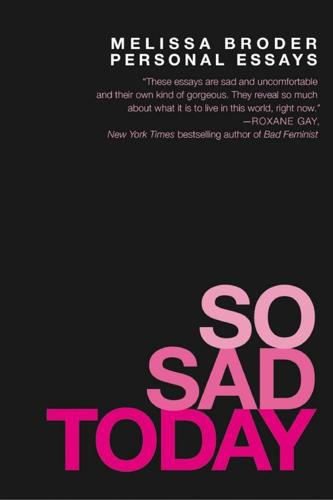
So Sad Today: Personal Essays
by
Melissa Broder
Published 15 Mar 2016
Goodbye for now Him: Love to you. Goodbye. We did try reconnecting a few months later, as friends. That lasted for about a month. I did a good job of pretending to be a wingman-type bro, all casual and chill. But inside I was suffering. I didn’t want to just be friends. We would text about books, therapy, SSRIs, taking a shit at Walmart, but inside I was only wondering, Does he still feel ____________? I guess he was too. Things devolved quickly into sexts about the Roman Empire and romantic emails. Then I said goodbye again. He got back in touch. Then I said goodbye for good. What happens to the space that two people occupied together?
…
Keep Your Friends Close but Your Anxiety Closer SOMETHING WEIRD HAPPENED. A PERSON said that he was sorry to hear I’m still having panic attacks. He hopes I feel better soon. It was weird to hear someone express sympathy for mental illness in the way that they might for physical illness. I mean, I know my panic disorder is an illness. I take medicine for it (an SSRI). I see doctors: a psychiatrist monthly and a therapist weekly. The symptoms are palpable. Like a person living with chronic pain, I view every area of my life through the filter of visceral anxiety. From the sensation of suffocating to dizziness and dissociation, my entire nervous system is involved—adrenal glands included.
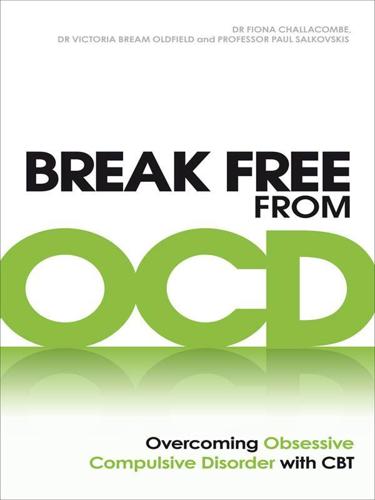
Break Free from OCD: Overcoming Obsessive Compulsive Disorder with CBT
by
Paul M. Salkovskis
Published 8 Sep 2011
In summary, the treatment of choice for both children and adults with OCD is Cognitive Behaviour Therapy (CBT), a form of talking therapy, including Exposure and Response Prevention (ERP). Many people find they also benefit with the additional support of medication alongside the therapy – Selective Serotonin Re-uptake Inhibitors (SSRIs) are usually the medications of choice for treating OCD. The website addresses are given in the Resources section (see here) so that you can read either the full guidance (which is not easy) or the version specially written for sufferers and carers. If you do decide to seek expert help, please remember that your therapist will not do the hard work; as usual, that is up to you.
…
109–10 safety-seeking behaviour 15, 58, 59 contamination OCD and 105–6, 182, 184, 188, 189, 190 counterproductive nature of 67–77, 78, 134 reassurance and 248 religious OCD and 128, 207–8 responsibility beliefs and 164 rumination OCD and 199, 200, 201 Theory A/B and 135, 153, 156 tolerating some anxiety and 162 selective attention 75–6 checking OCD and 89, 90 contamination OCD and 101, 106 religious OCD and 123, 125, 128 rumination OCD and 115 vicious flower diagram and 79, 275 Selective Serotonin Re-uptake Inhibitors (SSRIs) 222 self-assessment section: so do I have OCD? 19–26 do I have inflated responsibility ideas? 40–3 how are obsessions and compulsions affecting you? 25–6 self-compassion 271 self-criticism 45 self-esteem 237, 271 Social Phobia or Social Anxiety Disorder 236, 237, 271 Special Forces Training 159–60 starting to tackle your problem 133–70 challenge inflated responsibility 166–9 challenging your OCD 155–6 dealing with responsibility beliefs 164–5 finding out how the world really works: behavioural experiments 158–9 OCD bully 157 ‘taking the risk’ 156 the three choices 159–60 theory A/B 135–55 superstition and magical thinking 46, 61–2 ‘taking the risk’ 156 theory A/B 135–55, 172, 276 be objective 142–3 evidence for 137–41 implications of – what follows from each 142–51 Jennifer’s checking OCD 137–8, 143–6, 154 Jeremy’s rumination OCD 140, 148–50, 154–5 Johnson’s religious OCD 140–1, 150–1, 155 look out for the following OCD traps when considering evidence for 142 revisit your goals 154–5 so how do I know which is right?
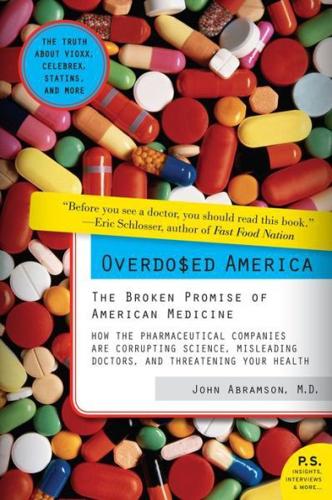
Overdosed America: The Broken Promise of American Medicine
by
John Abramson
Published 20 Sep 2004
(Most of us can think of times when we have experienced these unpleasant feelings.) Pfizer’s website for Zoloft promises that these symptoms can be treated with drug therapy. According to the Pfizer website, depression is an even more common disorder, affecting 20 million Americans each year. Published studies show that treatment with the new SSRI (selective seratonin reuptake inhibitor) antidepressants provides significant benefit to people suffering from both of these conditions. An exquisitely designed study (sponsored—to give credit where credit is due—by Pfizer, the manufacturer of Zoloft) randomized people suffering from social anxiety disorder into four groups: two of the groups were treated with Zoloft for 24 weeks and two with a placebo.
…
Keller, N. D. Ryan, M. Strober, et al., “Efficacy of Paroxetine in the Treatment of Adolescent Major Depression: A Randomized Controlled Trial (Abstract),” Journal of the American Academy of Child and Adolescent Psychiatry 40:762–772, 2001. 117 British drug authorities reviewed all nine studies: “SSRIs: Suicide Risk and Withdrawal (Editorial),” The Lancet 361:1999, 2003. 117 antidepressants (almost exclusively the newer ones): “Prescription Drug Expenditures in 2000,” op. cit. See also “Prescription Drug Expenditures in 2001: Another Year of Escalating Costs,” a report by the National Institute for Health Care Management Research and Educational Foundation, May 6, 2002, p. 11.
…
Philip Kitcher, Science, Truth, and Democracy, Oxford: Oxford University Press, 2001, p. xii. 242 “In a science-driven organization: Sheryl Gay Stolberg and Jeff Girth, “Drug Makers Design Studies with Eye to Competitive Edge,” New York Times, December 23, 2000. 242 the more important the consequences: Kitcher, op. cit., p. 96. 243 nine clinical studies: “SSRIs: Suicide Risk and Withdrawal (Editorial),” The Lancet 361:1999, 2003. See also Gardiner Harris, “Debate Resumes on the Safety of Depression’s Wonder Drugs,” New York Times, August 7, 2003. 243 task force of the American College of Neuropsychopharmacology: Gardiner Harris, “Panel Says Zoloft and Cousins Don’t Increase Suicide Risk,” New York Times.
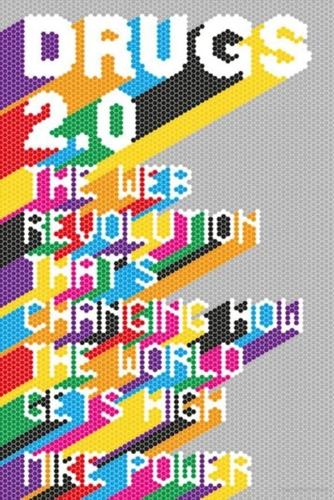
Drugs 2.0: The Web Revolution That's Changing How the World Gets High
by
Mike Power
Published 1 May 2013
Remaining stock was then smuggled to the UK, where a seizure of 25,000 pills, each containing 100 mg of the compound, was found in 1998. Many more got through, with fatal consequences. Nichols explained on Erowid why he had originally made the compound: We had been looking for drugs that cause the release of neuronal serotonin, with the expectation that they might have therapeutic value similar to the SSRIs [anti-depressants similar to Prozac]. I am sad to see it being used on the streets. I can’t imagine what pleasure it might produce in users, because our tests with similar compounds in rats showed the substances to have aversive or unpleasant effects.3 A user of the drug confirmed that in an Erowid report: I was screaming inside my head but couldn’t talk properly.
…
D., 1 Lamere, Timothy, 1 Lancet, The, 1 Latvia, 1 Leary, Timothy, 1, 2 Legalhighguides, 1 Leonhart, Michele, 1 Lewman, Andrew, 1, 2 Liberty Gold, 1 Life magazine, 1 lignocaine, 1 Lilly, John, 1 Linder, David, 1 Linnaeus, Carl, 1 Llewellyn, Max, 1 Lloyd, Daniel, 1 London Toxicology Group (LTG), 1, 2 Loomis, Katrina, 1 lotus leaves, 1 Louwagie, Pam, 1 LSD, 1, 2, 3, 4, 5, 6, 7, 8, 9 and bizarre behaviour, 1 and drug myths, 1 online sales, 1, 2, 3, 4 LSD: The Beyond Within, 1 magic mushrooms, 1, 2, 3, 4, 5, 6, 7, 8, 9 and drug laws, 1 Mail on Sunday, 1, 2, 3 Makriyannis, Alexandros, 1 Manchin, Joe, 1 Mancuso, David, 1 Manson, Alasdair, 1 marijuana (cannabis), 1, 2, 3 American policy on, 1 and decriminalization debate, 1, 2 droughts, 1 as gateway drug, 1 ‘grit weed’, 1 and Mexican drugs war, 1 online sales, 1, 2, 3 popularity, 1 reclassification controversy, 1 replacements, 1, 2, 3, 4, 5, 6, 7, 8, 9 Markoff, John, 1 Marquis reagent, 1 Mathewson, Nick, 1 May, Theresa, 1 Mayhew, Christopher, 1, 2 MBZP, 1 MDA, 1, 2, 3 MDAI, 1, 2, 3 MDMA (Ecstasy), 1 and bingeing, 1 and Bluelight community, 1 brain effects, 1 compared with mephedrone, 1, 2 compared with methylone, 1 deaths, 1, 2, 3 decline in quality, 1, 2, 3 and decriminalization debate, 1, 2 global drought, 1, 2, 3, 4 increase in supply, 1 interaction with MAOIs, 1 and internet, 1, 2, 3 introduction to Britain, 1 and mass culture, 1, 2 MDA variant, 1, 2 and mephedrone substitution, 1 ‘molly’, 1 online sales, 1, 2, 3 popularity, 1, 2 popularity in China, 1 prices, 1 and safrole synthesis, 1 synthesis, 1 testing, 1, 2, 3 TMA derivative, 1 use in psychotherapy, 1 MDP-2-P, 1 MDPV, 1, 2, 3, 4, 5 Measham, Fiona, 1 Mendez, Eva, 1 mephedrone (Meow), 1, 2, 3, 4, 5 deaths, 1 and decriminalization debate, 1, 2, 3 increased use, 1, 2, 3 marketing and legislation, 1, 2 popularity, 1 replacements, 1, 2, 3, 4 mescaline, 1, 2, 3, 4, 5, 6, 7, 8, 9 and MDMA, 1, 2, 3 methadone, 1 methamphetamine, see crystal meth methcathinone, 1, 2 methiopropamine, 1, 2 methoxetamine (MXE; 3-MeO-2-Oxo-PCE), 1, 2, 3, 4, 5 methylone, see BK-MDMA methylsafrylamin, 1 Mexican drugs war, 1, 2 Miami zombie cannibal case, 1 Milne, Hugh, 1 MixMag survey, 1, 2, 3 mod culture, 1 monoamine oxidase inhibitors (MAOIs), 1 Moore, Demi, 1 morning glory seeds, 1 morphine, 1, 2 Morris, Hamilton, 1 Morse, Samuel, 1 Mother of All Demos, 1 mreah prew phnom tree, 1 MtGox, 1 Mulholland, John, 1 MySpace, 1 Nakamoto, Satoshi, 1 naphyrone, see NRG-1 Nasmyth, Peter, 1 National Security Agency (NSA), 1 Native Americans, 1 NatWest, 1 NBC Dateline, 1 needle exchange programmes, 1 Negron, Senator Joe, 1 NeoDoves, 1, 2, 3, 4 Netherlands (Holland), 1, 2, 3, 4, 5, 6, 7 and magic mushrooms, 1 and PMK-glycidate, 1 N-ethyl ketamine, 1 neurotransmitters, 1, 2 see also dopamine; serotonin New Orleans Times Picayune, 1 New York Times, 1, 2 New Yorker, 1 New Zealand, 1 Nichols, David E., 1, 2, 3, 4, 5, 6 Niemoller, Mark, 1 nitrous oxide, 1 Nixon, Richard, 1, 2 non-steroidal anti-inflammatories (NSAIDs), 1 nootropics, 1 norephrenine, 1 norketamine, 1, 2 Norris, Charles, 1 NRG-1 and NRG-2, 1 nuclear magnetic resonance, 1, 2, 3 nutmeg, 1 Nutt, David, 1 Obama, Barack, 1, 2, 3, 4 Operation Adam Bomb, 1 Operation Ismene, 1, 2, 3 Operation Kitley, 1 Operation Pipe Dream, 1 Operation Web Tryp, 1, 2, 3, 4, 5, 6, 7, 8 opium, 1 O’Reilly, Tim, 1 organized crime, 1, 2, 3 Orthopedics, 1 Osmond, Humphrey Fortescue, 1, 2, 3 Otwell, Clayton, 1 Oxycodone, 1 packet-switching, 1, 2 Panorama, 1 paracetamol, 1 Parkinson’s, 1 Parry, Simon, 1 party pills, 1 PayPal, 1, 2, 3, 4 Payza, 1 Pecunix, 1 pentylone, 1, 2 pesticides/herbicides, 1, 2 peyote, 1, 2, 3, 4, 5 pharmacokinetics, 1 phenazepam, 1 phenethylamines, 1, 2, 3, 4, 5, 6, 7, 8, 9, 10 Pillreports.com, 1 Pink Floyd, 1 piperazines, 1, 2, 3, 4, 5 piperidines, 1 piperonal, 1 piracetam, 1 Platt, Lord, 1 PMA, 1, 2 PMK, 1 Poland, 1, 2 Poppo, Ronald, 1 Portugal, 1 potassium permanganate, 1 Preisler, Steve (Uncle Fester), 1, 2 Price, Gabrielle, 1 Princess Bride, The, 1 Project MKultra, 1 Prozac, 1, 2 psilocin, 1, 2 Psilocybe cubensis, 1 Psilocybe semilanceata (liberty caps), 1 psilocybin, 1, 2, 3, 4, 5 see also magic mushrooms psychiatric patients, treated with LSD, 1 Punch, 1 punks, 1 Pursat, 1 QR codes, 1 Quick Kill, 1 Rachmaninov, Sergei, 1, 2 Ramsey, John, 1, 2, 3, 4, 5, 6 Reding, Viviane, 1 Register, The, 1 Reid, Brian, 1 Reid, Fergal, 1 Research Chemical Mailing List (RCML), 1 research chemicals, 1 arrival of legal highs, 1 custom syntheses, 1, 2 growth in availability, 1 and law enforcement, 1 new compounds statistics, 1 online sales, 1 overdoses and mislabelling, 1, 2, 3 and retail market, 1 and substance displacement, 1 users, 1 Reynolds, Simon, 1 ring substitution, 1, 2, 3, 4, 5, 6, 7, 8 Ritalin, 1 Robbins, Joshua, 1 Robinson-Davis, Trevor, 1 Rolling Stone, 1 Russia, 1 Ryan, Mark, 1 Sabag, Doron, 1 Sabet, Kevin, 1 safrole, 1, 2, 3, 4 salmonella, 1 Saltoun, Lord, 1 Salvia divinorum, 1, 2 Sandison, Ronald, 1 sannyasin, 1 Santos, Juan Manuel, 1 sapo, 1 sarin, 1 Saunders, Nicholas, 1, 2 Saunders, Rene, 1 Schumer, Senator Charles, 1 sclerotia (truffles), 1 scopolamine, 1 Scroggins, Justin Steven, 1 Second World War, 1 Serious Organised Crime Agency (SOCA), 1, 2, 3 serotonin, 1, 2, 3, 4, 5, 6, 7 serotonin syndrome, 1, 2 Shafer, Jack, 1 Shamen, the, 1 Shanghai, 1, 2, 3, 4, 5 Shen-Nung, Emperor, 1 Shepton Mallet, 1, 2 Shulgin, Alexander creation of MDMA, 1, 2, 3, 4 creation of methylone, 1 and drug legislation, 1 internet presence, 1 PIHKAL and TIHKAL, 1, 2, 3, 4, 5, 6, 7, 8, 9, 10, 11, 12, 13 and sex, 1, 2 The Shulgin Index, 1 Shulgin, Ann, 1 Shultes, Richard Evans, 1 Silk Road, 1, 2, 3, 4, 5, 6, 7, 8 SKUNK!, 1 Skype, 1 Slocombe, Mike, 1 smartphones, 1 smartshops, 1, 2 Smith, Nicholas, 1 Smith, Sullivan, 1 Snowballs, 1, 2 Somalia, 1 SOS, 1, 2 Spath, Ernst, 1 speed, see amphetamines Spice, 1, 2, 3 spinal fluid, 1 Spirit Cave, 1 SSRIs, 1 Stanley, Owsley, 1 Starck, Phillipe, 1 Stewart, Maryon, 1 Steiner, Peter, 1 Stolaroff, Mylon, 1 Stonham, Lord, 1 street drugs, testing of, 1 SubCoca, 1, 2, 3 Sullivan, Brian, 1 Sweden, 1, 2, 3 drug laws, 1 Switzerland, 1 Symes, Trevor, 1 Synthetic Drug Control Act, 1 Syverson, Paul, 1 Taiwan, 1, 2, 3 Talk to Frank helpline, 1 Tandy, Karen P., 1 Tapsell, Paul, 1 Taylor, Polly, 1 Temple of the True Inner Light, 1 Temporary Class Drug Orders (TCDOs), 1, 2 Tettey, Justice, 1 Texas group, 1 TFM (The Farmer’s Market), 1 THC, 1, 2 TICTAC Communications, 1 tiletamine, 1 Time magazine, 1, 2 Timms, Dave, 1 tobacco, 1, 2 Tor network, 1, 2, 3, 4, 5 Transform, 1 truth serums, 1 tryptamines, 1, 2, 3, 4, 5, 6, 7, 8, 9, 10 Twitter, 1, 2 UK Border Agency, 1. 2 UK Drug Policy Commission, 1 UK laws Dangerous Drugs Act (1920), 1 Defence of the Realm Act (DORA), 1 Medicines Act (1968), 1, 2 Misuse of Drugs Act (1971), 1, 2, 3, 4, 5, 6, 7, 8, 9 Pharmacy Act (1868), 1 Police Reform and Social Responsibility Act (2011), 1 Regulation of Investigatory Powers Act (RIPA), 1 Serious Crime Act (2007), 1 UKLegals, 1 United Nations Office on Drugs and Crime, 1 United Nations treaties, 1, 2 United States of America drug testing, 1 illegal drug use, 1 incarceration rate, 1 internet speeds, 1 Prohibition era, 1 research chemicals manufacture, 1 US Department of Defense, 1 US Drug Enforcement Agency (DEA), 1, 2, 3, 4, 5, 6, 7, 8, 9, 10 US drug legislation, 1, 2, 3, 4, 5, 6 flaws in analogue laws, 1 and marijuana replacements, 1 see also American Analog Act US National Drug Control Strategy, 1 US Navy, 1, 2 Urban1, 2 urea, 1 Usenet, 1, 2, 3, 4, 5, 6 V Festival, 1 Valium, 1, 2, 3 Van den Berg, Paul, 1 van Dijk, Peter, 1 VICE, 1 Vietnam War, 1 Voice of America, 1 Voodoo Fest, 1 Wain, David John, 1 Wainwright, Louis, 1 Wainwright, Rob, 1 Wasson, R.
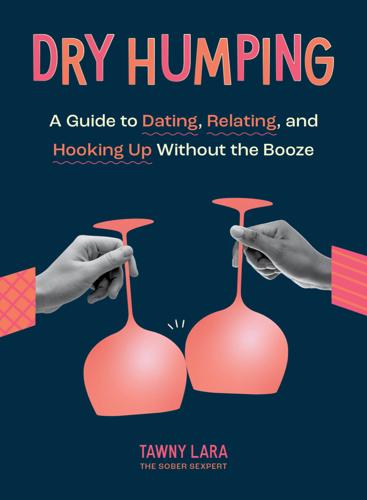
Dry Humping: A Guide to Dating, Relating, and Hooking Up Without the Booze
by
Tawny Lara
Published 19 Sep 2023
An herbalist can help you find the right botanical blend, teach you how to properly dose, and show you how to source the ingredients sustainably. Medicinal plants have been around since long before Western medicine’s “pop a pill for quick effects” approach became the norm. Herbal medicines, similar to SSRIs or a new skincare routine, must be taken regularly before any noticeable physical effects. You’re not going to have a cup of ashwagandha tea, then start humping your neighbors. (Or if you do, that says more about you than about the tea. But hey, no judgment here!) Remember to honor the rich history of Indigenous cultures where these plant medicines are found.
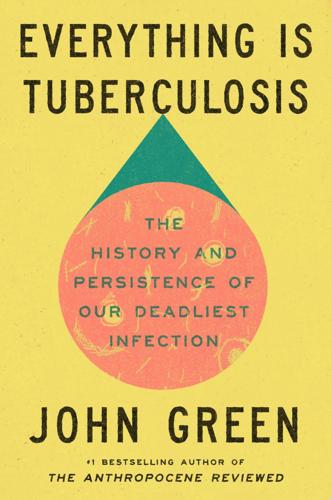
Everything Is Tuberculosis: The History and Persistence of Our Deadliest Infection
by
John Green
Published 18 Mar 2025
In her book Curing Their Ills, Megan Vaughan tells us, “In early medieval France a priest performed the ritual of separation in which the leper stood in a grave whilst the priest threw three spadefuls of earth on her or his head, announcing that they were ‘dead to the world’, but would be ‘reborn in god.’ ” But this way of imagining leprosy is not inherent to the disease—in fact, Vaughan points out that in precolonial Africa, leprosy was not especially feared or stigmatized, and certainly was not seen as a cause for removal from the social order. When I was initially diagnosed with an anxiety disorder in the late 1980s, the first SSRI medications were very new. Pathological anxiety was not seen primarily—at least among my peers and caregivers—as a biomedical phenomenon, but instead as an overdeveloped personality trait. It was as likely to be healed by faith as by science. (In fact, I found great relief from my anxiety through religion and ritual.)
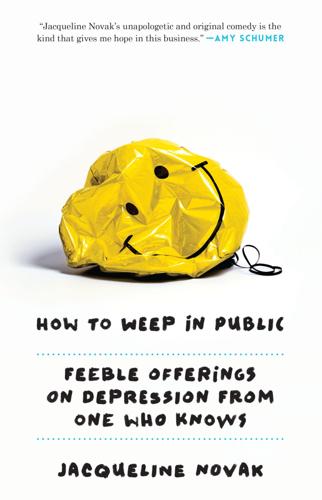
How to Weep in Public: Feeble Offerings From One Depressive to Another
by
Jacqueline Novak
Published 1 Mar 2016
I felt like my belly was lying, but I turned a blind eye. My focus on belly fat was a bit silly, but because depression so often reduces everything to meaninglessness, a vain and physical preoccupation can be a great way to stay grounded. I was preoccupied, for example, with my hemorrhoids for many years. They were a highlight of my depression. An SSRI I was taking was making me very constipated, but in my eagerness to keep a blockage from happening, I would rally some ancient warrior spirits to come to my aid and really make it rain on that toilet. I developed a strategy. I would adjust myself on the toilet so that each ass cheek had as wide a grip on its side of the seat as possible—so that my anus wasn’t hidden deep in a crack of two cheeks, but fully exposed, and reaching toward the toilet water with all its might.

Player One
by
Douglas Coupland
Published 30 Jun 2011
Being different is hard, and being different in the New Normal is going to be harder still. The New Normal. You people still on earth are now inhabiting an era in which all human personality characteristics are linked to some form of brain feature. Personality is a slot machine, and the cherries, lemons, and bells are your SSRI system, your schizophrenic tendency, your left/right brain lobalization, your anxiety proclivity, your wiring glitches, your place on the autistic and OCD spectrums — and to these we must add the deep-level influences of the machines and systems of intelligence that guided your brain into maturity.
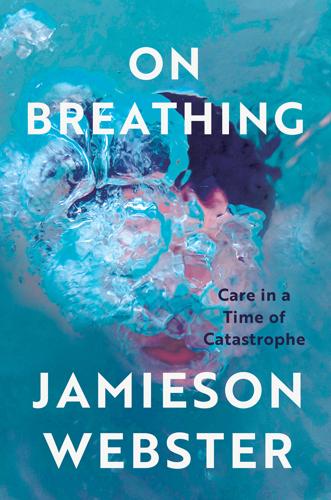
On Breathing
by
Jamieson Webster
Published 20 Feb 2025
A colleague who works with the homeless told me she was taught to rub her knuckles on a person’s chest to see if they are slipping into a coma. “Does it check their breathing?” I asked. “No,” she said, “I think it just hurts a lot.” Knuckle was the word a woman used in the New York Times to describe her clitoris after taking SSRIs for a decade. She is among those who claim they have never recovered from the sexual numbness that came from taking depression medication. Meanwhile, psychiatrists insist they are just depressed from not taking their drugs. So, they would be numb with or without them? Depression is obviously a cause for suicide, but so is chronic sexual dysfunction.

Freedom Without Borders
by
Hoyt L. Barber
Published 23 Feb 2012
Silver and Other Precious Metals Mining Stocks Here are some silver mining companies worth looking at: Apex (SIL-AMEX) Coeur D’Alene Mines (CDE-NYSE) ECU Silver (ECU.V-CDNX) Endeavour Silver (EDR.V-CDRNX) Gammon Lake (GRS-AMEX) Hecla (HL-NYSE) IMA Exploration (IMR-AMEX) Pan American Silver (PAAS-NASDAQNM) Silvercorp Metals (SVM.TO) Silver Standard (SSRI-NASDAQNM) Silver Wheaton (SLW.TO) Sterling (SLG.V-CNDX) Western Silver (WTZ) In Gold and Silver Bema (BGO-AMEX) Golden Star (GSS-AMEX) Miramar (MNG-AMEX) In Copper, Gold, Silver, and Zinc NovaGold (NG-AMEX) In Silver and Copper Phelps Dodge (PD) In Gold and Copper Northern Dynasty (NAK-AMEX) In Uranium Camico (CCO-TO) Cameco Corp.
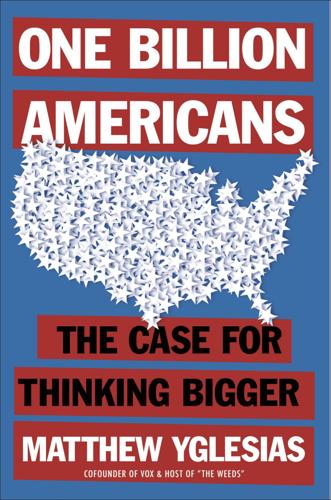
One Billion Americans: The Case for Thinking Bigger
by
Matthew Yglesias
Published 14 Sep 2020
In practice, of course, most of this work is done by women, and women’s wages have risen faster than men’s over the past generation or two, making the opportunity cost increase especially large. Most of these changes, to be clear, are good. Americans would not want to return to the material living standards of 1960 with rotary phones, three-channel televisions, inefficient cars, small houses, and no statins, beta-blockers, or SSRIs. But even change for the better requires adjustments. And we have not really adjusted our policies to consider the basic economics of modern family life. Indeed, to the extent that our policies have shifted, they’ve often shifted in the wrong direction—with higher education in particular becoming more burdensome at the worst possible time.
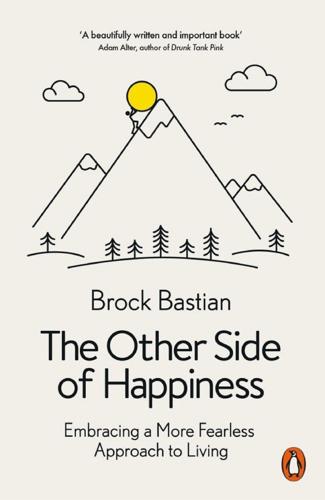
The Other Side of Happiness: Embracing a More Fearless Approach to Living
by
Brock Bastian
Published 25 Jan 2018
They have also found these same individuals experience more sadness and depression; i.e., when the brain cannot release enough opioids, people tend to feel more sad and depressed. This is not dissimilar to the role of the neurochemical serotonin in depression. Drugs that aim to alleviate depression are called Selective Serotonin Re-uptake Inhibitors (SSRIs), which enable higher levels of serotonin to remain in the brain, reducing feelings of sadness and depression. A failure to release a sufficient level of opioids in the brain has a similarly depressing effect on our moods. This finding further supports the idea that distinct types of pain – physical and emotional – are regulated by similar neural systems.
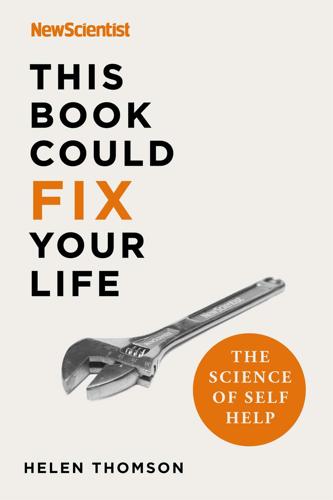
This Book Could Fix Your Life: The Science of Self Help
by
New Scientist
and
Helen Thomson
Published 7 Jan 2021
There is a risk to taking sedatives of course, so any use would have to balance the drawbacks and benefits, but the researchers involved suggested that there may be people for whom heartbreak is so distressing that it warrants such measures. Others have suggested that a cure for love already exists in the form of selective serotonin re-uptake inhibitors, or SSRIs. A common side effect of these widely prescribed antidepressants is a blunting of emotional responses, including towards loved ones, so it has been proposed that they might be helpful in treating the anguish that can follow a failed relationship. And while you might be familiar with taking paracetamol for a painful headache, have you ever considered that it might help get you over your emotional heartache, too?
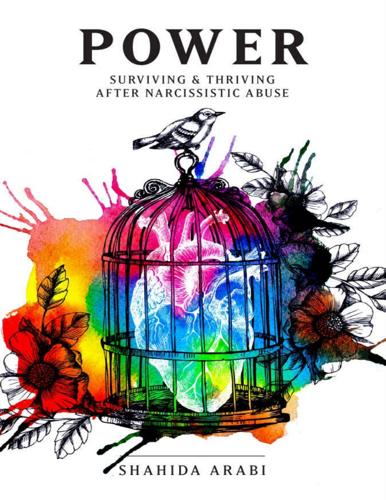
Power
by
Shahida Arabi
Published 11 Jan 2017
Someone who is well-versed and validating in this topic can help you to uncover the wounds that you may not be aware of beneath the surface. I’ll talk more about the different types of therapy available in the section, “Traditional Healing Methods Explained.” Medications—There are, of course, medications that can help if you are struggling with severe, crippling anxiety or depression such as SSRIs. However, they are beyond the scope of this book to discuss. Please always consult your psychiatrist or mental health professional regarding the best medication for you to take. Do not ever “replace” medication you are taking with any of these tools, as they are meant as a supplement to your self-care regimen, not a replacement for therapy.

The Rise of Superman: Decoding the Science of Ultimate Human Performance
by
Steven Kotler
Published 4 Mar 2014
More critically, anandamide also inhibits our ability to feel fear, even, possibly, according to research done at Duke, facilitates the extinction of long-term fear memories. Lastly, at the tail end of a flow state, it also appears (more research needs to be done) that the brain releases serotonin, the neurochemical now associated with SSRIs like Prozac. “It’s a molecule involved in helping people cope with adversity,” Oxford University’s Philip Cowen told the New York Times, “to not lose it, to keep going and try to sort everything out.” In flow, serotonin is partly responsible for the afterglow effect, and thus the cause of some confusion.
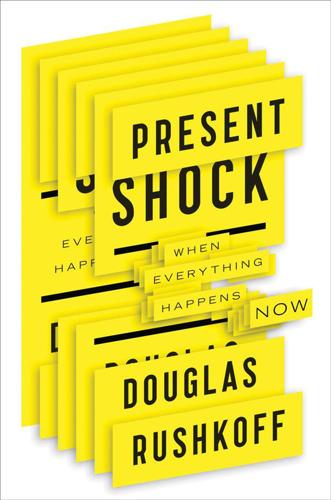
Present Shock: When Everything Happens Now
by
Douglas Rushkoff
Published 21 Mar 2013
Take note of yourself as you operate a remote control. You don’t click the channel button because you are bored, but because you are mad: Someone you don’t trust is attempting to make you anxious. You understand that it is an advertiser trying to make you feel bad about your hair (or lack of it), your relationship, or your current SSRI medication, and you click away in anger. Or you simply refuse to be dragged still further into a comedy or drama when the protagonist makes just too many poor decisions. Your tolerance for his complications goes down as your ability to escape becomes increasingly easy. And so today’s television viewer moves from show to show, capturing important moments on the fly.
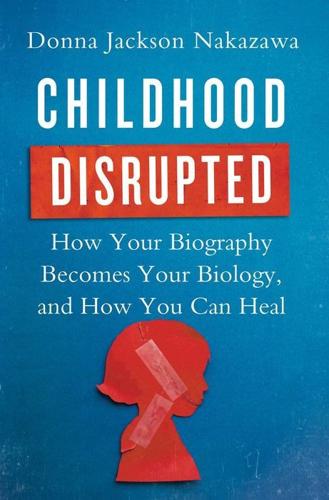
Childhood Disrupted: How Your Biography Becomes Your Biology, and How You Can Heal
by
Donna Jackson Nakazawa
Published 6 Jul 2015
As you breathe in and out with long, slow breaths through mindful breathing, you also strengthen and recharge the activity of your underactive parasympathetic nervous system. Although physicians can prescribe many medications that can dampen the activity of the sympathetic nervous system, including valium and SSRIs, there is no medication that can help to boost the parasympathetic nervous system. Your breath is the best calming treatment known. To establish a daily meditation practice, it’s important to start with an attitude of unconditional friendliness toward yourself, and give permission for the meditation experience to be whatever it is, says Tara Brach, PhD, meditation teacher and psychologist.

A Year of Living Danishly: My Twelve Months Unearthing the Secrets of the World's Happiest Country
by
Helen Russell
Published 14 Sep 2015
At the time of researching, the self-help industry was worth $11 billion in the US and had earned UK publishers £60 million over the last five years. Rates of antidepressant use had increased by 400 per cent in the last fifteen years and were now the third most-prescribed type of medication worldwide (after cholesterol pills and painkillers). Even those lucky few who’d never so much as sniffed an SSRI or picked up a book promising to boost their mood had probably used food, booze, caffeine or a credit card to bring on a buzz. But what if happiness isn’t something you can shop for? I could almost feel the gods of lifestyle magazines preparing to strike me down as I contemplated this shocking thought.

Magic Pill: The Extraordinary Benefits and Disturbing Risks of the New Weight-Loss Drugs
by
Johann Hari
Published 7 May 2024
Some people taking chemical antidepressants experience a long-lasting boost (and if you’re one of those people, my advice is to carry on taking them)—but sadly, the best long-term trial of the drugs found that most people slowly become depressed again over time. That’s what happened to me when I took Paxil, a popular SSRI antidepressant. It’s possible that, similarly, the decline in weight caused by these drugs will fade over five or ten years, so a decade from now, I’ll be back to the weight I would have been if Ozempic had never been invented. The third scenario is that they are like the statins we are prescribed for heart problems.
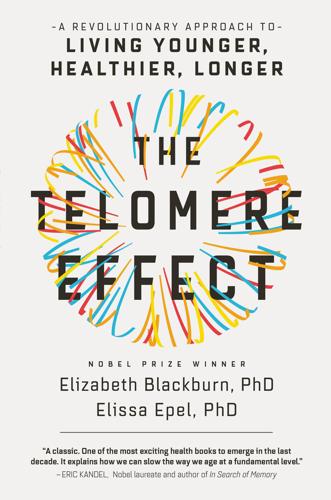
The Telomere Effect: A Revolutionary Approach to Living Younger, Healthier, Longer
by
Dr. Elizabeth Blackburn
and
Dr. Elissa Epel
Published 3 Jan 2017
We believe that in these situations, the cells are producing more telomerase in response to telomere shortening, in a (sadly) ineffectual effort to build back the telomere segments that are being lost. More support for this idea: Our colleague Owen Wolkowitz, a psychiatrist at UCSF, has been examining how telomerase might help with depression. Give depressed people an antidepressant (an SSRI), and their high telomerase levels climb up even further! The more that telomerase goes up, the more likely it is that their depression will lift.7 It is possible that the efforts of the immune cells to replenish their lost telomeres reflect what is happening in the brain, with neurons doing the same thing.
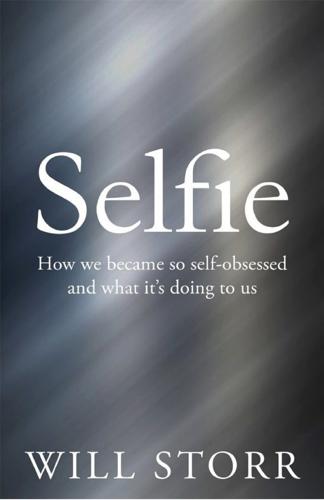
Selfie: How We Became So Self-Obsessed and What It's Doing to Us
by
Will Storr
Published 14 Jun 2017
Just as this book was going to press, a new study (‘A Systematic Review of Personality Trait Change Through Intervention’, Brent Roberts et al., Psychological Bulletin, 5 January 2017) was published that found therapeutic interventions could have relatively large effects on neuroticism and much more moderate effects on other traits. Included in those therapeutic interventions were SSRIs and other drugs. Part of the effect seemed to be patients recovering from the crisis that sent them to seek help in the first place. One of the authors, Professor Brent Roberts, explained, ‘We’re not saying personality dramatically reorganizes itself. You’re not taking an introvert and making them into an extravert.
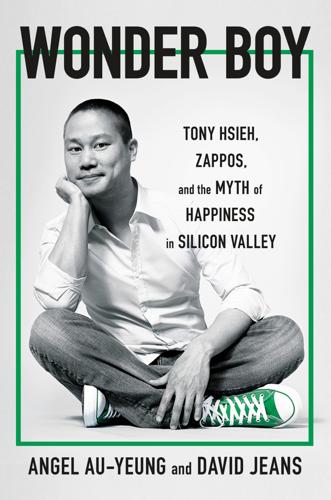
Wonder Boy: Tony Hsieh, Zappos, and the Myth of Happiness in Silicon Valley
by
Angel Au-Yeung
and
David Jeans
Published 25 Apr 2023
In 2000, the drug was tested: Berman, Robert, Cappiello, Angela, et al., “Antidepressant Effects of Ketamine in Depressed Patients,” Biological Psychiatry 47 (2000): 351–54, https://www.amg-ketamine.com/wp-content/uploads/2021/06/6-Antidepressant.pdf. “difficult-to-treat depression”: Tiger, Mikael, “A Randomized Placebo-Controlled PET Study of Ketamine’s Effect on Serotonin1B Receptor Binding in Patients with SSRI-Resistant Depression,” Translational Psychiatry (2020): art. 159, https://www.nature.com/articles/s41398-020-0844-4. “I think if you put ketamine”: “A Brief Chat with Dr. Karl Jansen,” Scotto, http://scotto.org/listing.php?id=178, accessed October 23, 2022. Could ketamine be the answer?: Baby Monster LLC v.

The Barbell Prescription: Strength Training for Life After 40
by
Jonathon Sullivan
and
Andy Baker
Published 2 Dec 2016
Phil has an extra one whenever he orders a pizza. Senna for the constipation caused by Phil’s inactivity and his Vicodin addiction. Simvastatin for hypercholesterolemia. Makes Phil’s diabetes more difficult to control and makes his muscles hurt. Hasn’t made his arteries much healthier though. Fibrate for hypertriglyceridemia. SSRI-of-the-Month Club for depression. Quetiapine for mood disturbances and sleep. Baby aspirin for coronary artery disease. Anti-platelet therapy. Clopidogrel for coronary artery disease. Another anti-platelet agent. Phil bruises and bleeds easily. Furosemide for chronic leg swelling. Another diuretic.
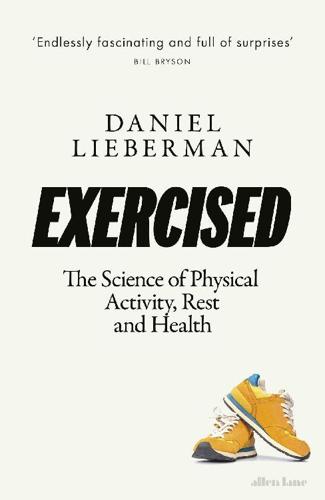
Exercised: The Science of Physical Activity, Rest and Health
by
Daniel Lieberman
Published 2 Sep 2020
One is to flood the brain with mood-altering chemicals. As a reminder, exercise heightens the activity of transmitting molecules in the brain, notably dopamine, serotonin, and norepinephrine.131 These neurotransmitters induce sensations of reward, well-being, arousal, and memory enhancement. Most pharmaceuticals such as SSRIs used to treat depression and anxiety manipulate levels of these neurotransmitters. Exercise also increases levels of other neurotransmitters, glutamate and GABA, that are often depleted in people with depression and anxiety.132 Additional mood-enhancing molecules turned on by exercise include endogenous opioids such as endorphins and endocannabinoids that inhibit pain and produce positive moods.133 Finally, as if this were not enough, remember that physical activity increases levels of BDNF and other growth factors that help maintain brain function.

Lonely Planet Sri Lanka
by
Lonely Planet
Tonic'sSEAFOOD$$ ( MAP GOOGLE MAP ; %026-493 1210; Golden Beach Cottage; meals Rs 500-1200; h11am-10pm) The beachside restaurant of Golden Beach Cottage has just a touch of refinement to bring some style to its dinners. There's always fresh fish, which is served with salad and fries, and the battered calamari is excellent as well. Lots of fresh-off-the-boat specials. oSana'sSRI LANKAN$$$ ( MAP GOOGLE MAP ; %077 700 4047; Sarvodaya Rd; mains Rs 500-2000; h8am-10pm) An example of why the Sarvodaya Rd strip is becoming one of the most interesting eating neighbourhoods on the east coast. This restaurant is a two-level driftwood dream that's staffed by charmers. The main menu is mostly under Rs 800, but you can splurge on lobster and other interesting seafood creations.

Human Diversity: The Biology of Gender, Race, and Class
by
Charles Murray
Published 28 Jan 2020
Neurocognitive function: Cognitive function, Episodic memory, Information processing speed, Logical memory (delayed recall), Logical memory (delayed recall) in mild cognitive impairment, Logical memory (delayed recall) in normal cognition, Logical memory (immediate recall) in mild cognitive impairment, Logical memory (immediate recall) in normal cognition, Reading and spelling, Verbal declarative memory, Verbal memory, Verbal memory performance (immediate recall change), Verbal memory performance (immediate recall level), Verbal memory performance (residualized delayed recall change), Verbal memory performance (residualized delayed recall level), Visual memory, Word reading, Working memory. Depression: Depressed affect, Depression, Depression (quantitative trait), Depressive symptoms, Depressive symptoms (MTAG), Depressive symptoms (SSRI exposure interaction), Depressive symptoms (stressful life events interaction), Major depressive disorder, Major depressive disorder (broad), Major depressive disorder (probable), Current major depressive disorder. Neuroticism: Neuroticism, Neuroticism (MTAG). Worry: Feeling worry, Worry, Worry too long after an embarrassing experience.